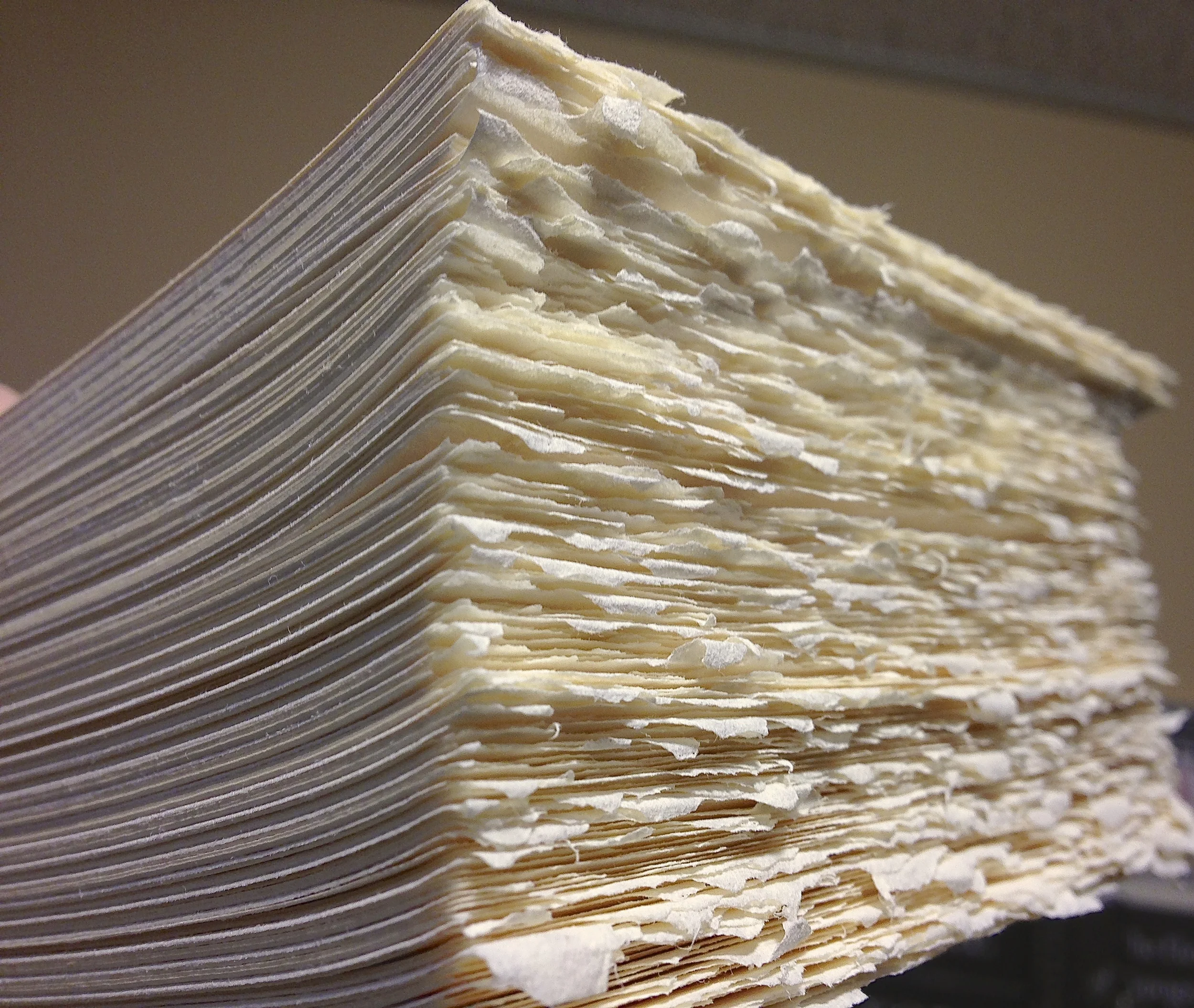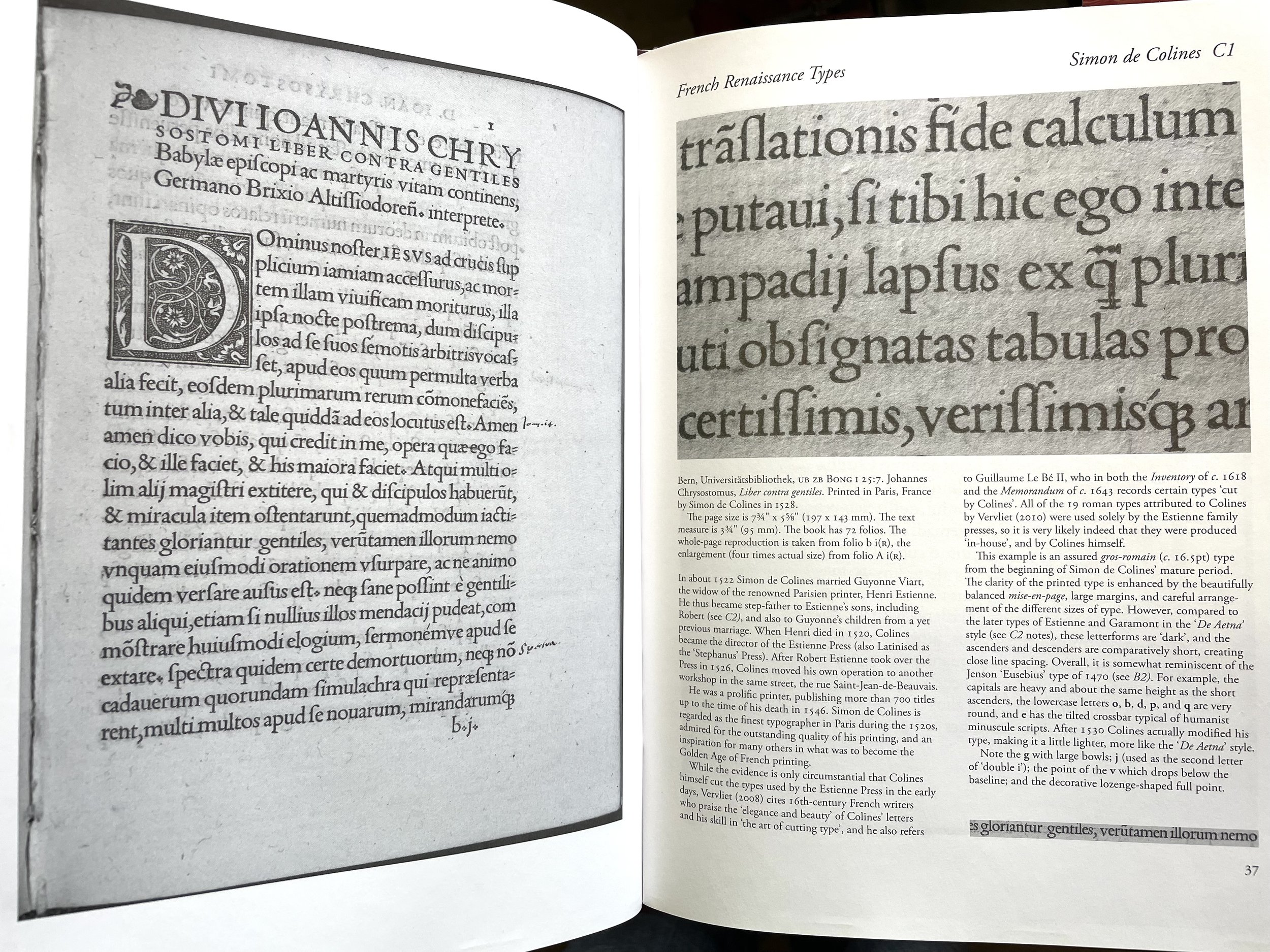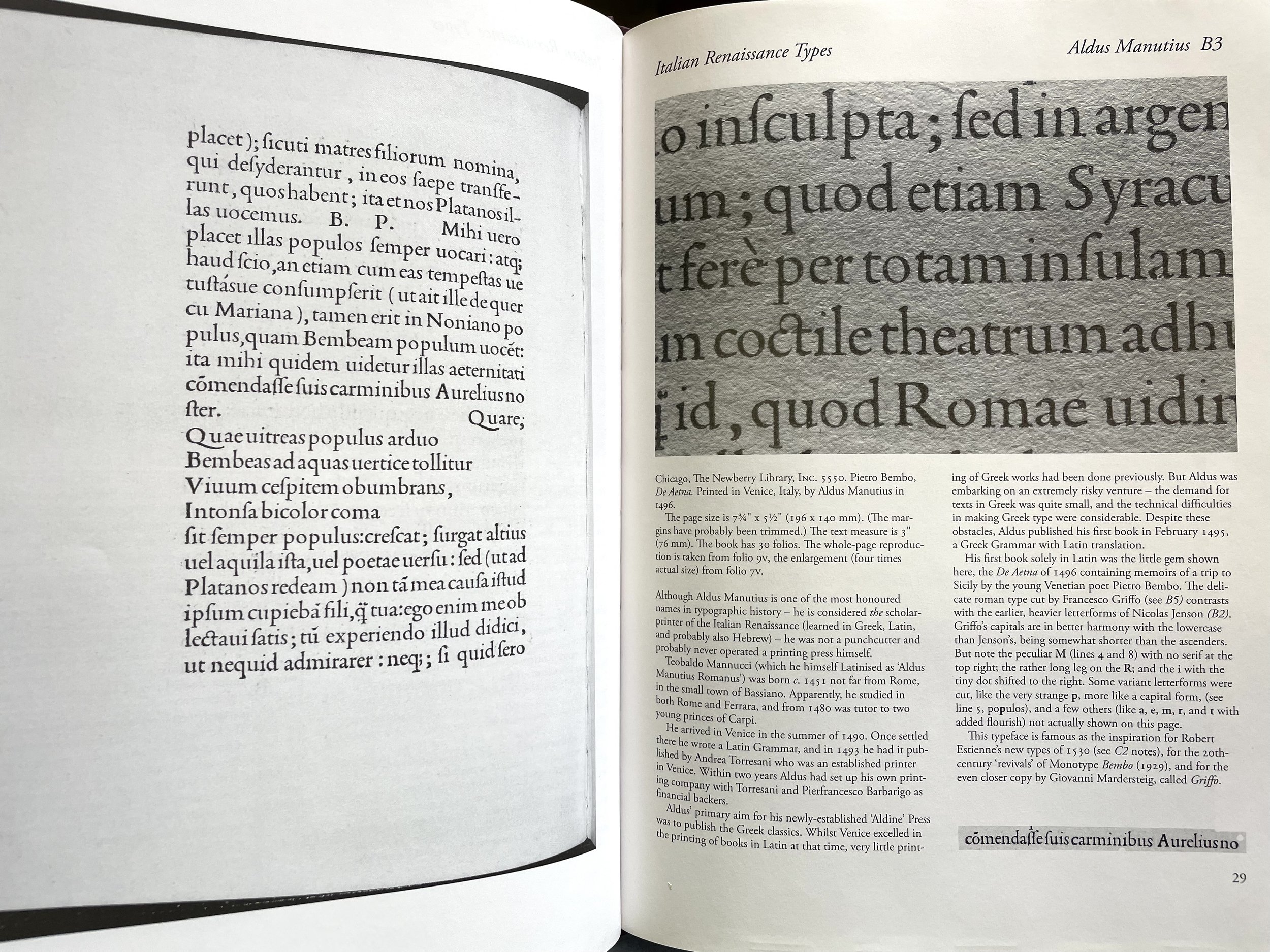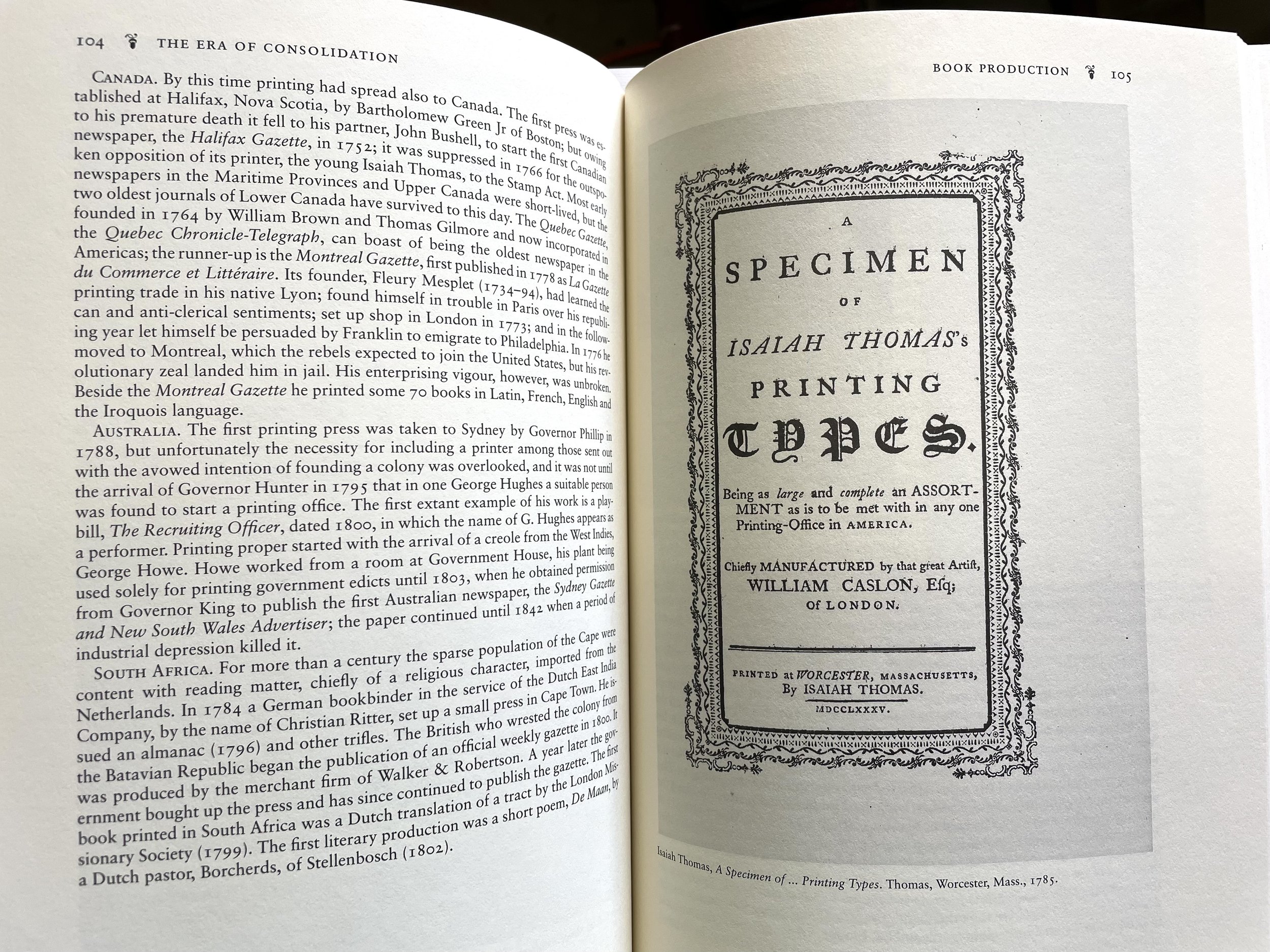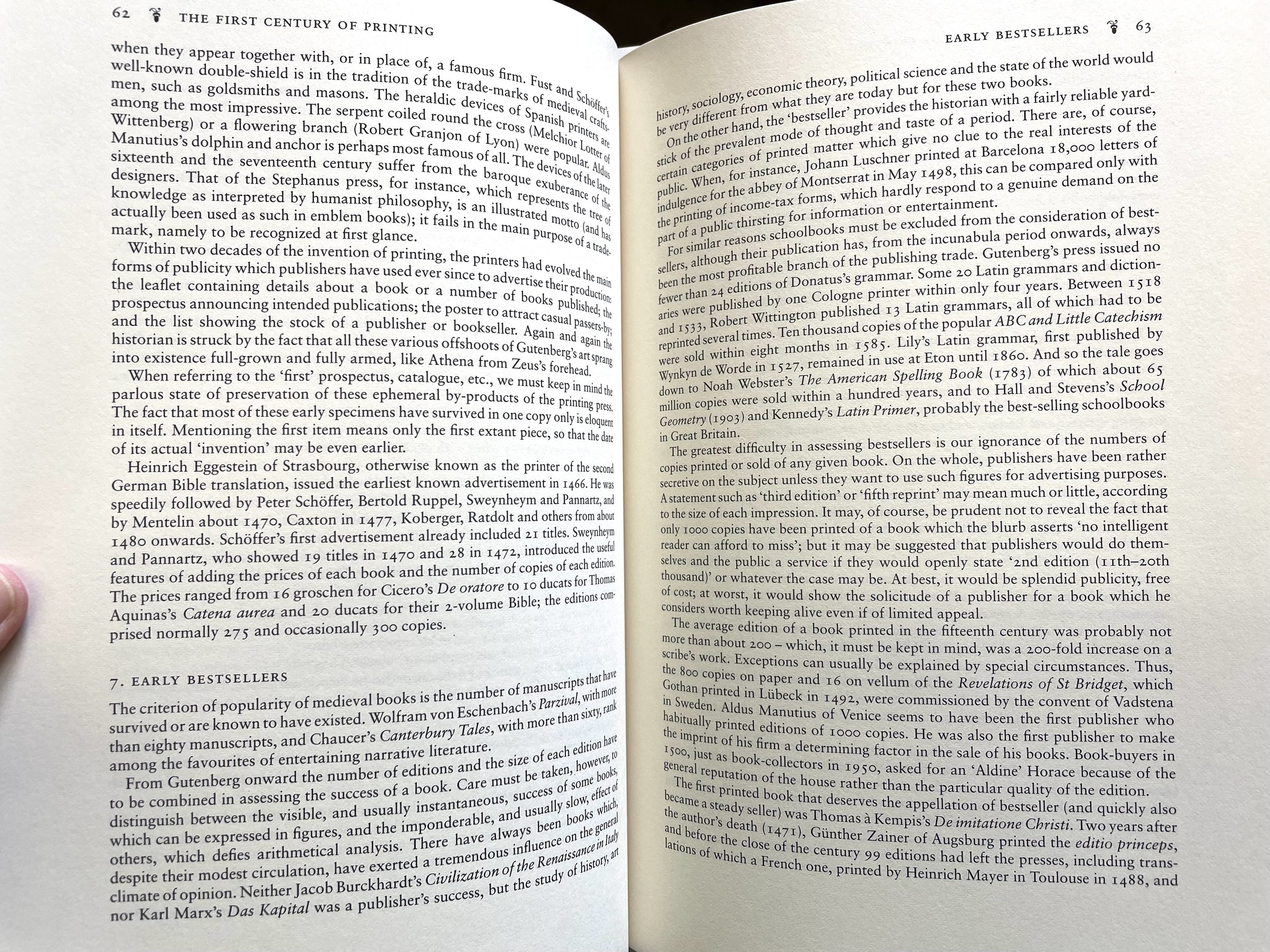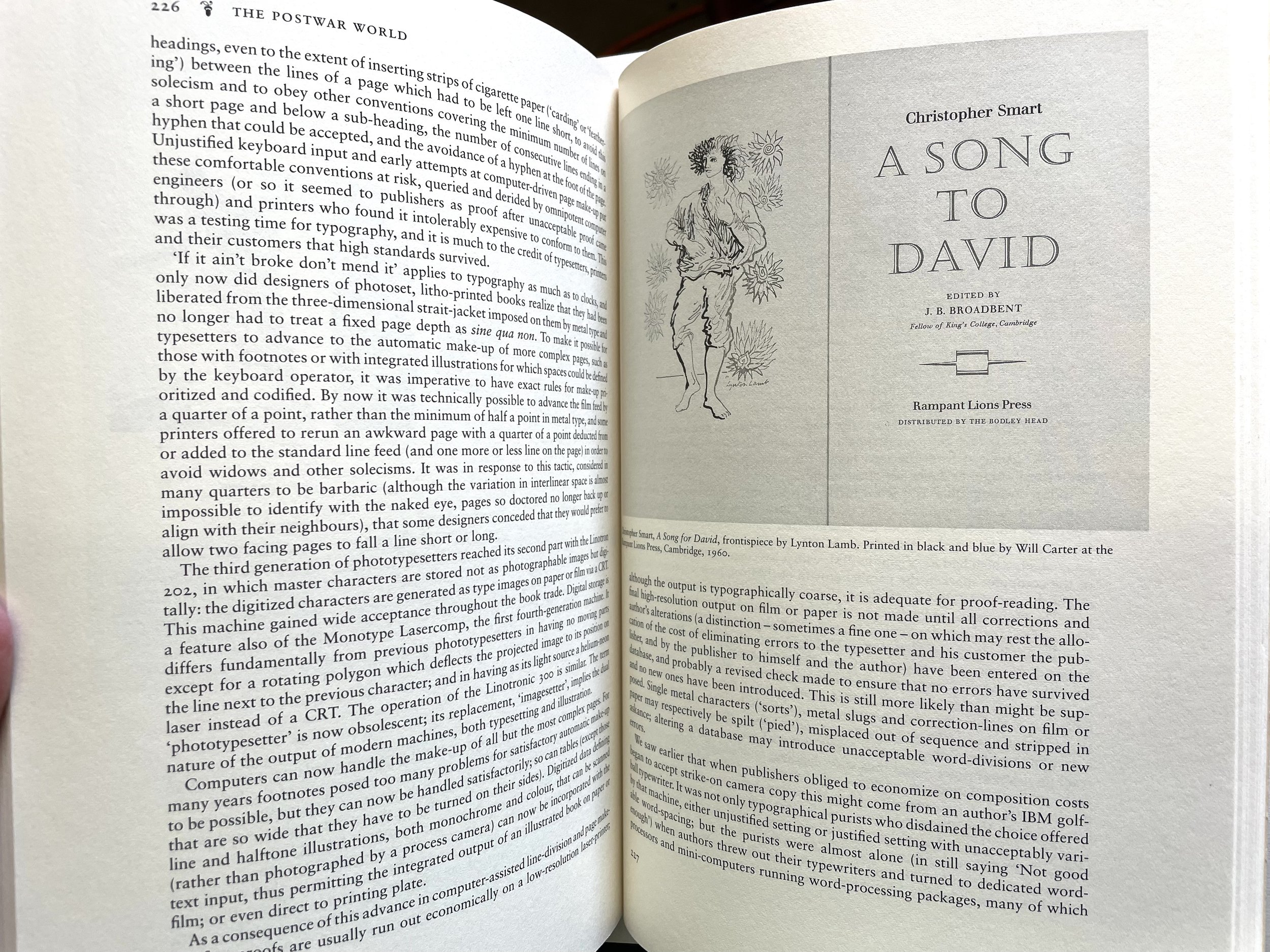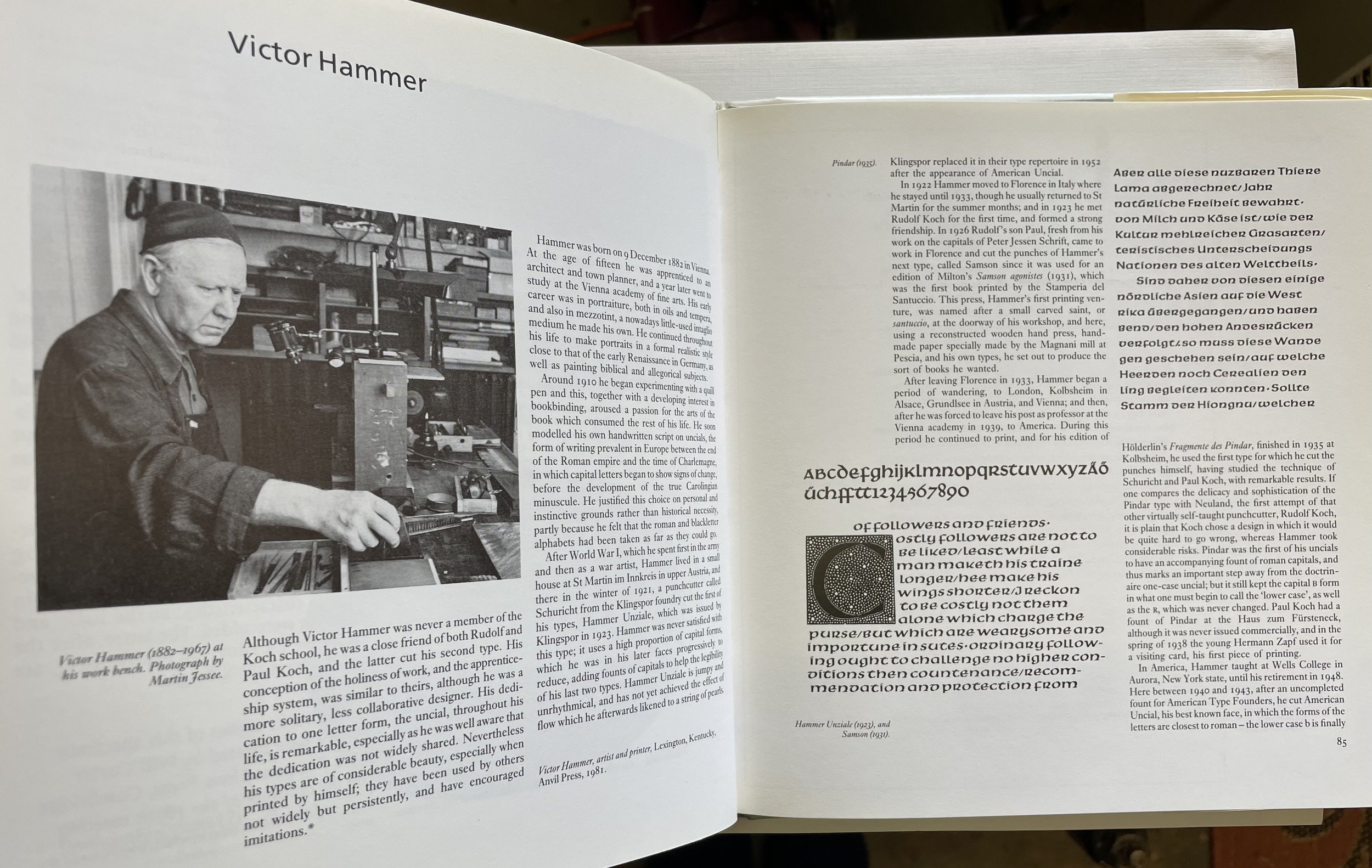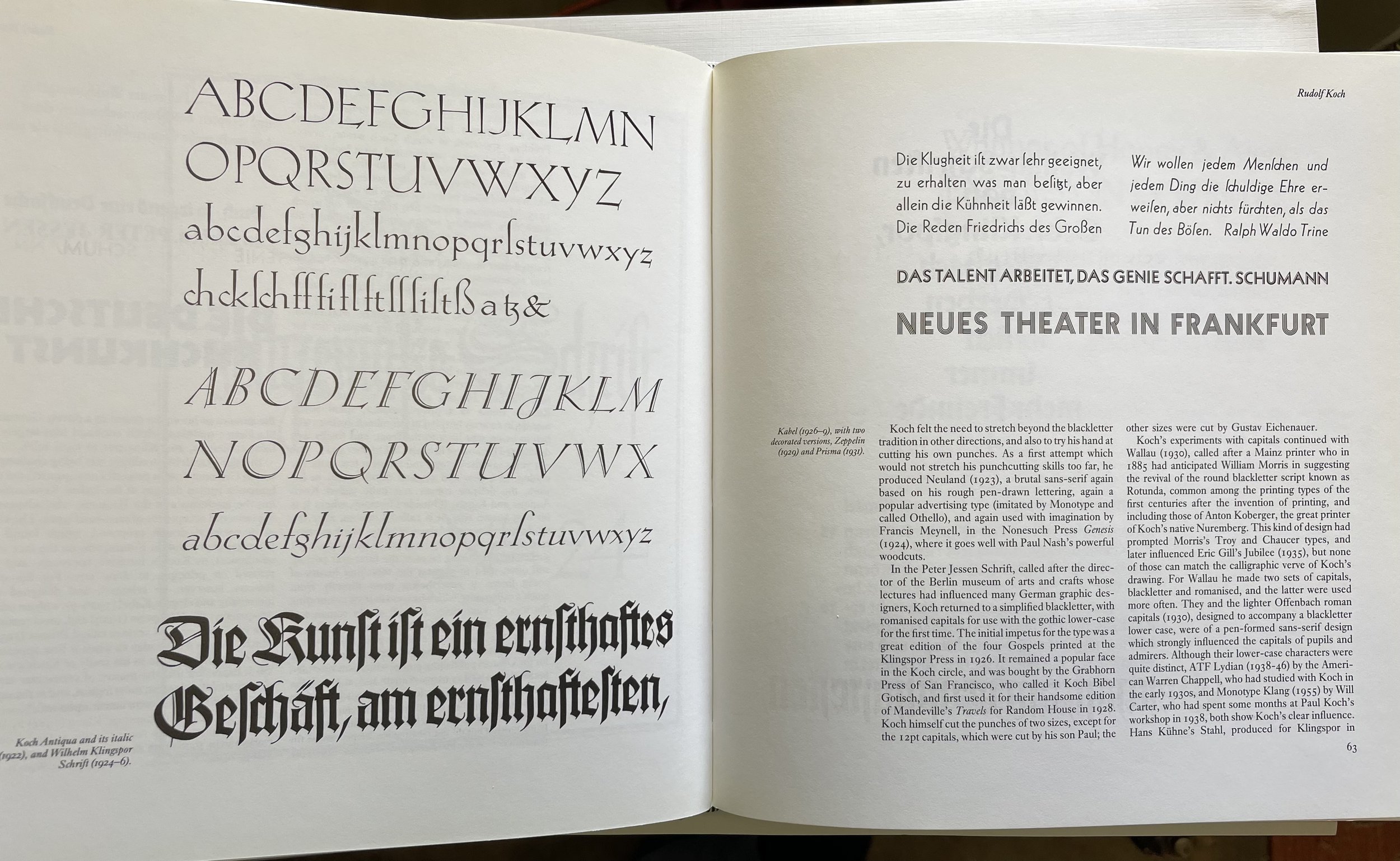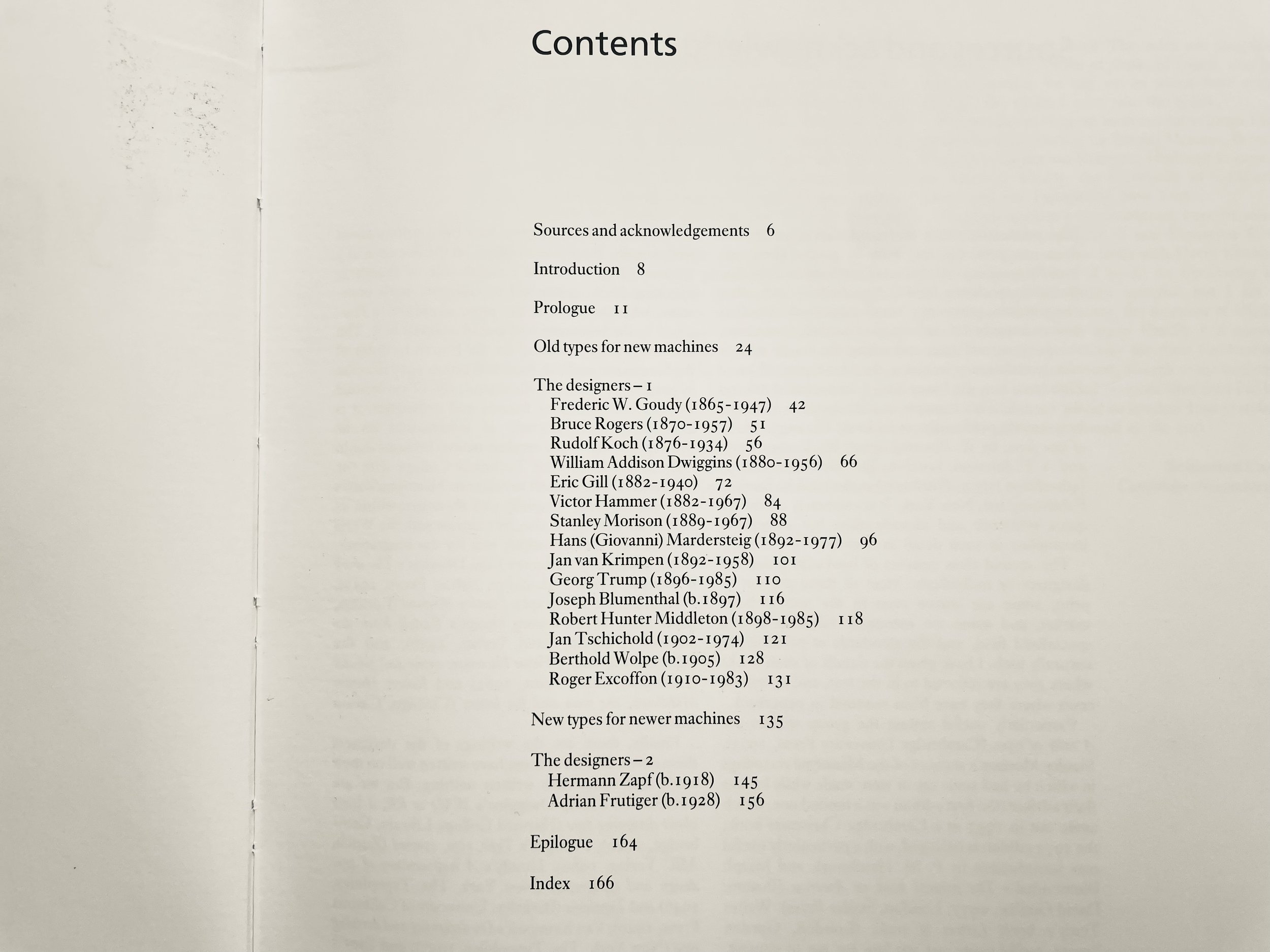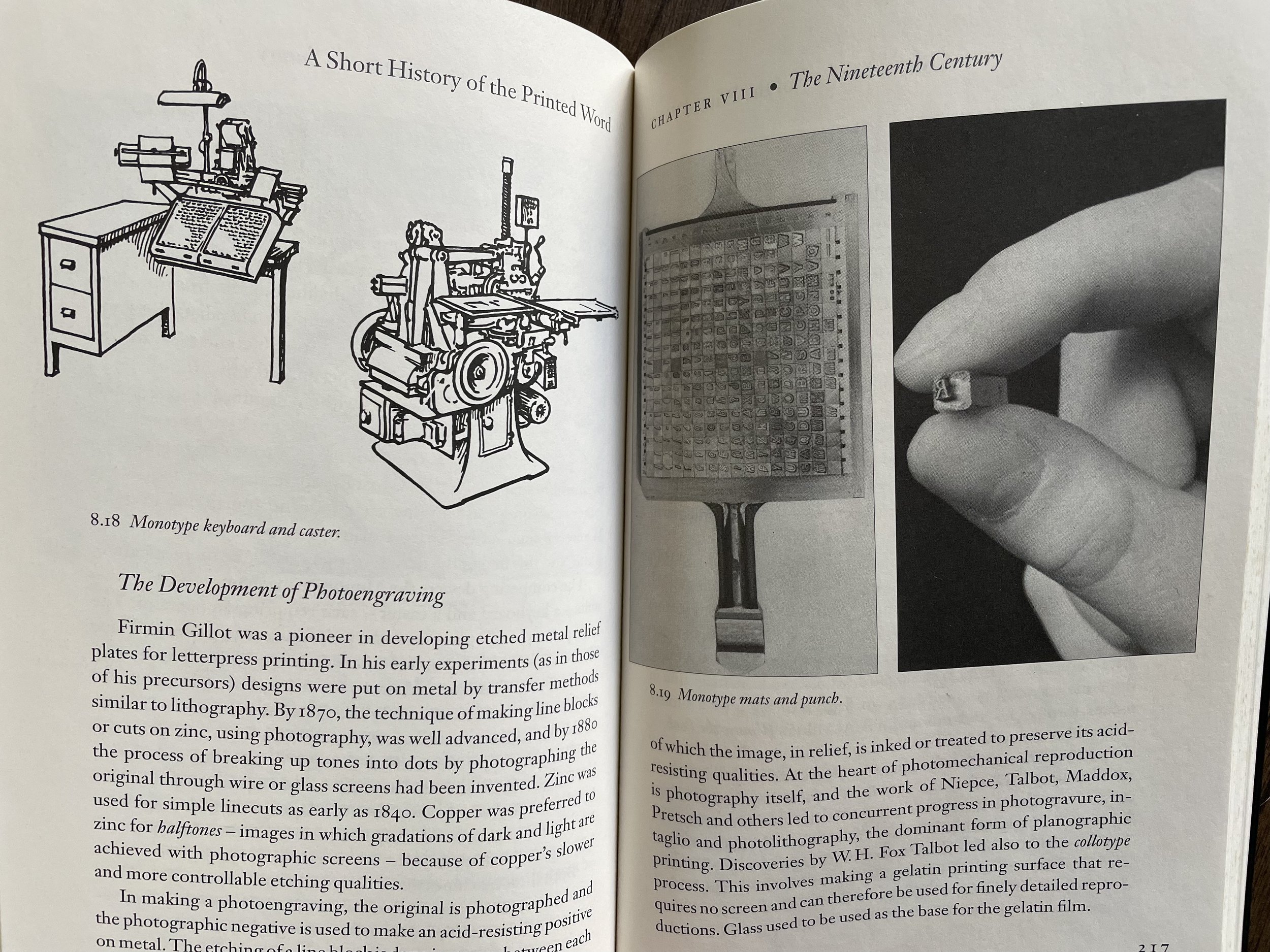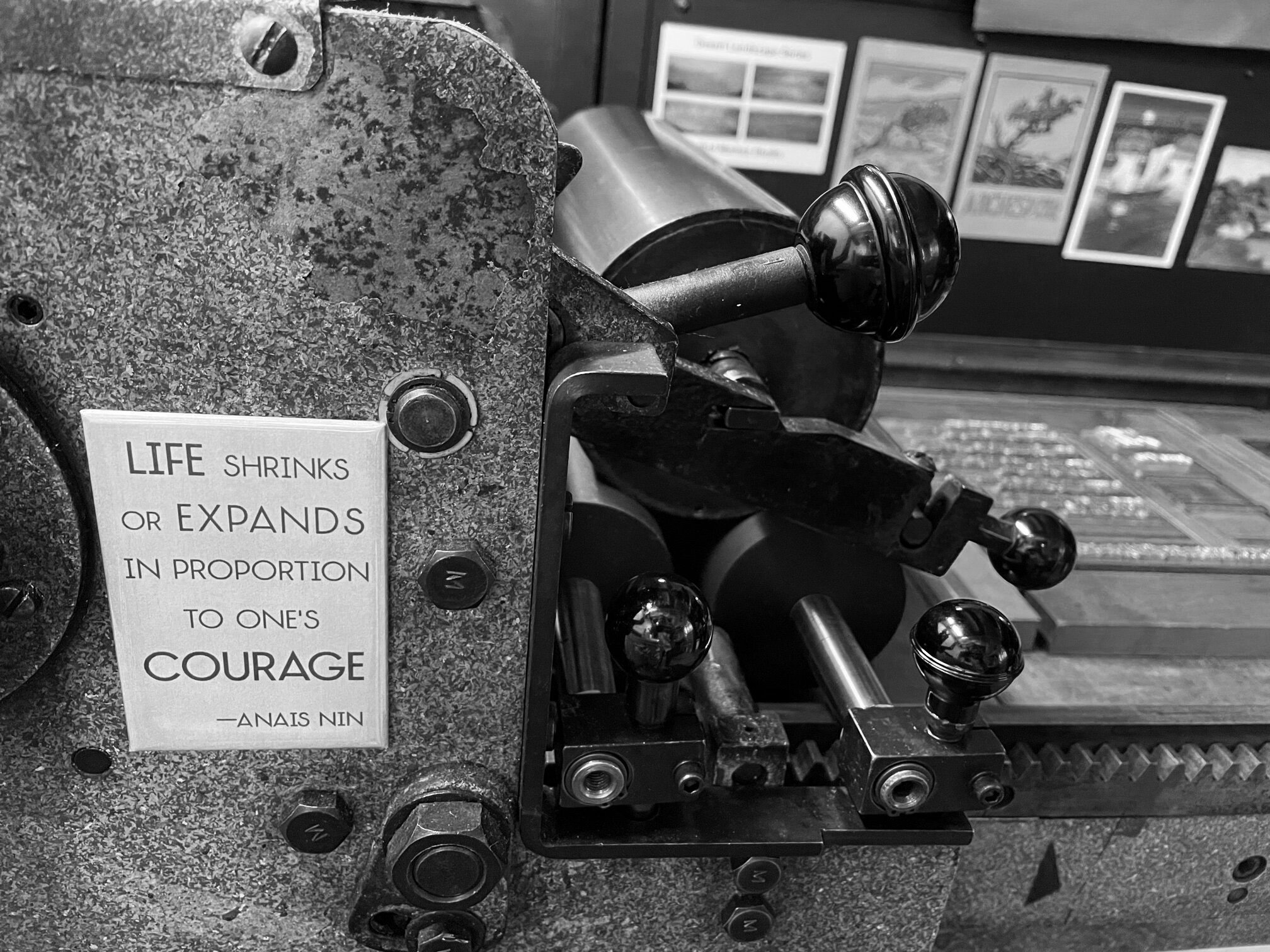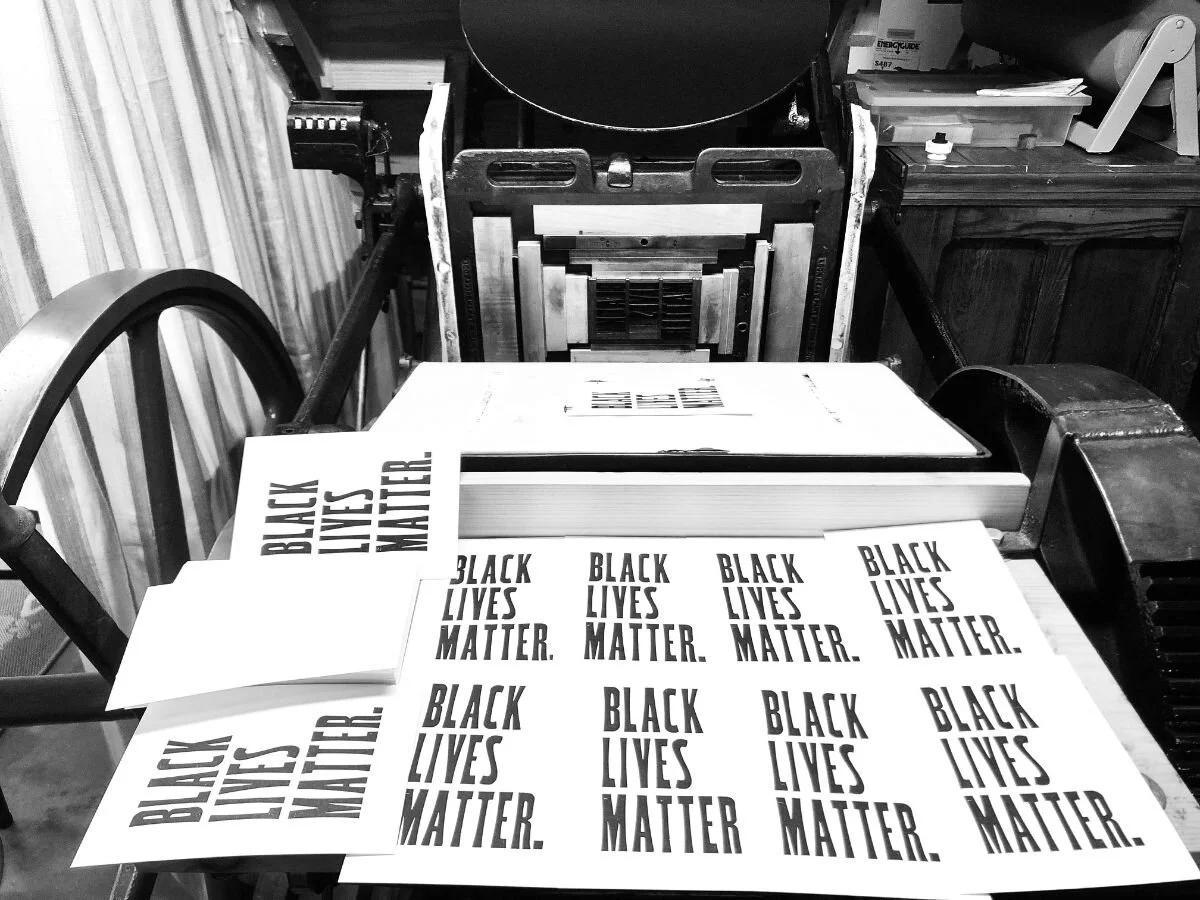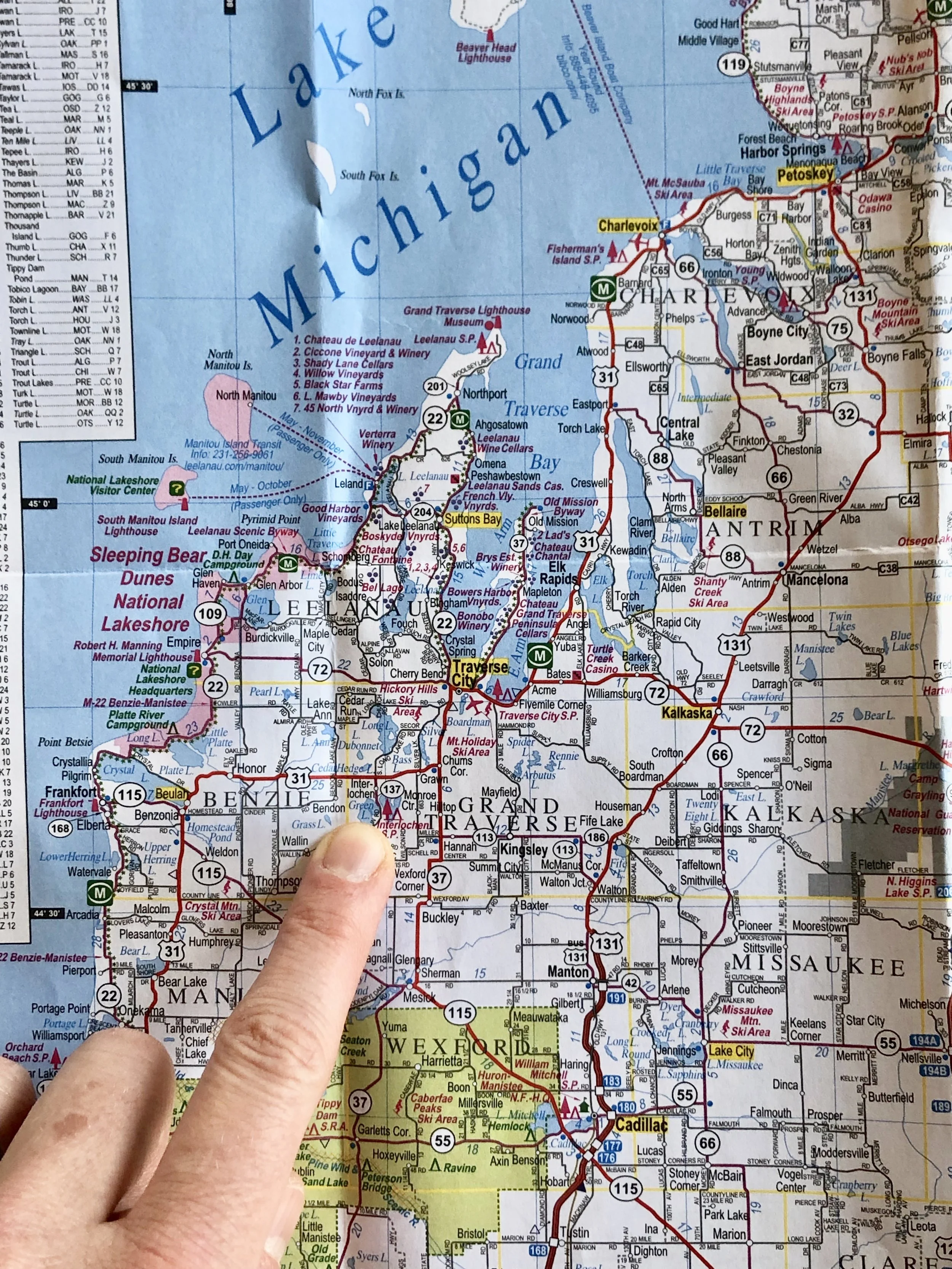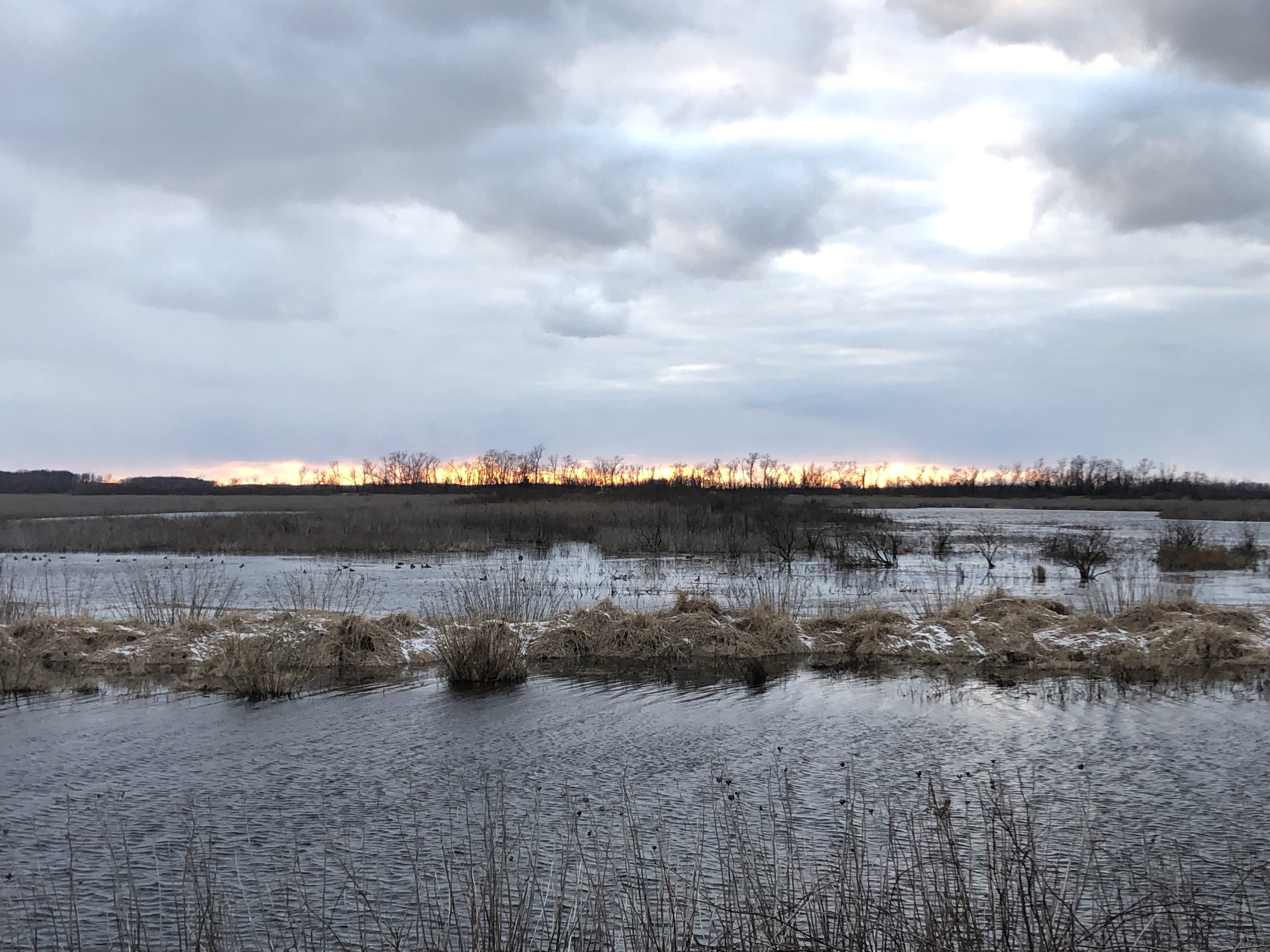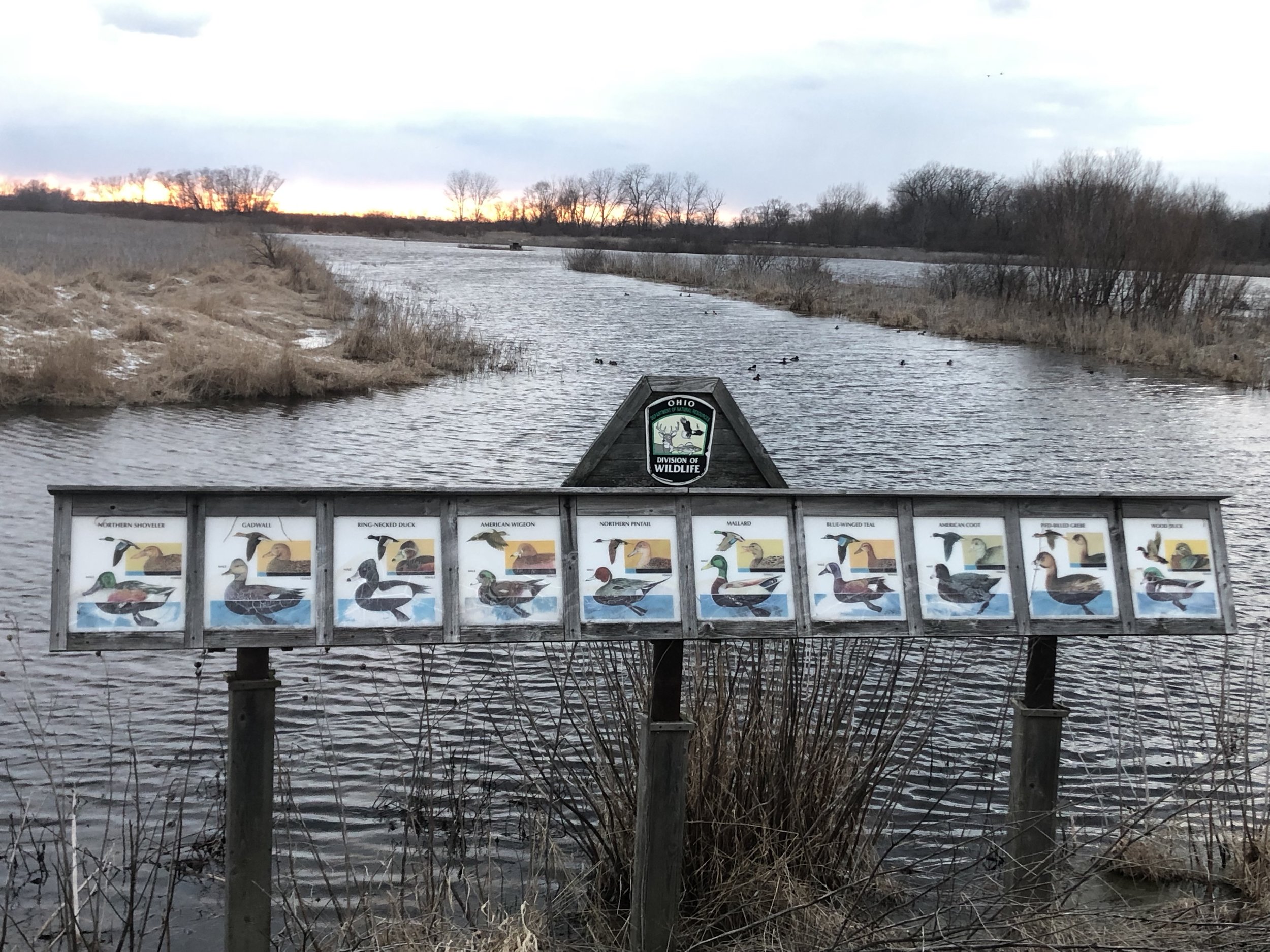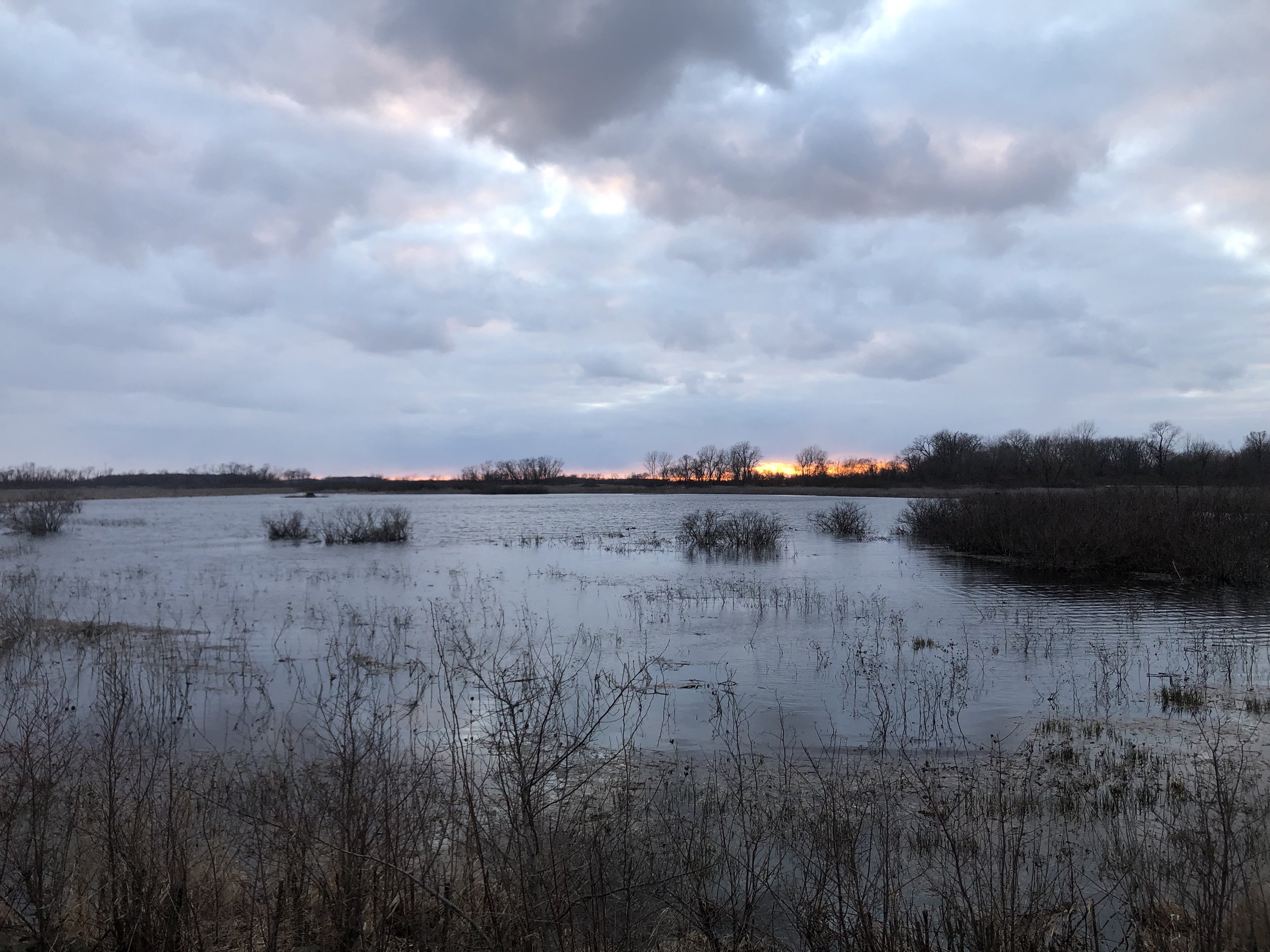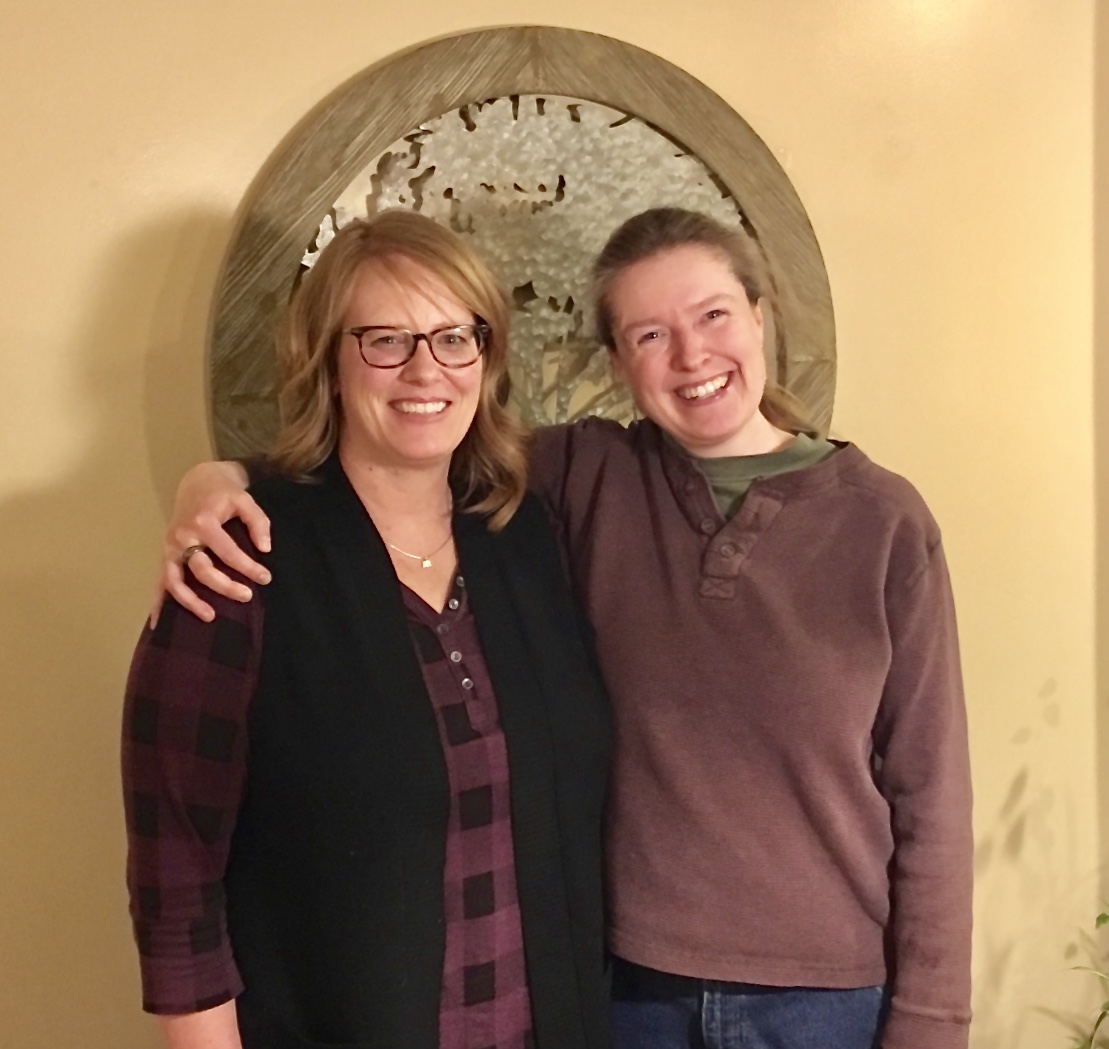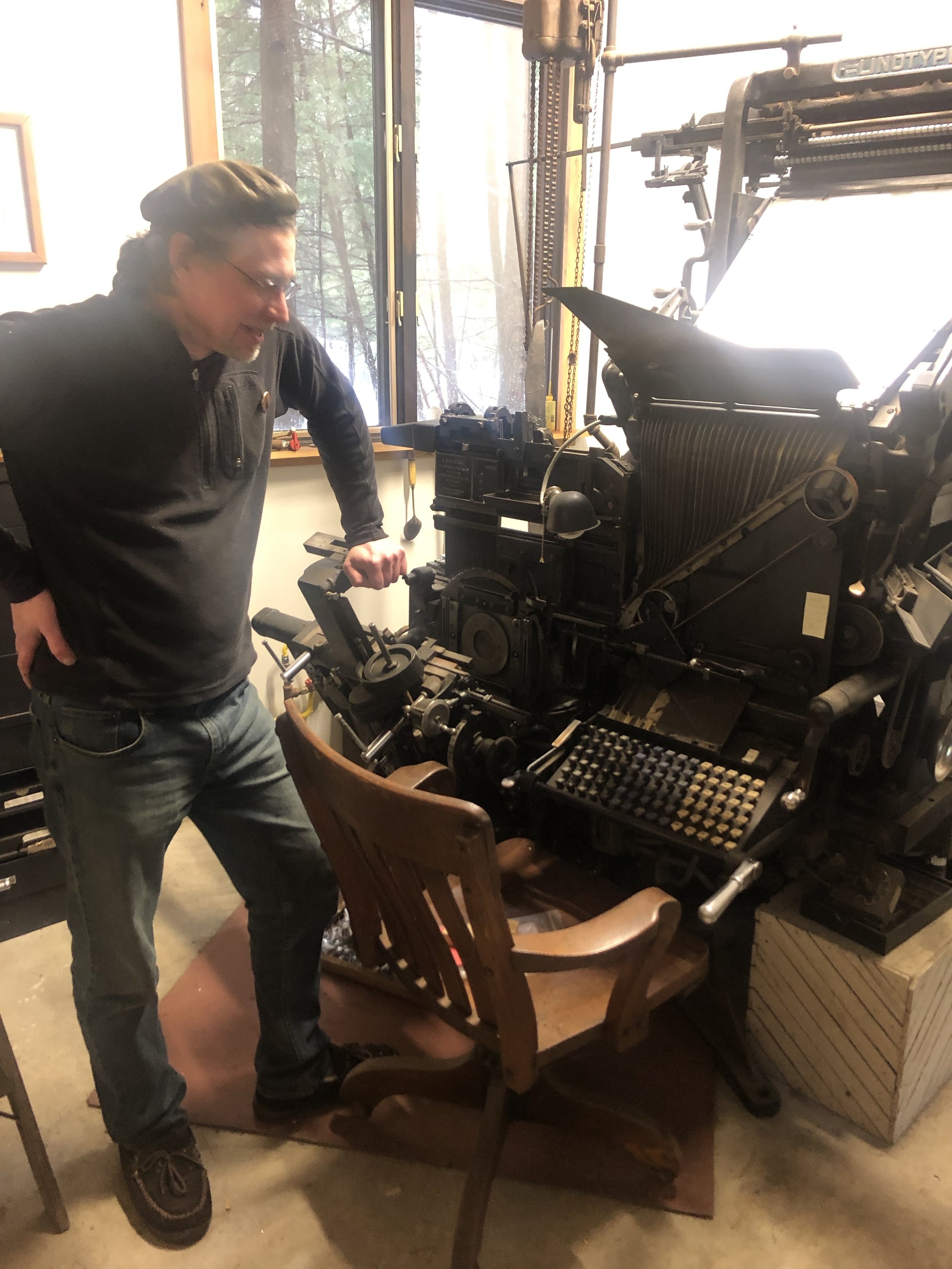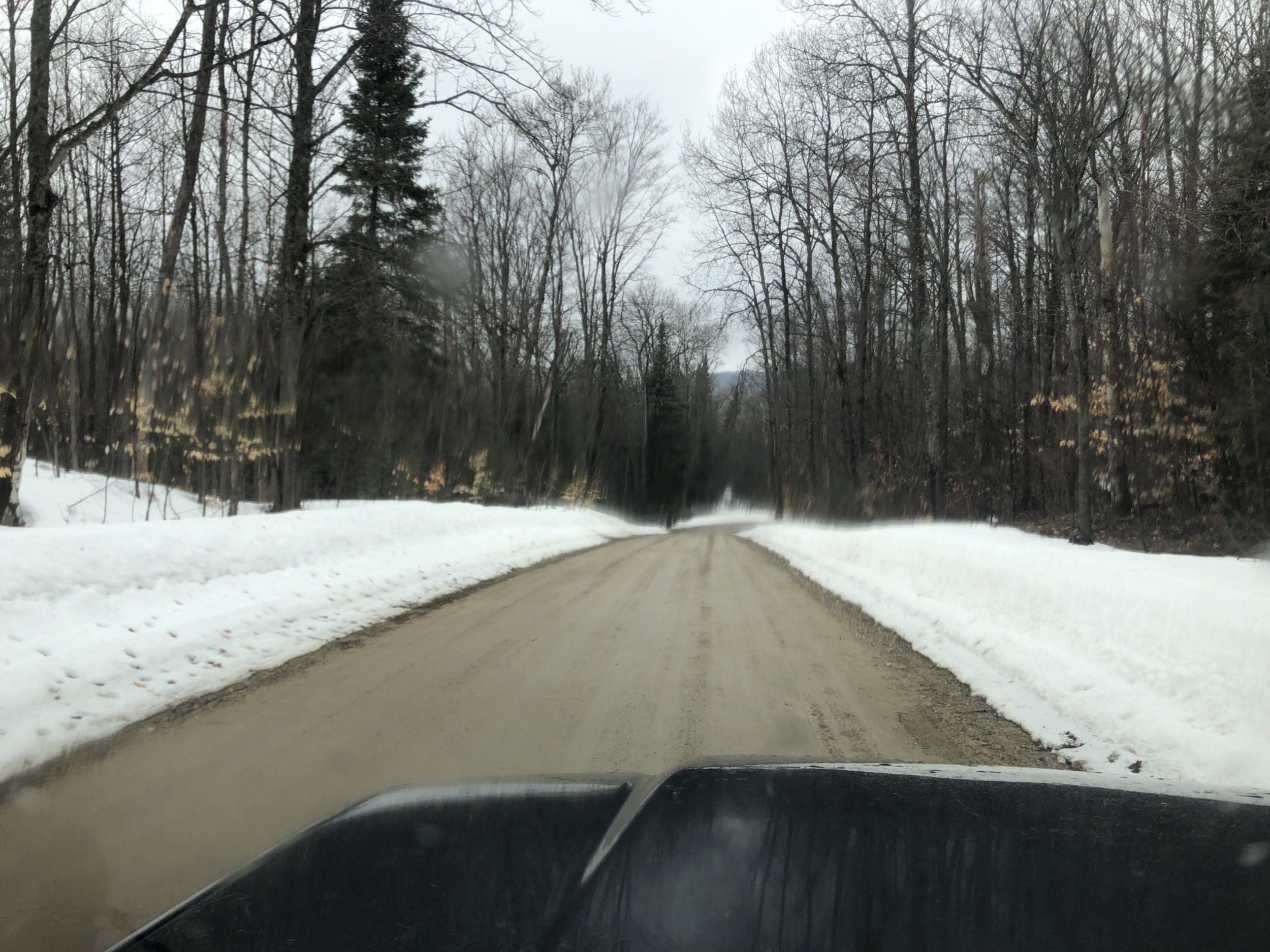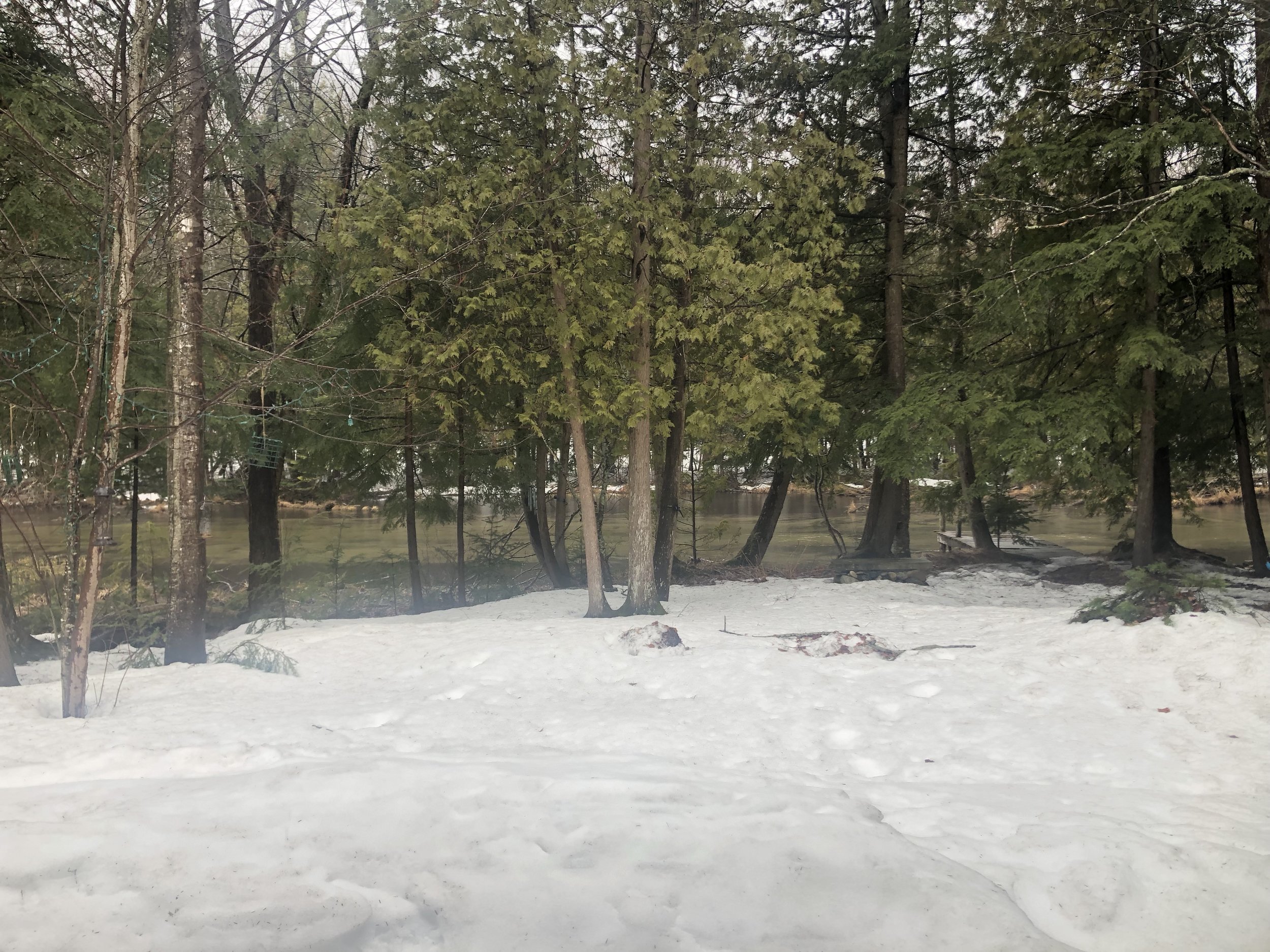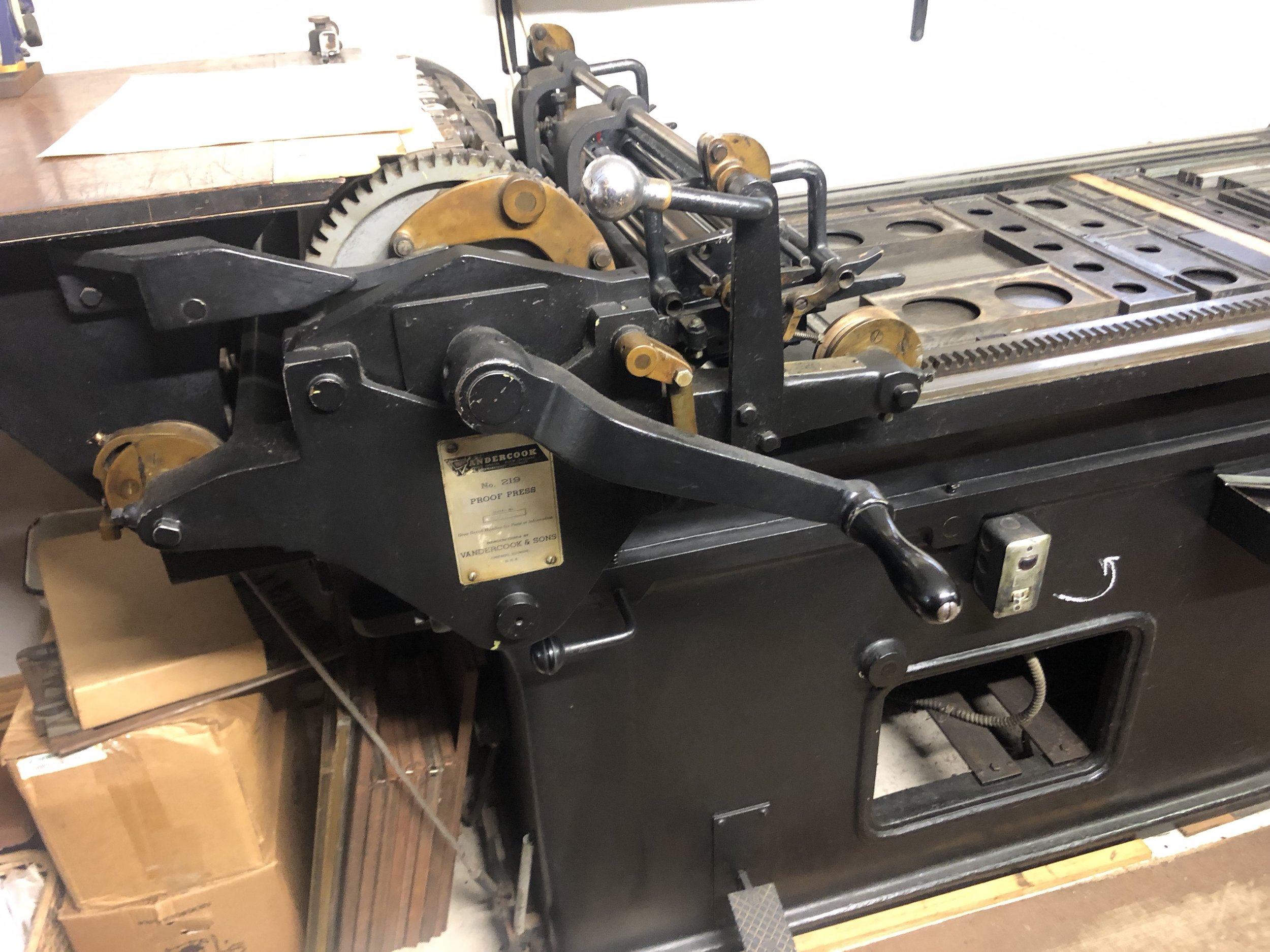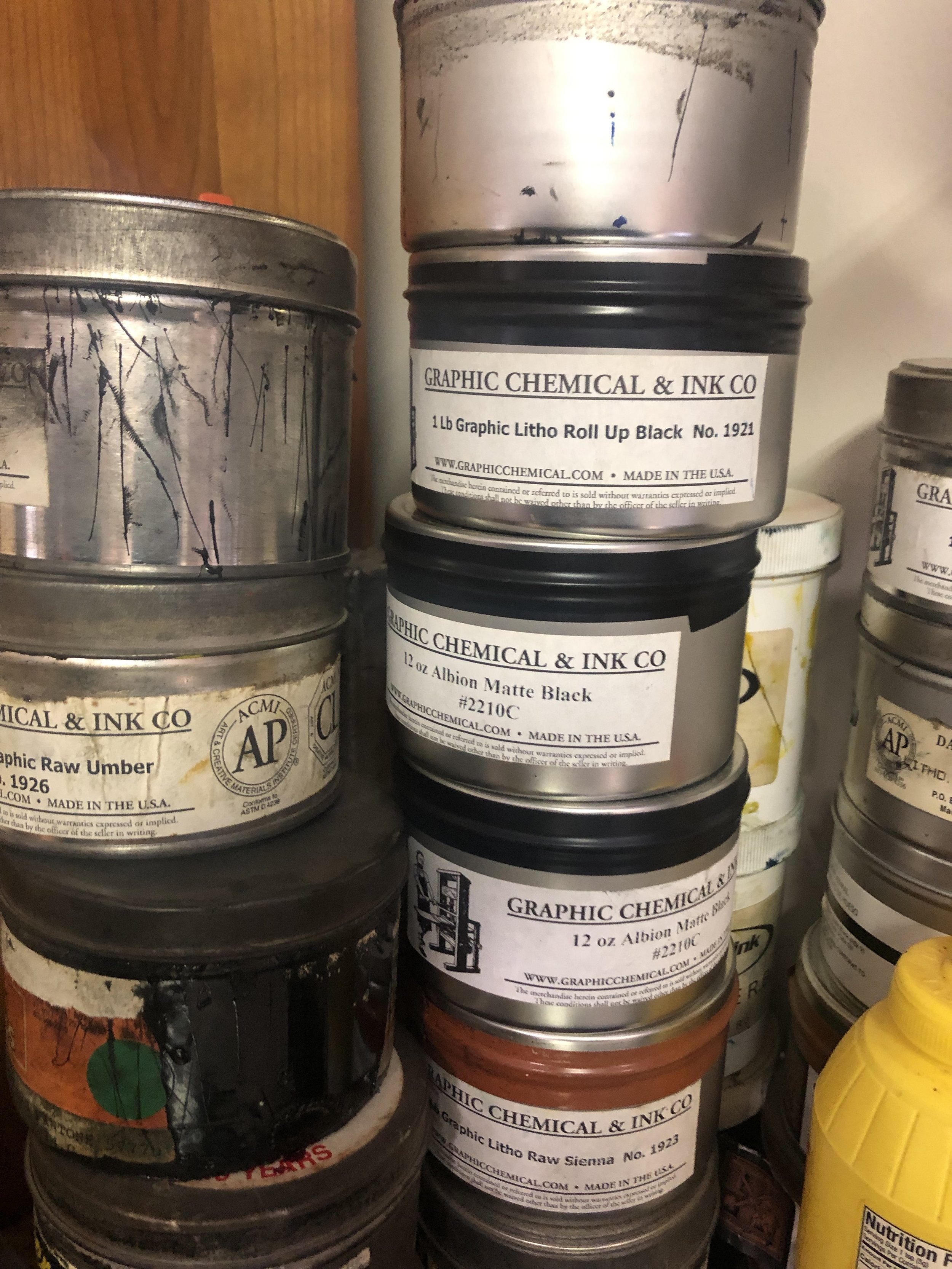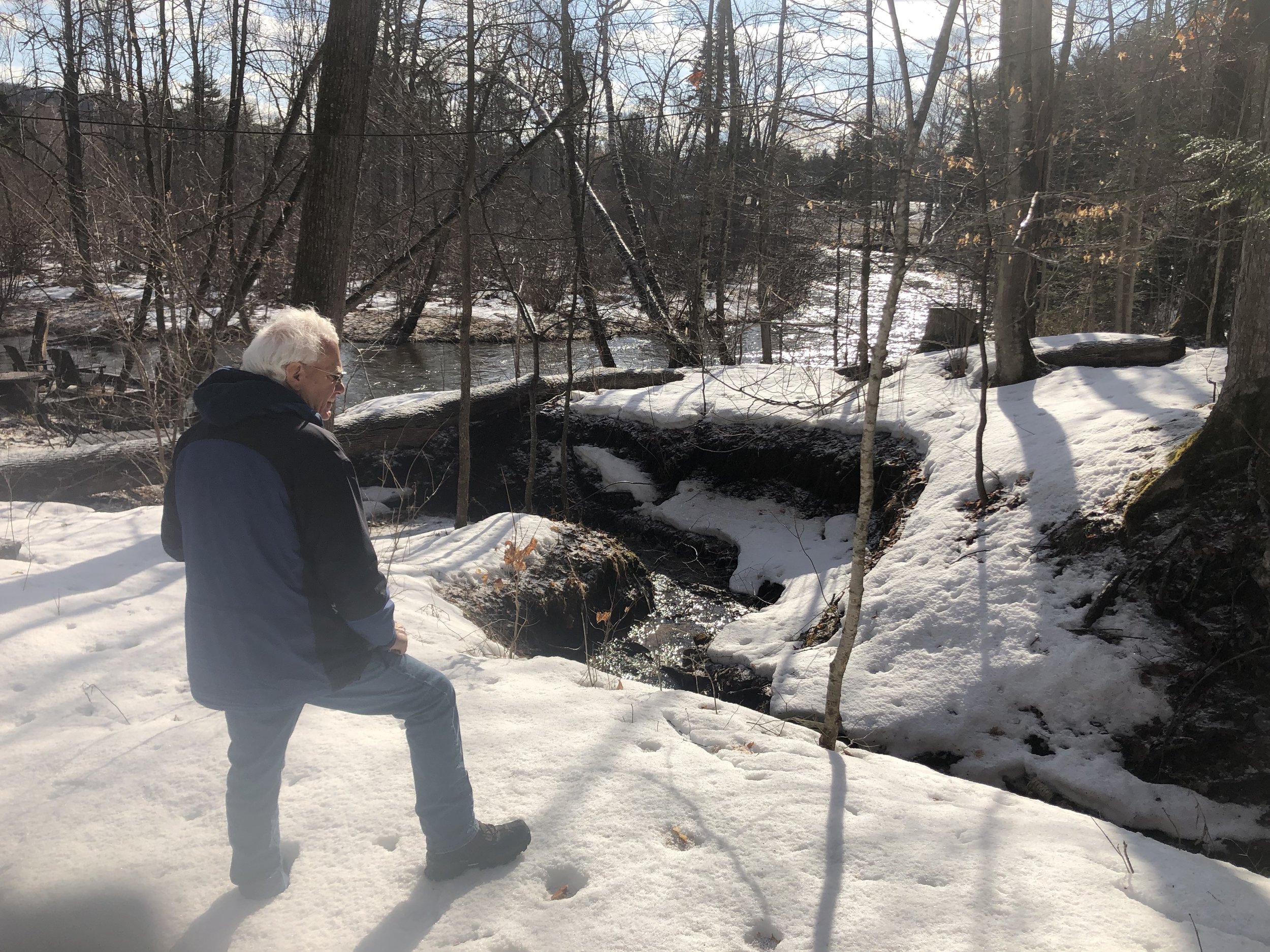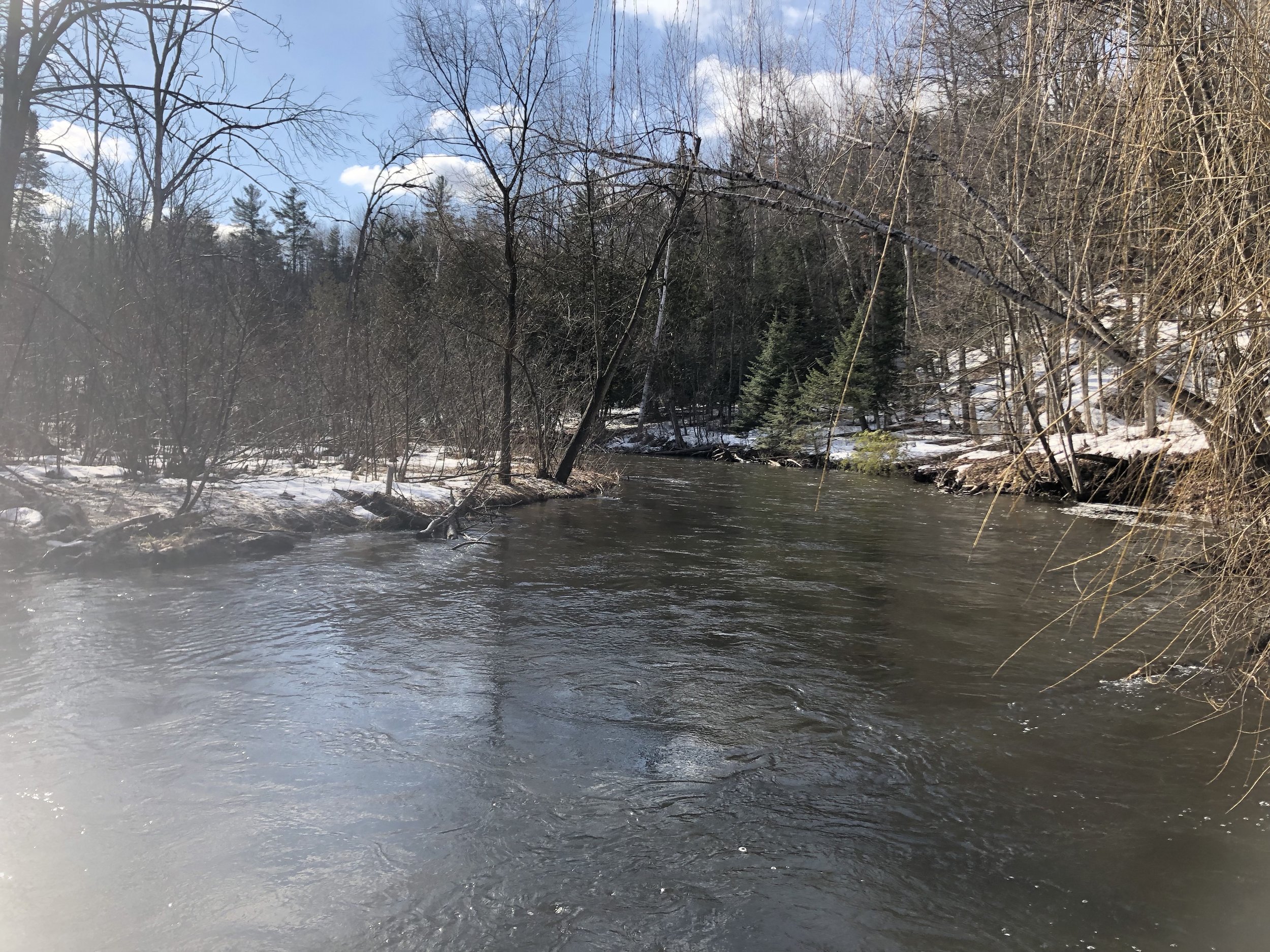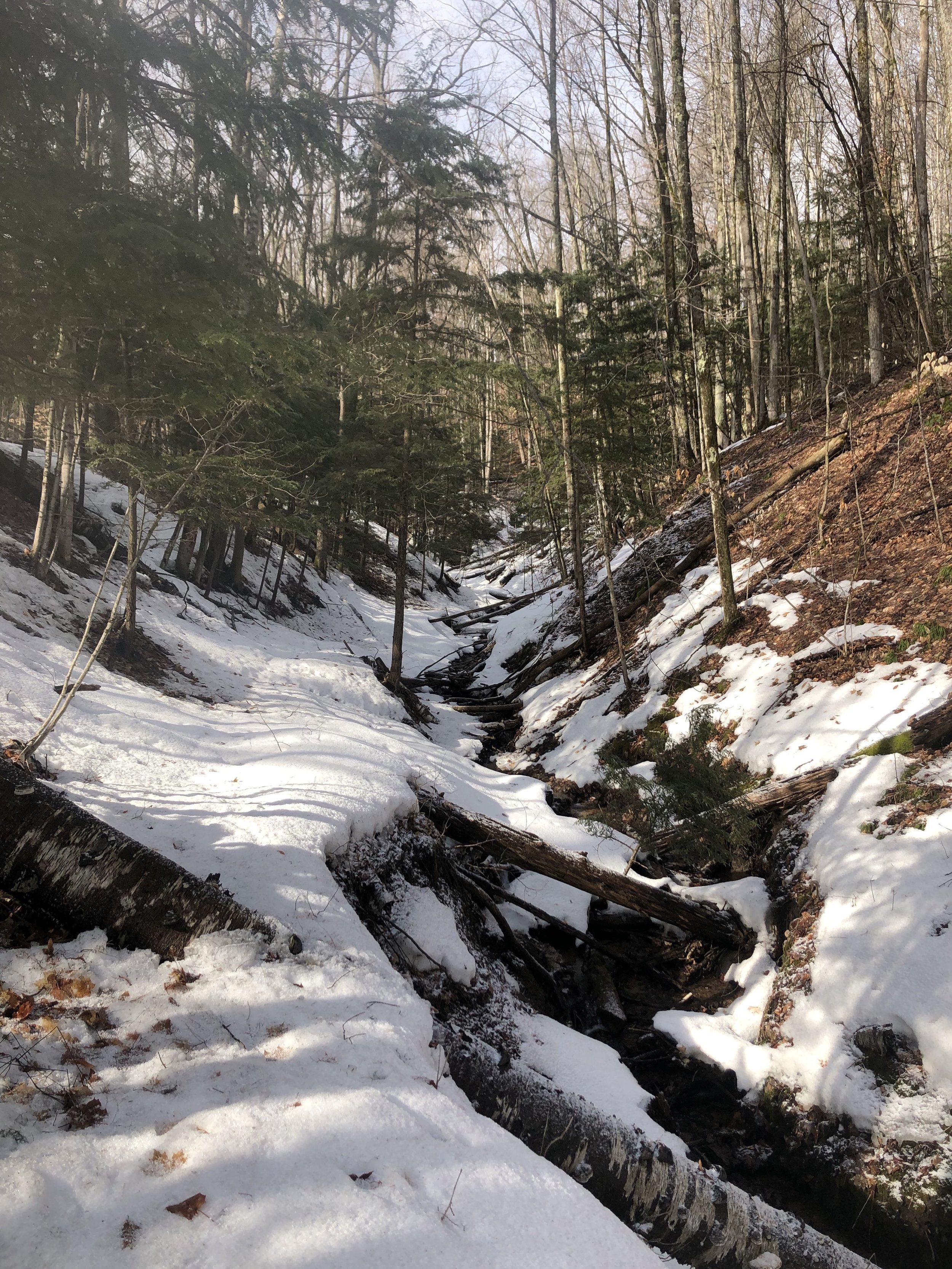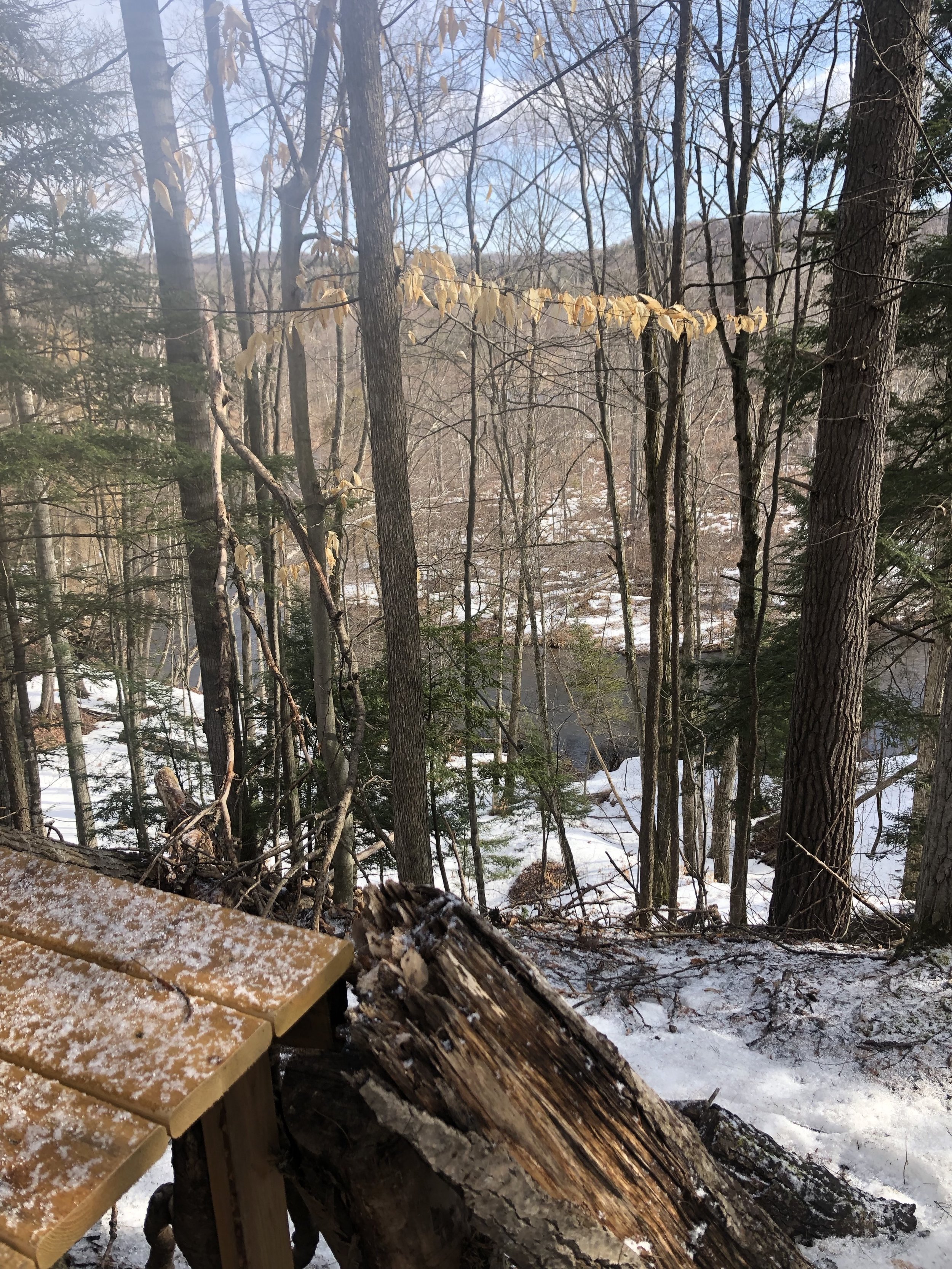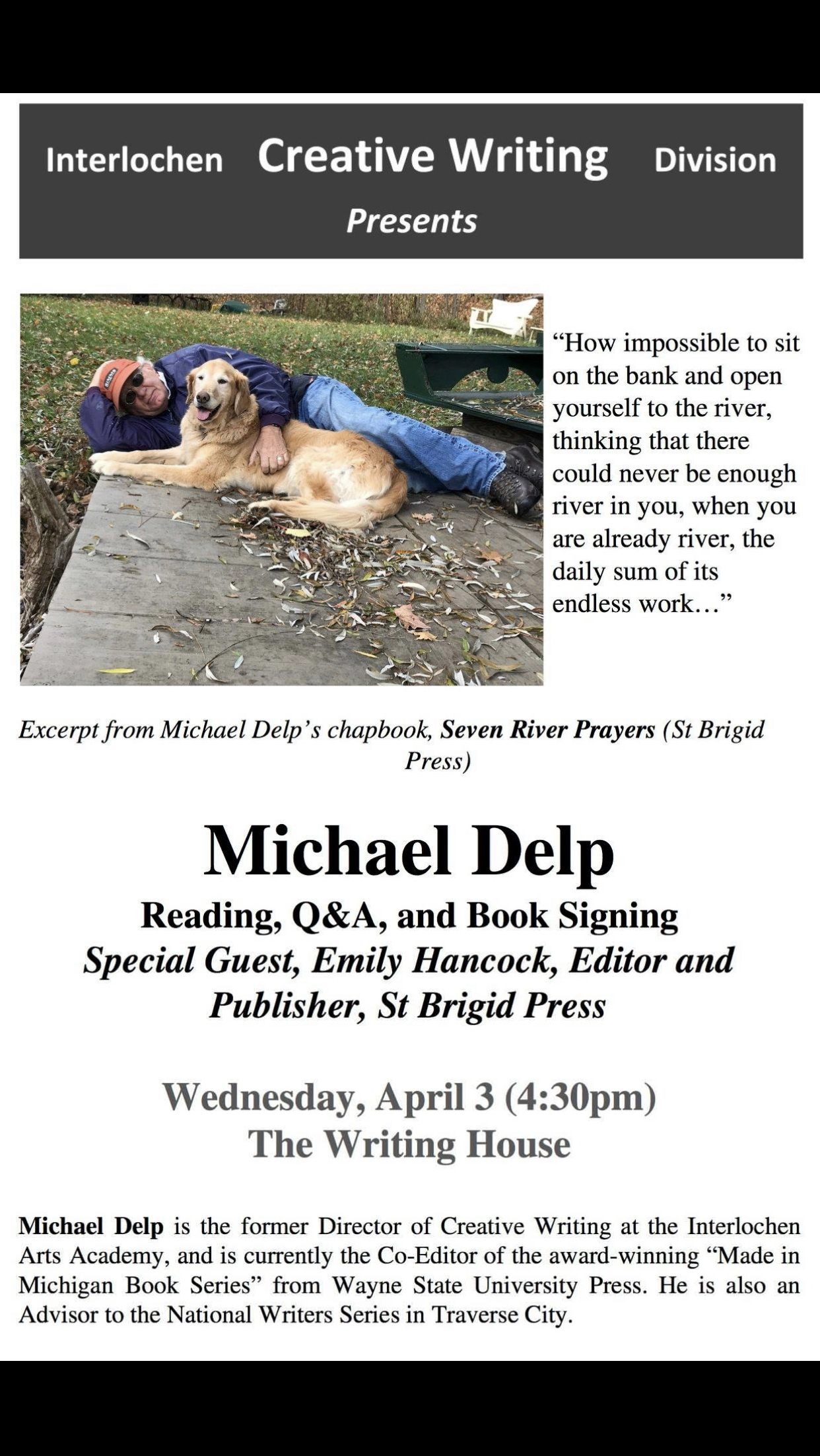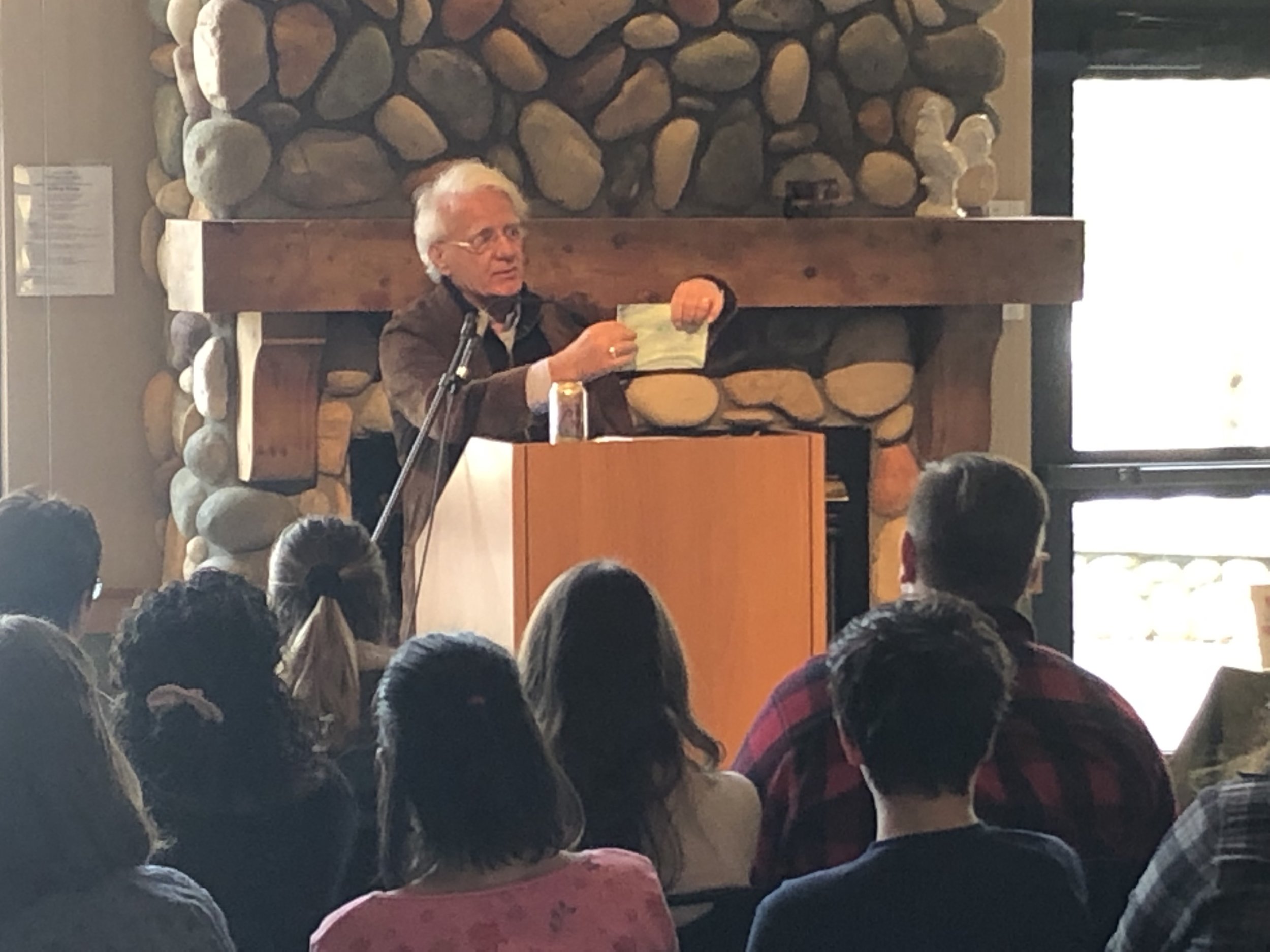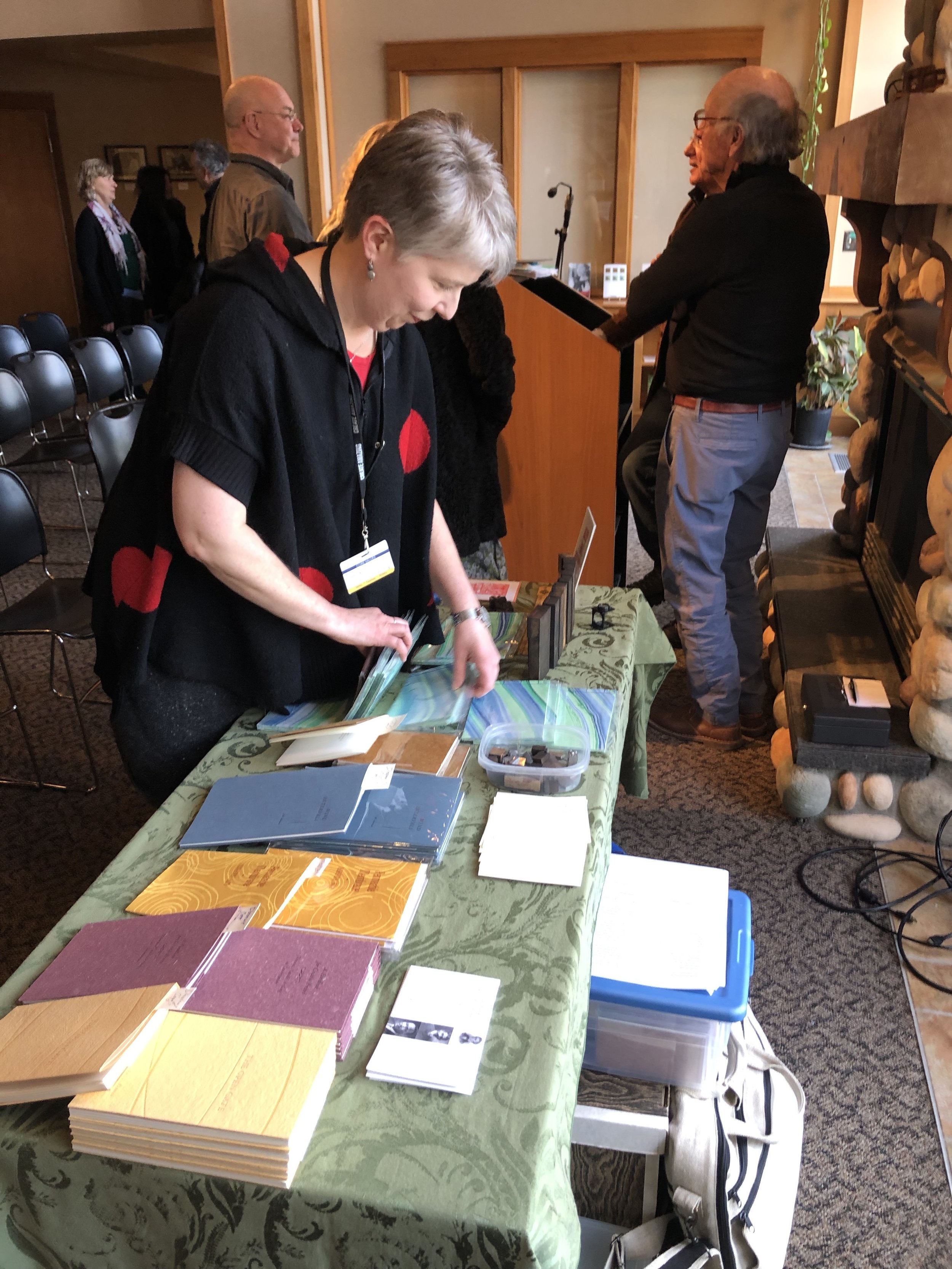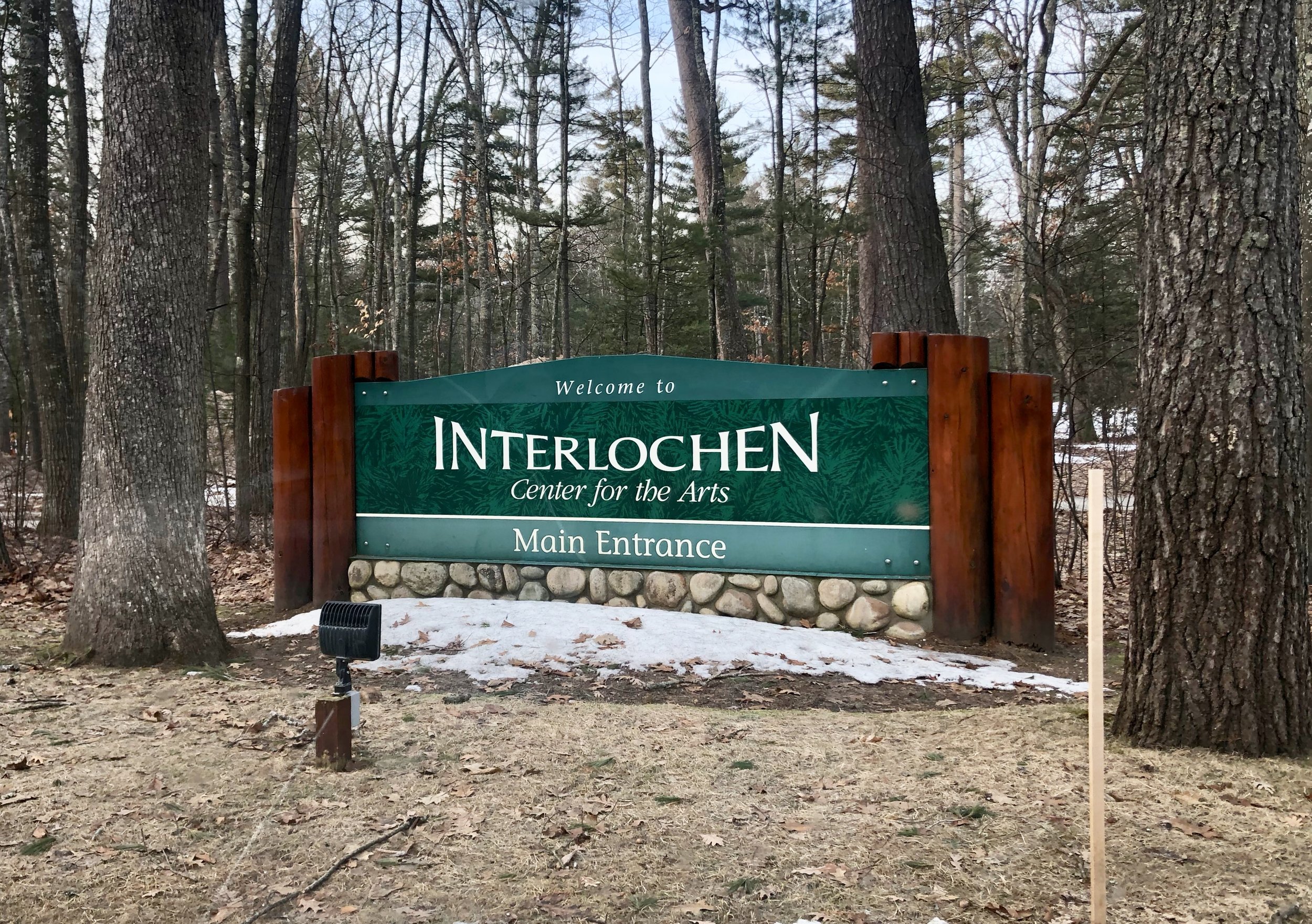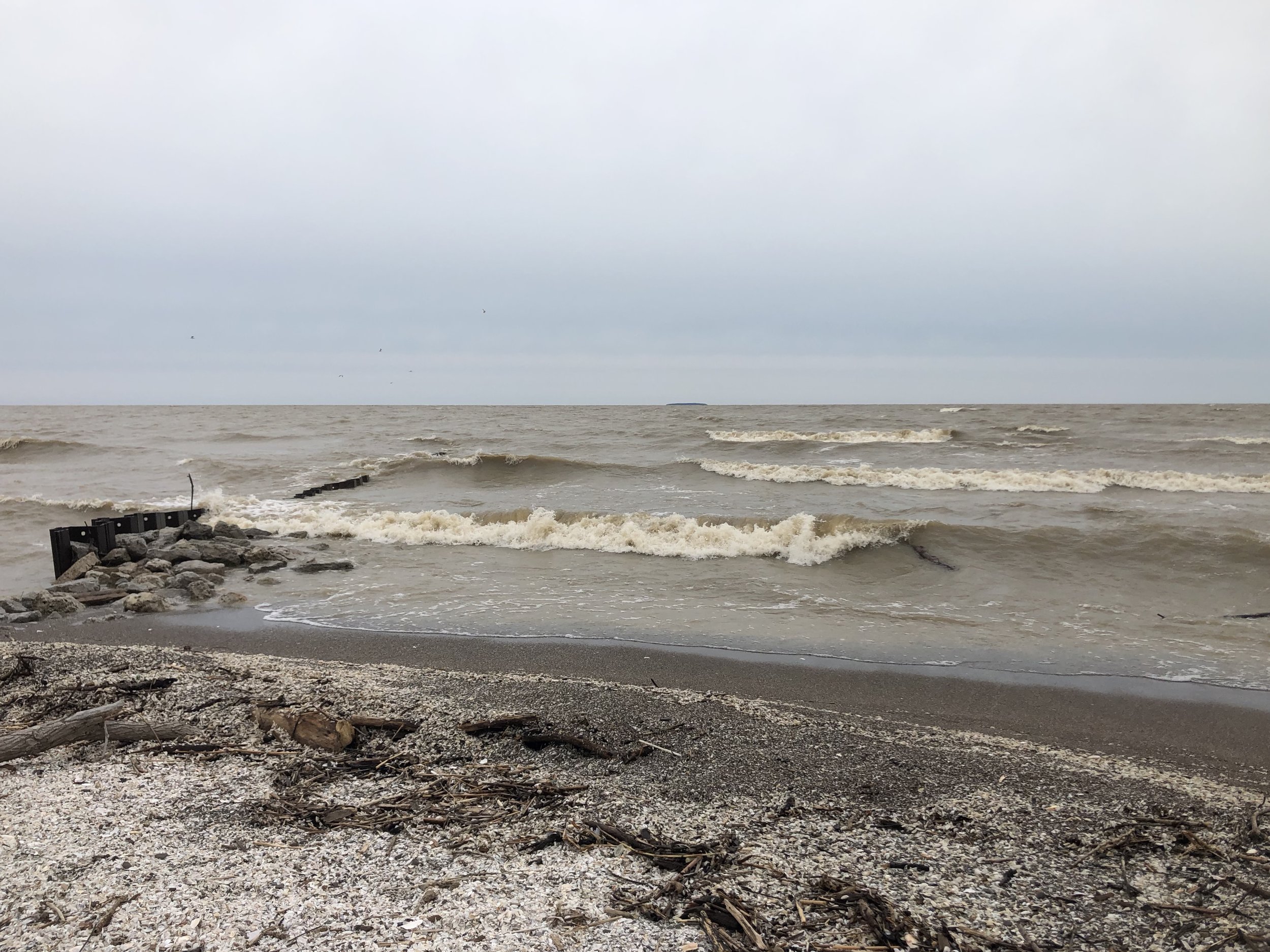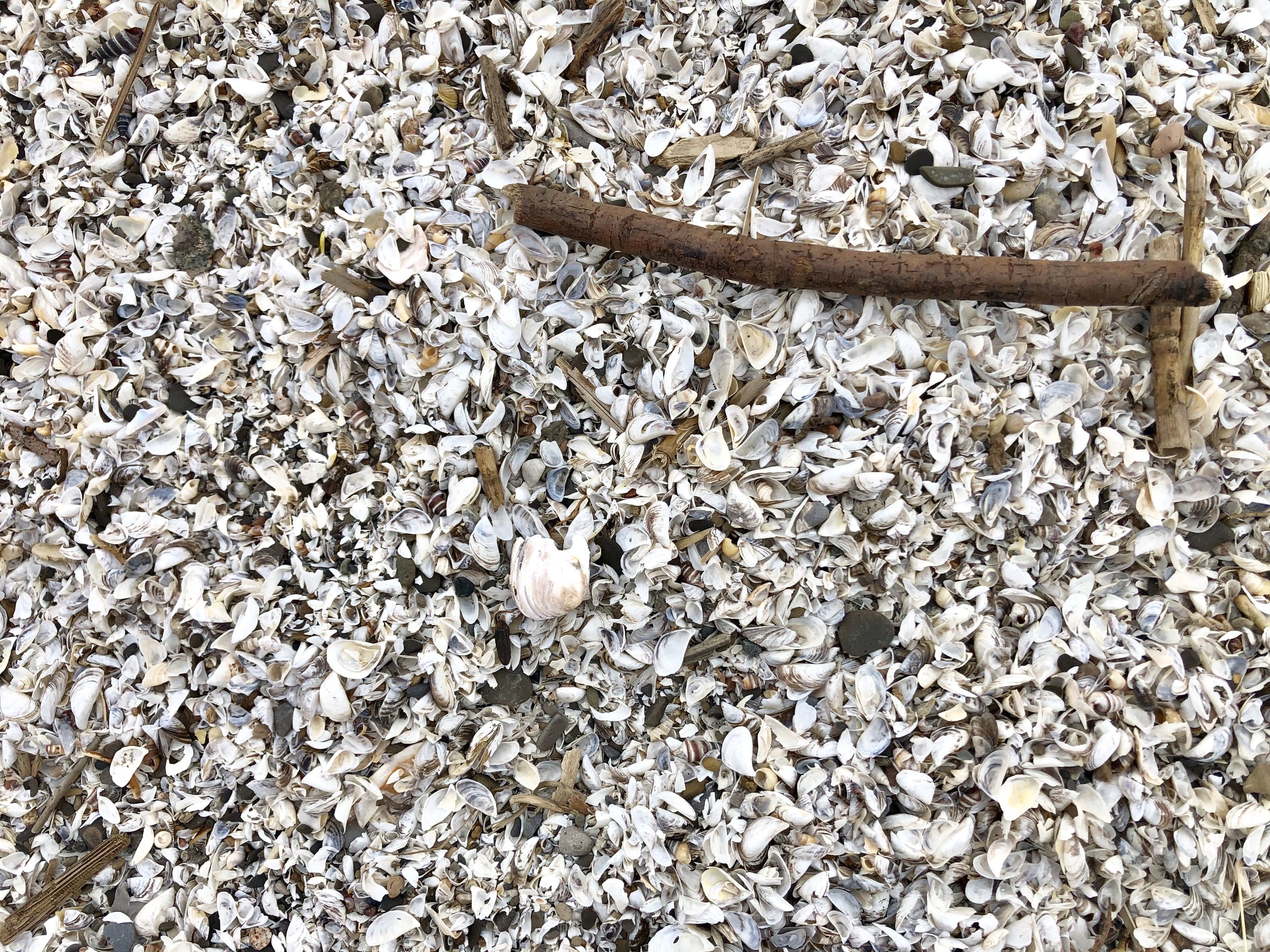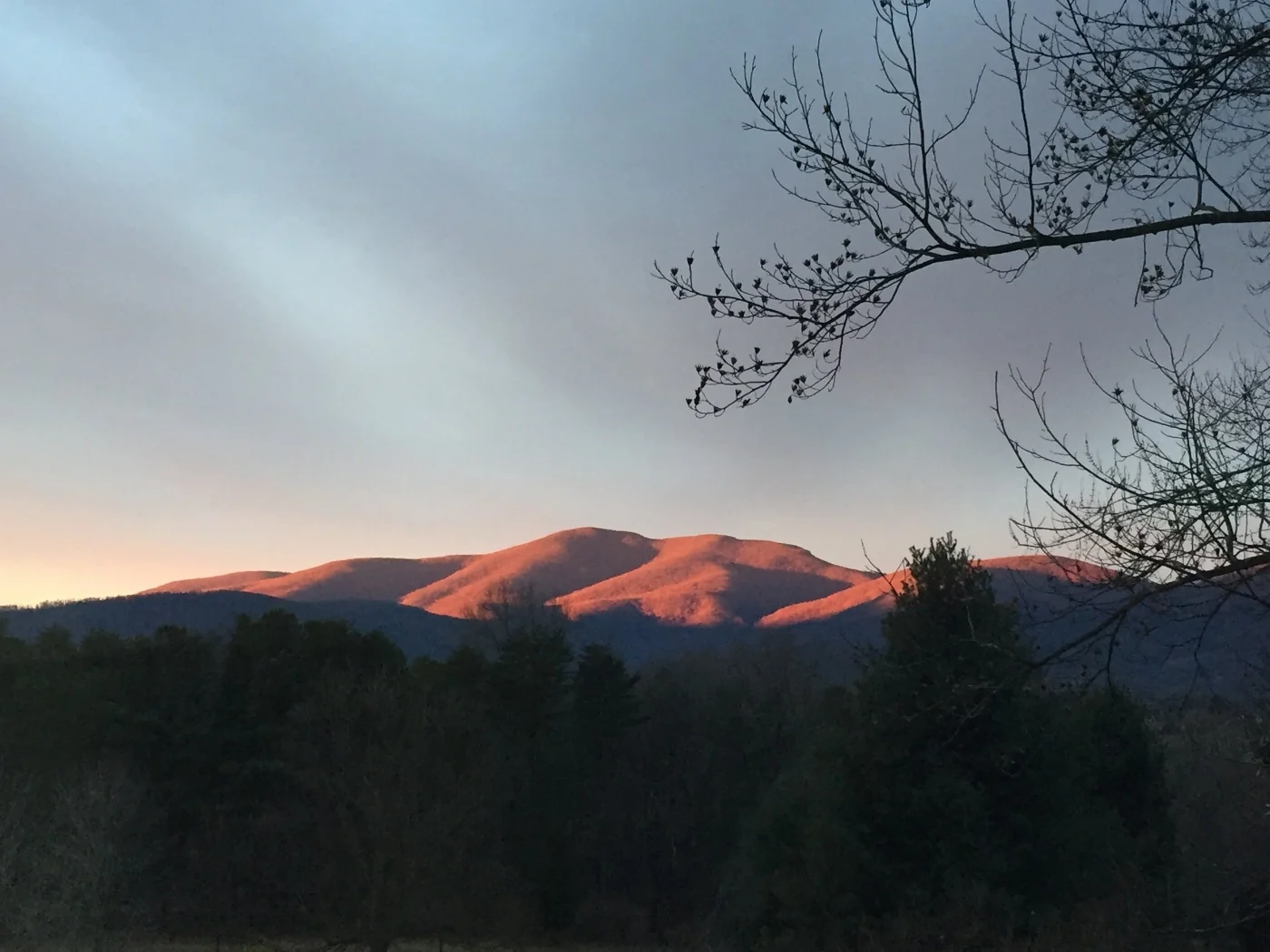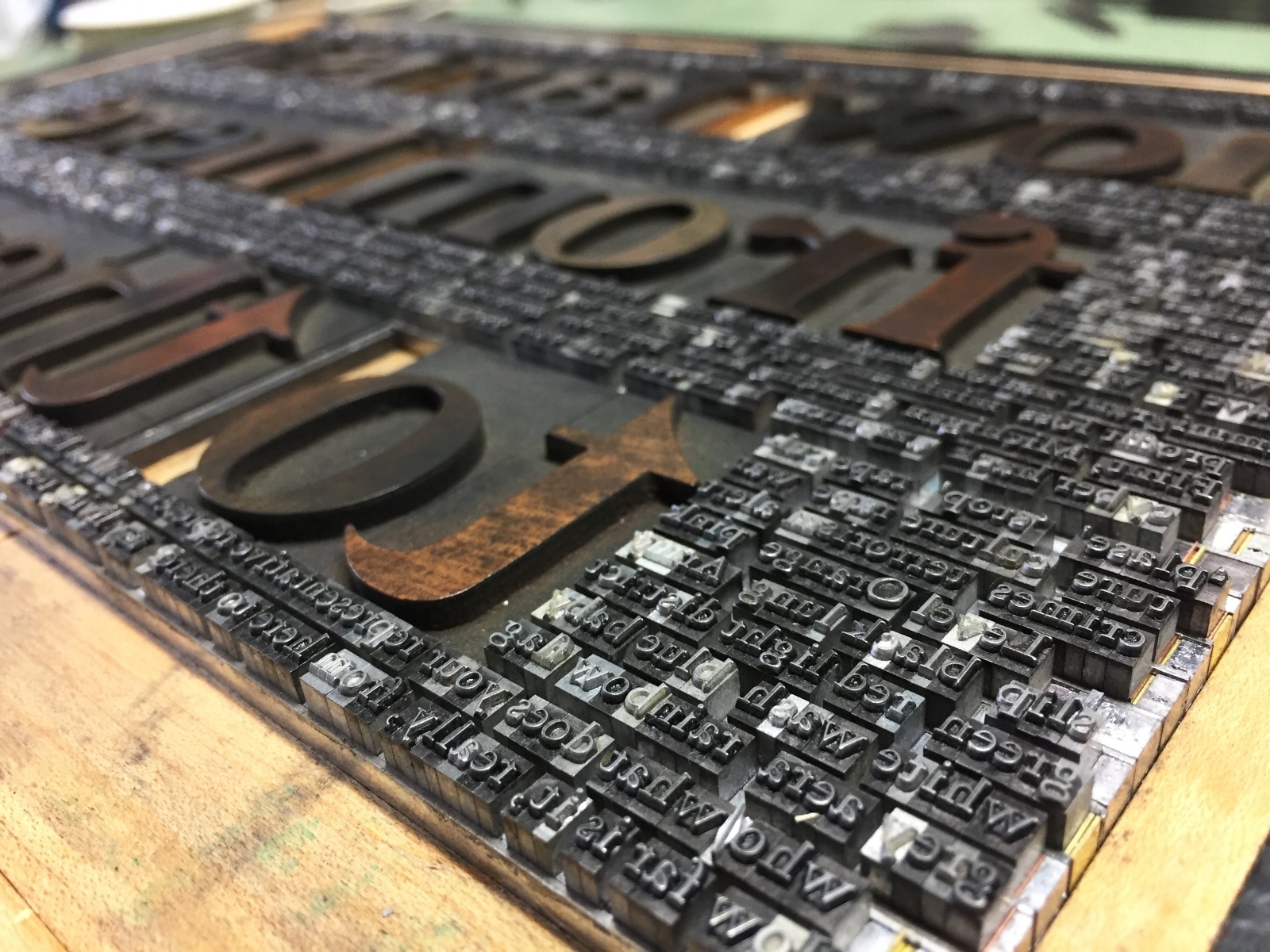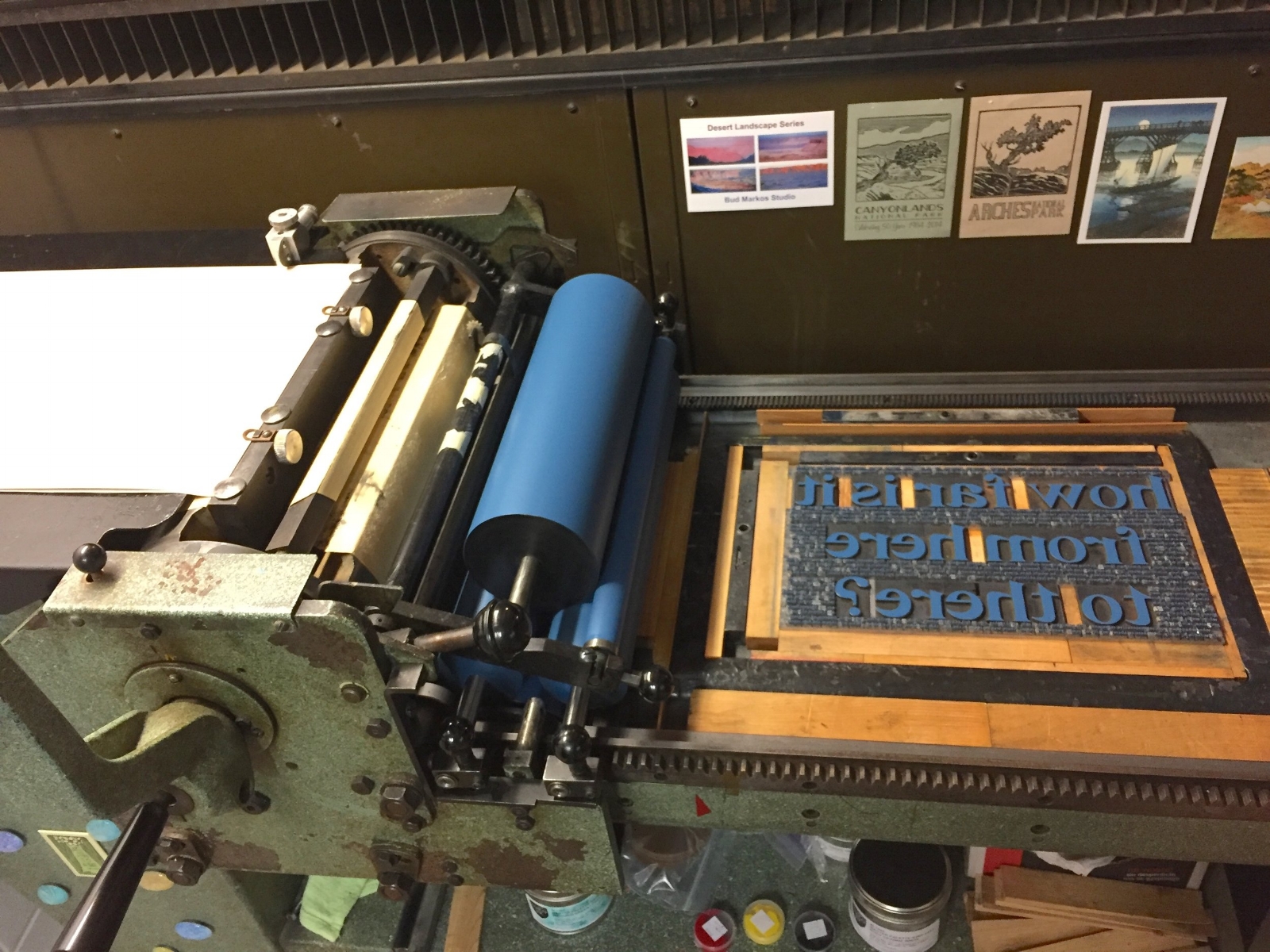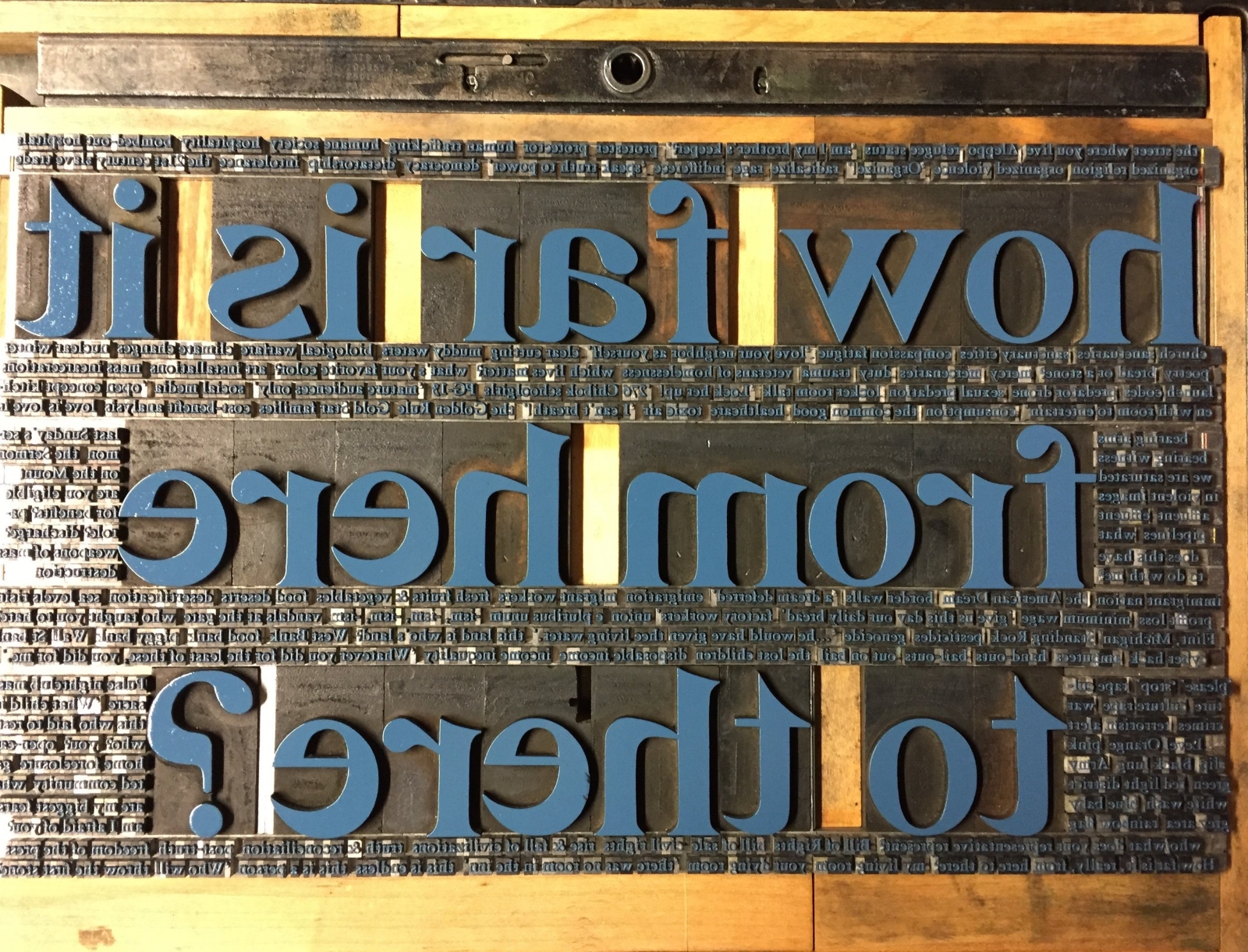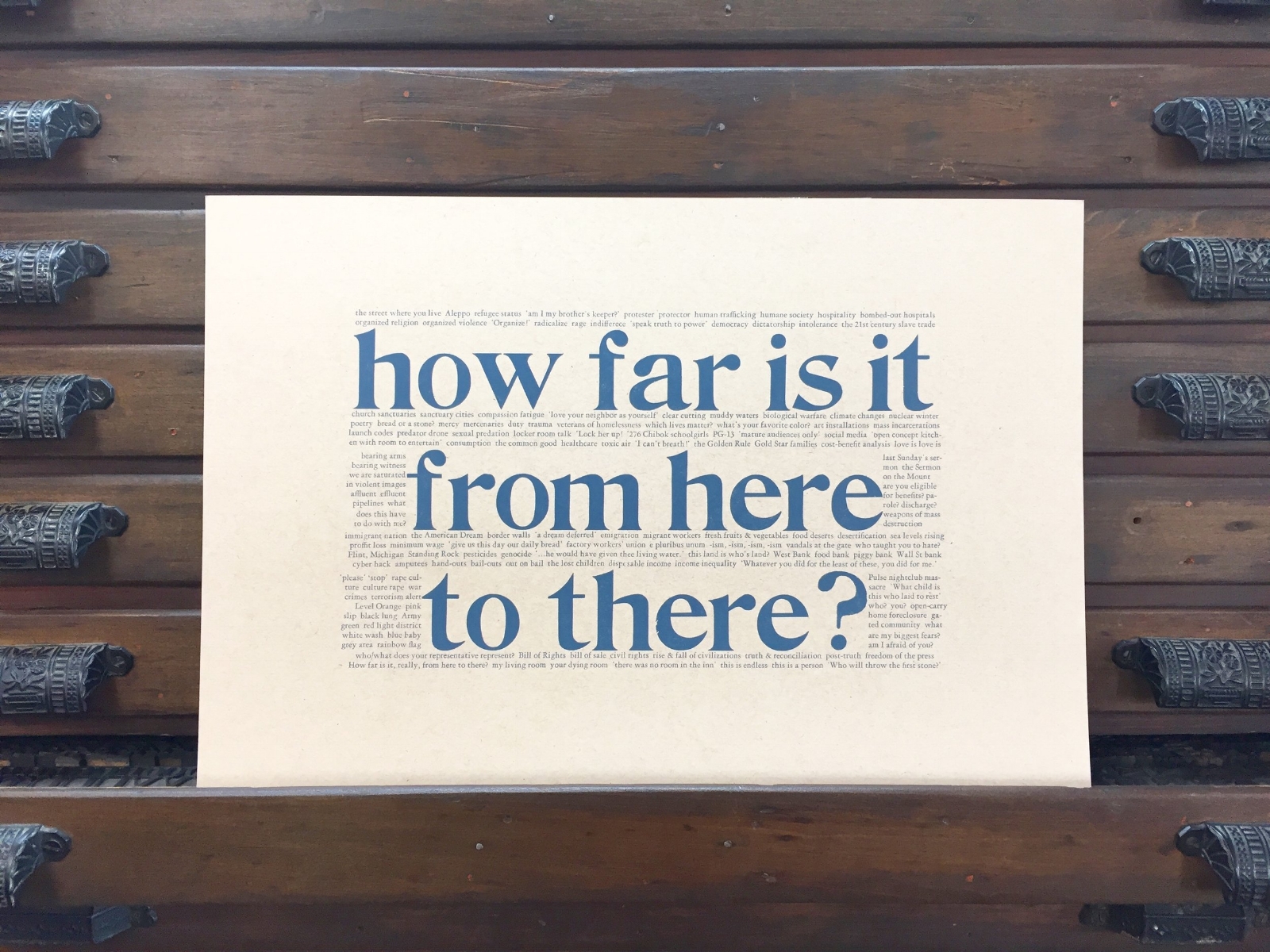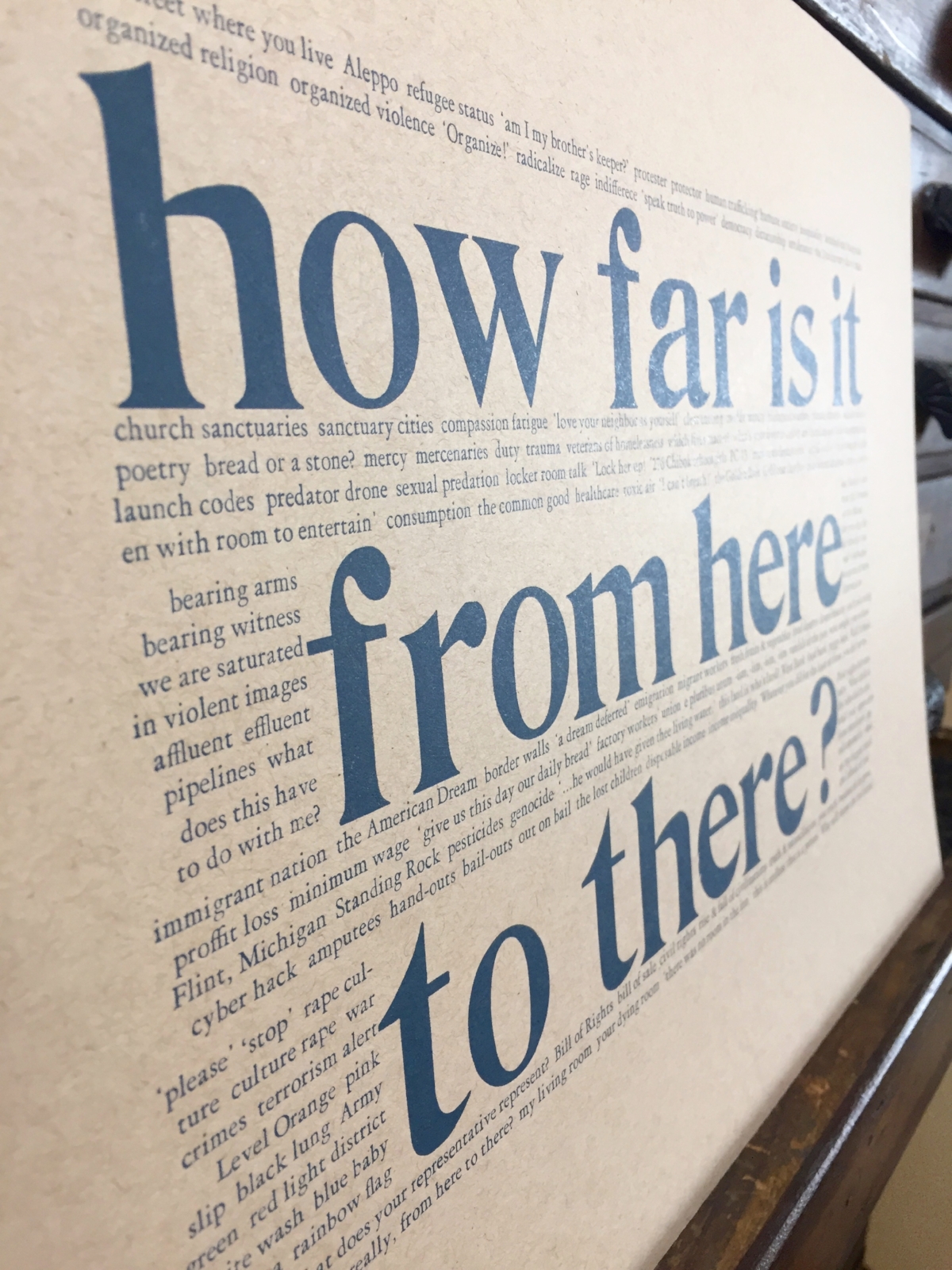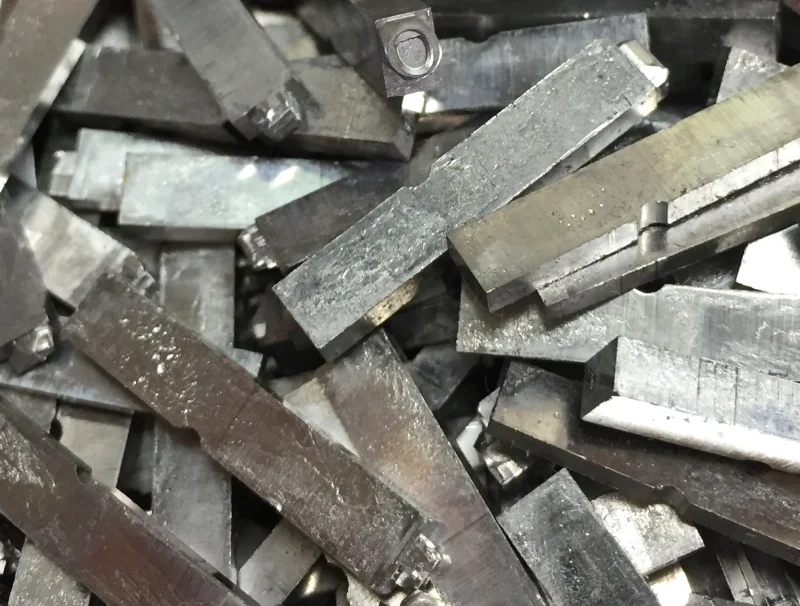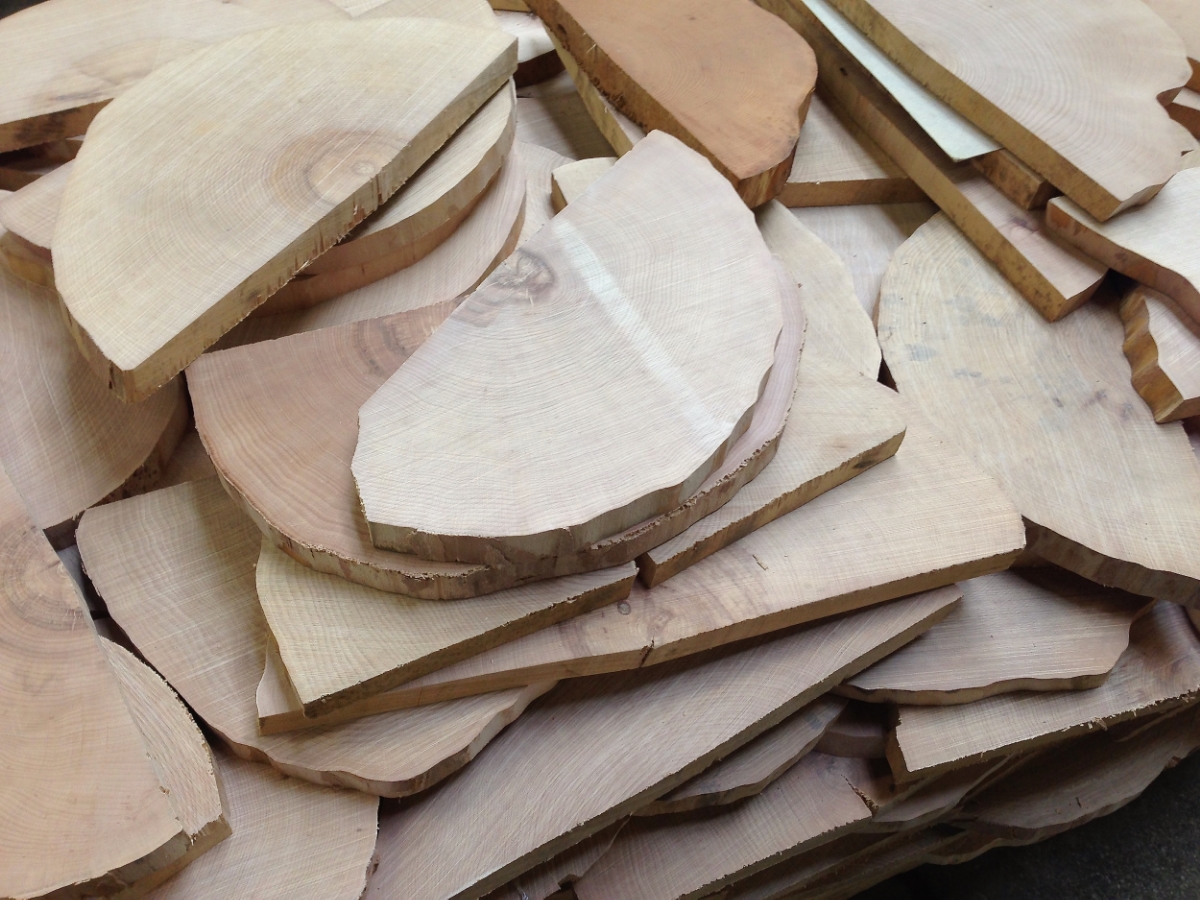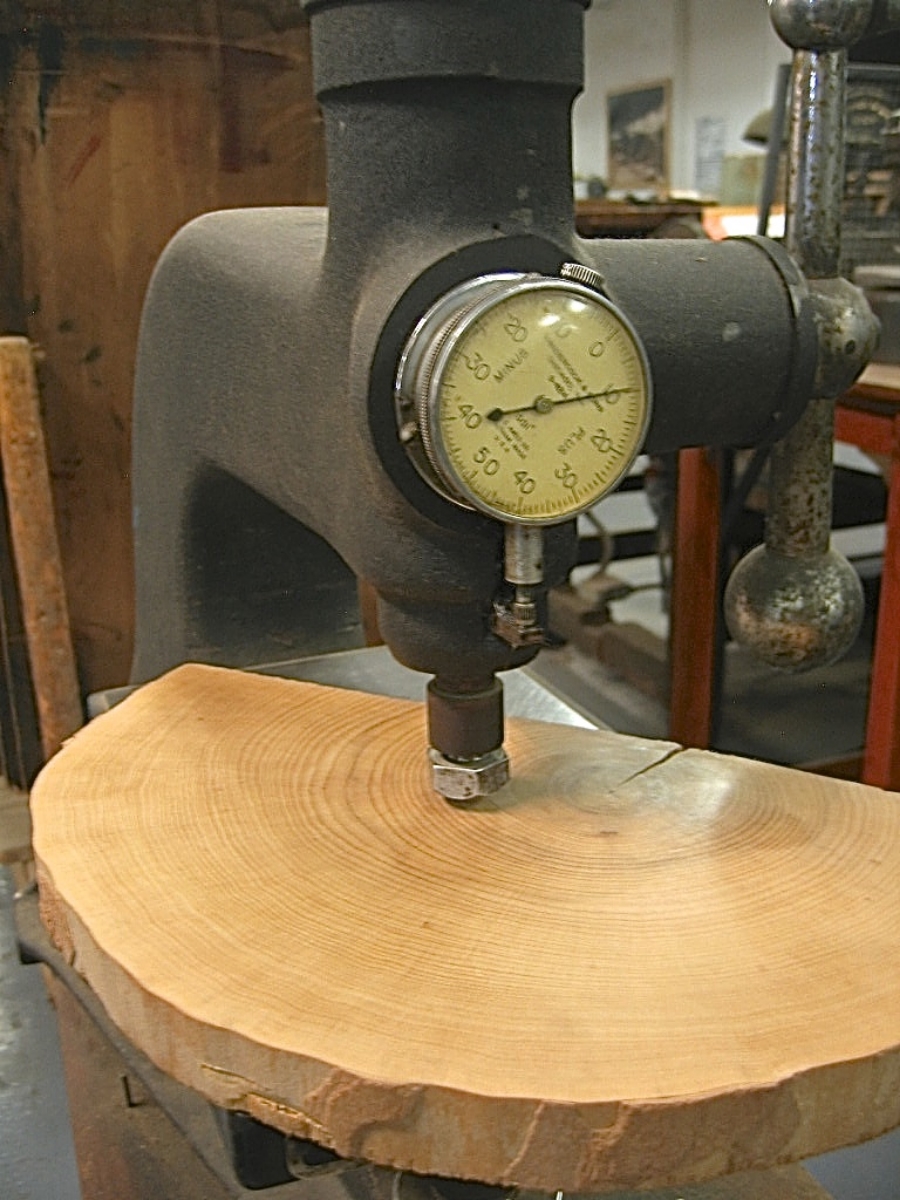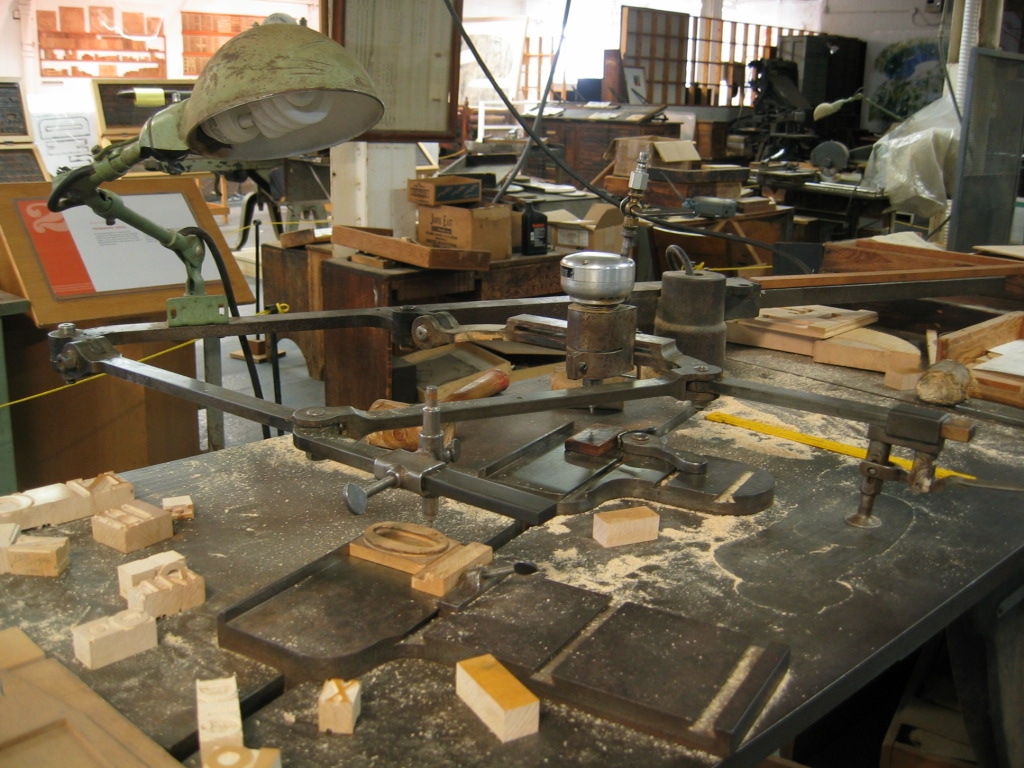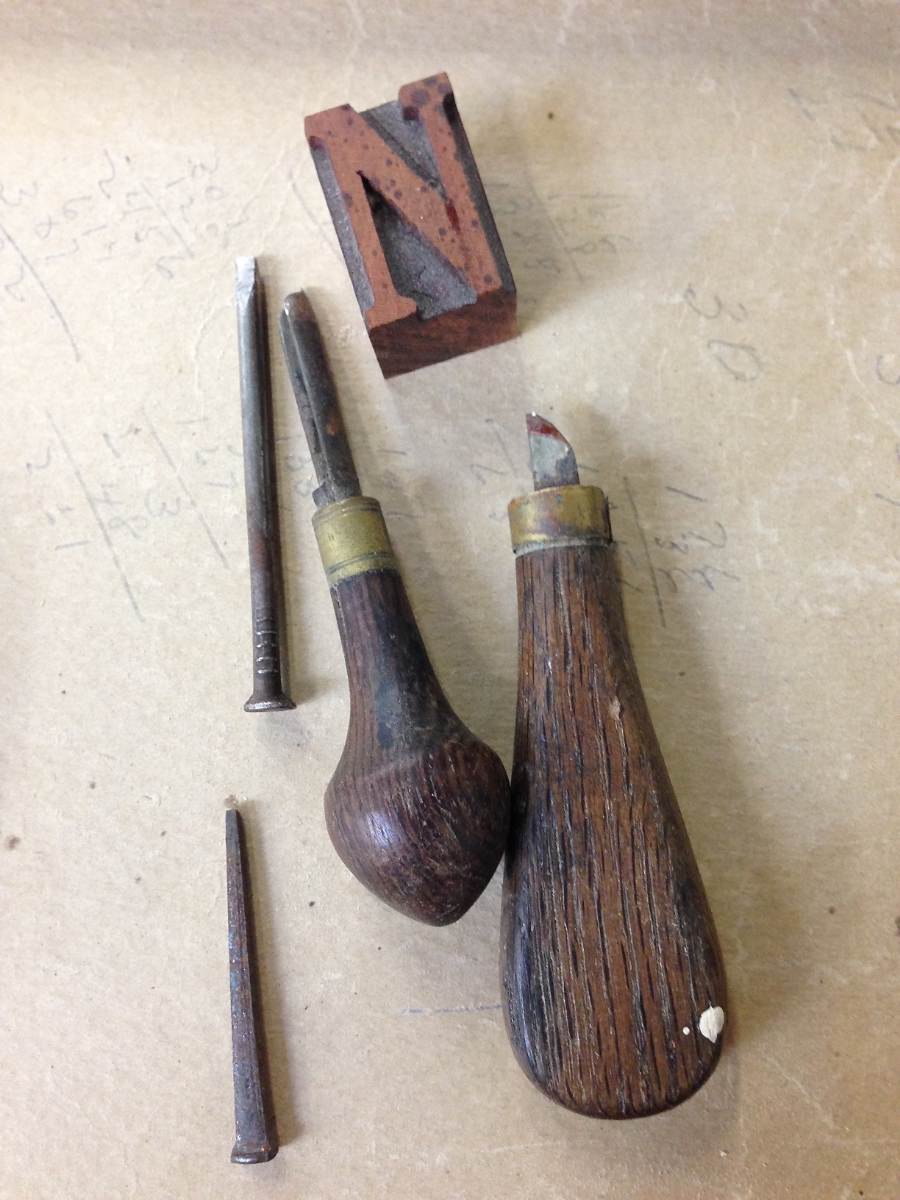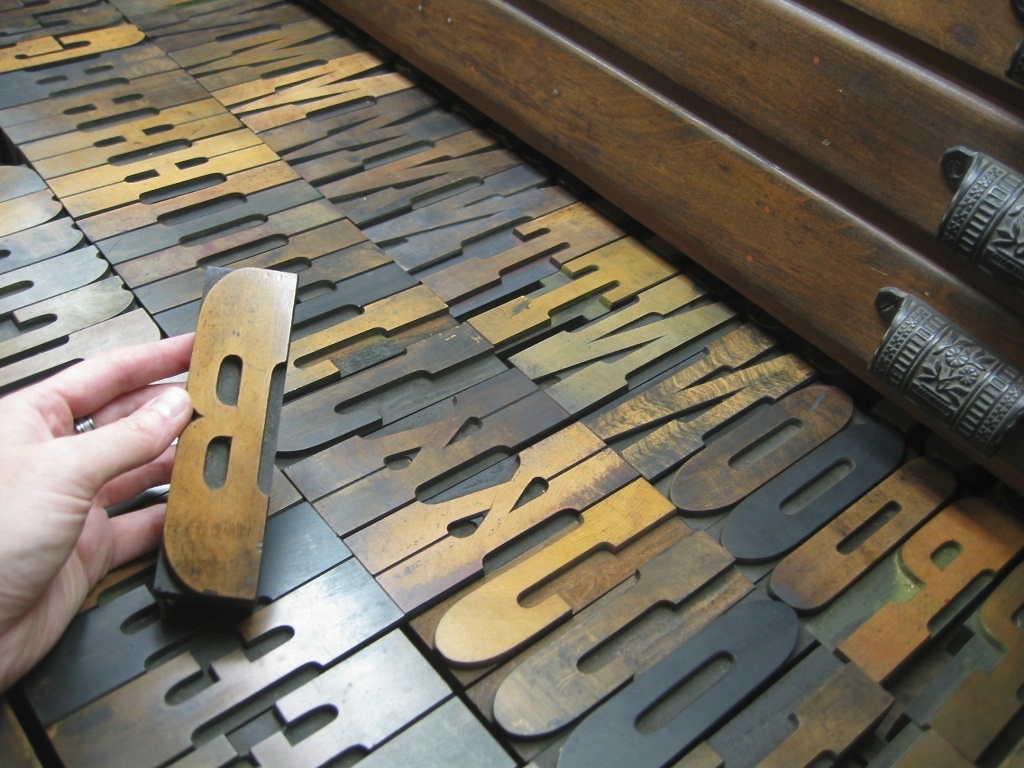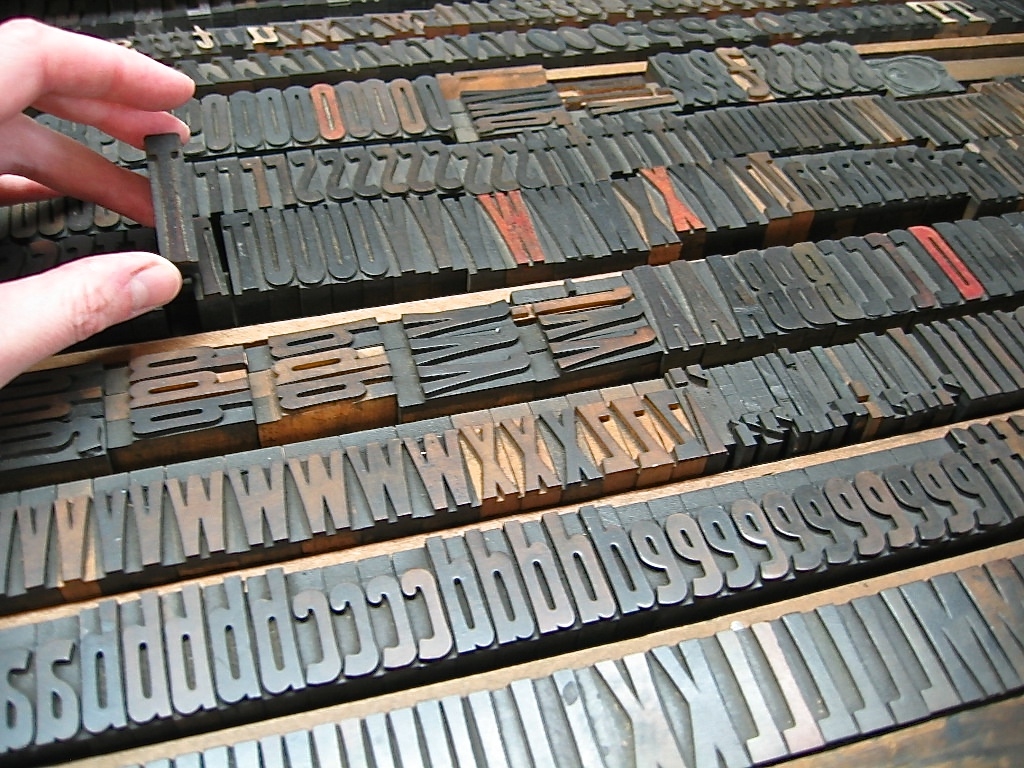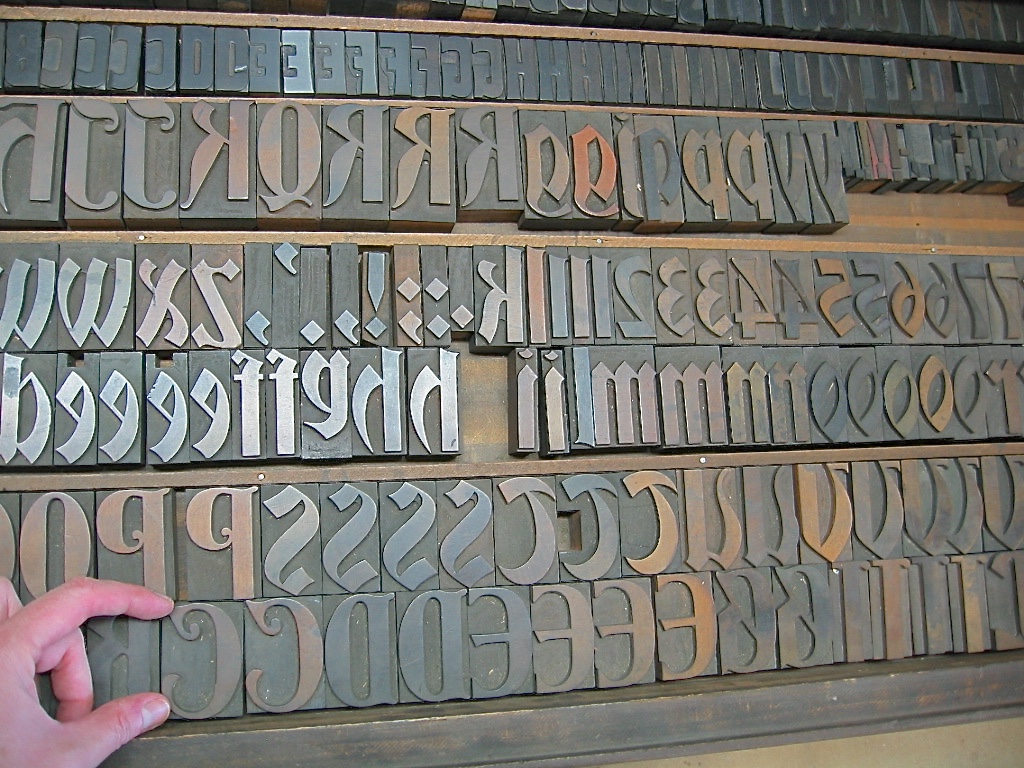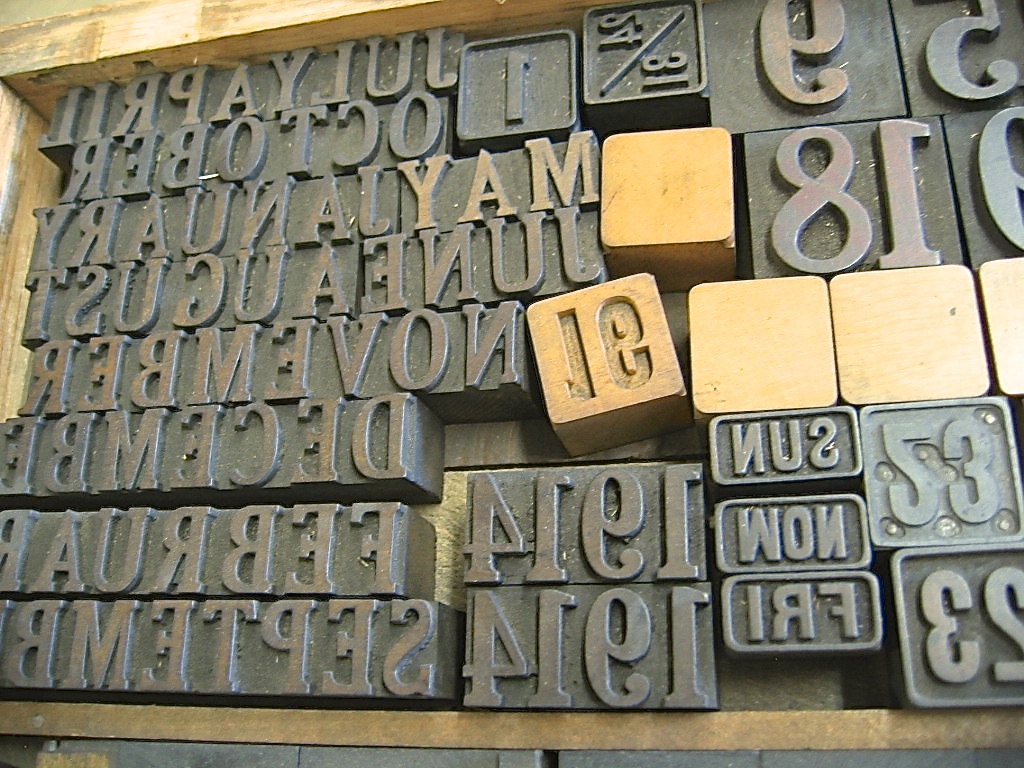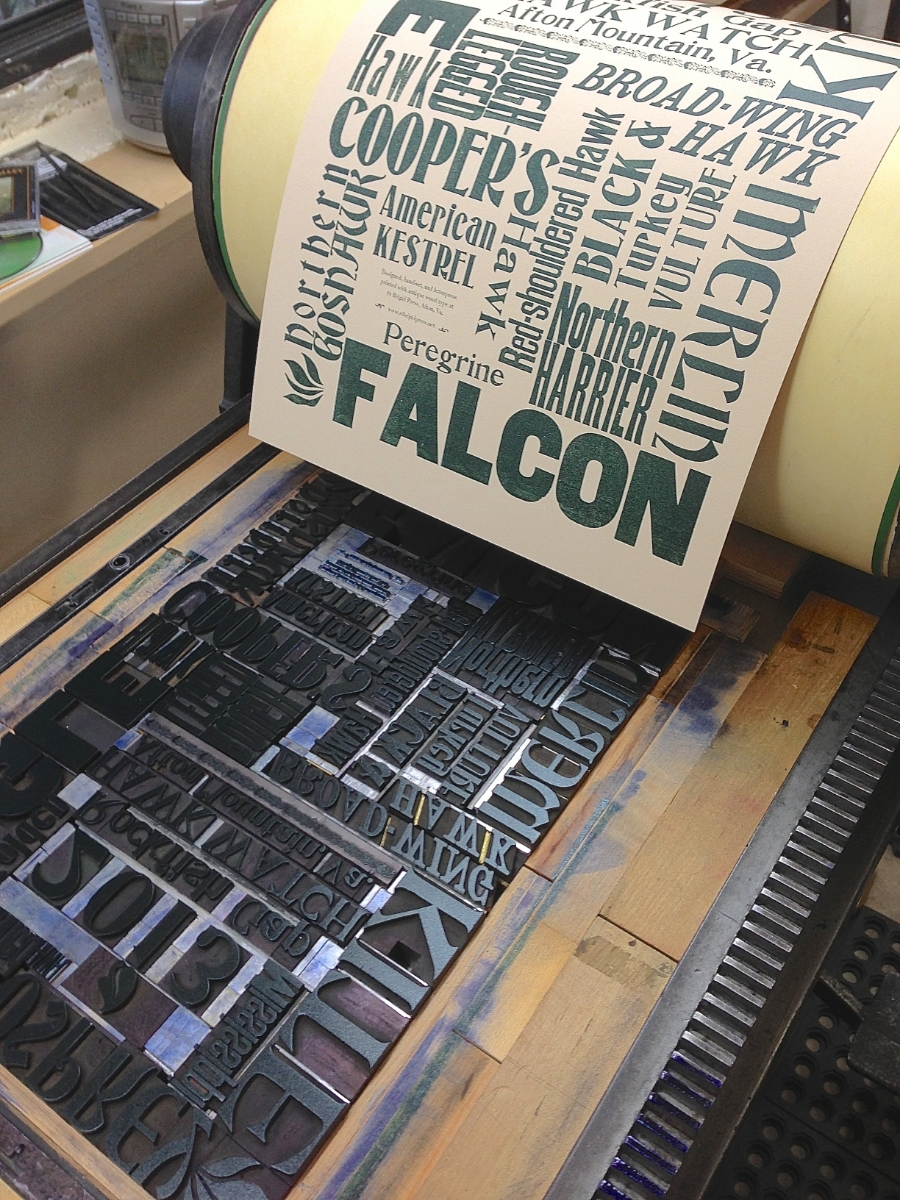Hello Friends, and welcome back to Book Looks!
I began this blog series in 2021 to highlight some of the interesting volumes here in the St Brigid Press library — from the history of book-making to printing press maintenance, from typography and type design to the biographies of famous (or not) printers, and from paper-making to hand-sewing books. We’ll take a brief look at three volumes today, and spotlight more over time.
This edition of the series is inspired by my trip to Canada last October, where I participated in a marvelous gathering (a “Wayzgoose”) at Gaspereau Press in Nova Scotia. You can read about that adventure HERE.
Thanks for coming along as we browse the print shop shelves!
Emily Hancock
Previous Book Looks editions:
BOOK LOOKS, PART 4
Design With Type by Carl Dair
To learn about the 20th-century-history of typography and design in Canada is to encounter the extraordinary work of Carl Dair. Born in Ontario in 1912, Dair became an exceptional graphic designer, teacher, and type designer, and in 1952 published Design With Type. This relatively slim but comprehensive volume became a staple resource in the trade, and is still available new from the University of Toronto Press who published the revised version in 1967 (although there are many inexpensive used copies floating around for you to snag). “Good design in any field demands that the designer know the materials with which he is working”; this is, essentially, Dair’s purpose for writing this book and his hope for his readers. The well-illustrated, concise tour of the forms and functions of type on the page is all in service of Dair’s ultimate vision —that of encouraging excellence in visual communication, not mere “visual stimulation.” [University of Toronto Press; I recommend the revised version published after 1967.]

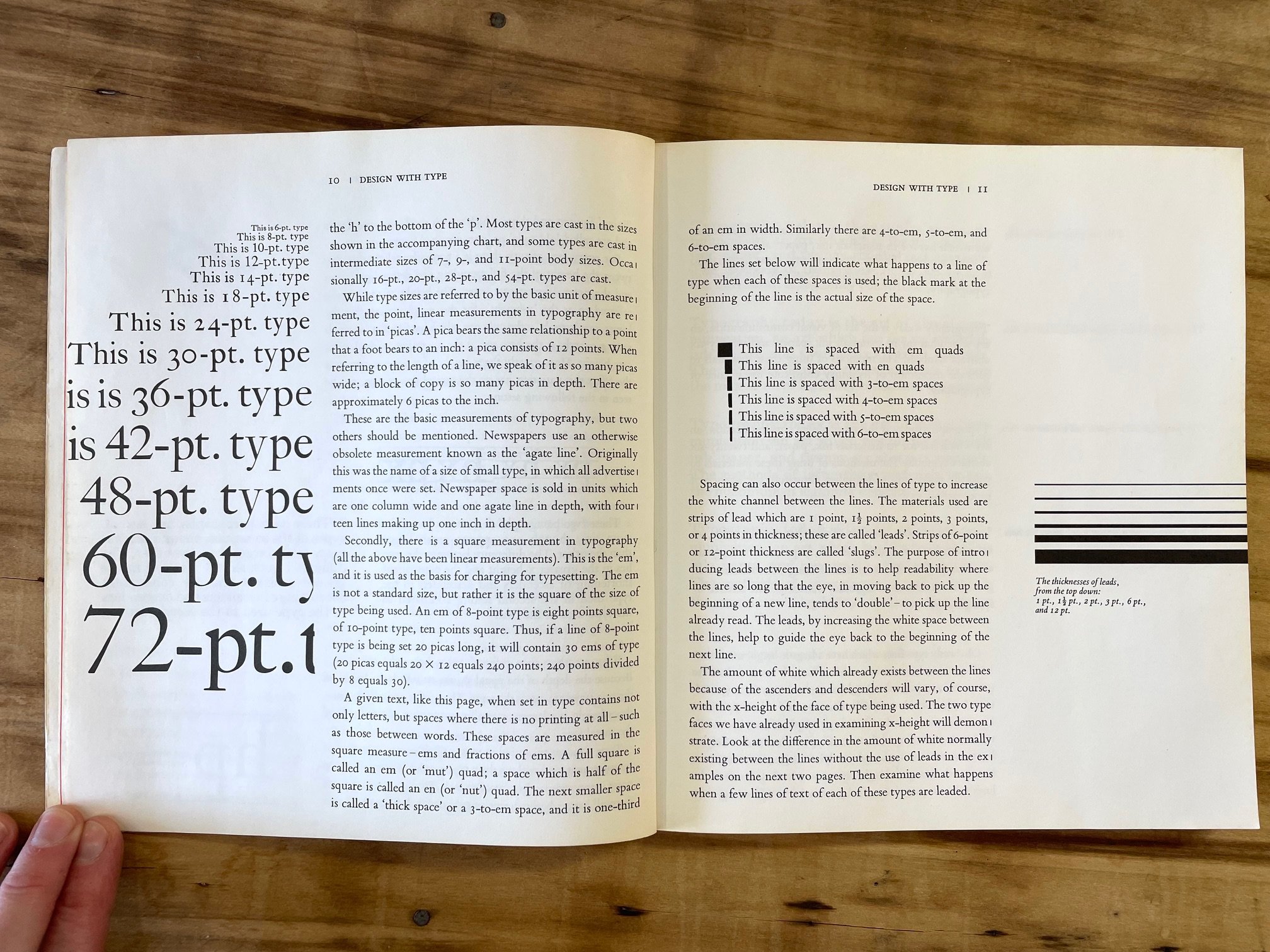
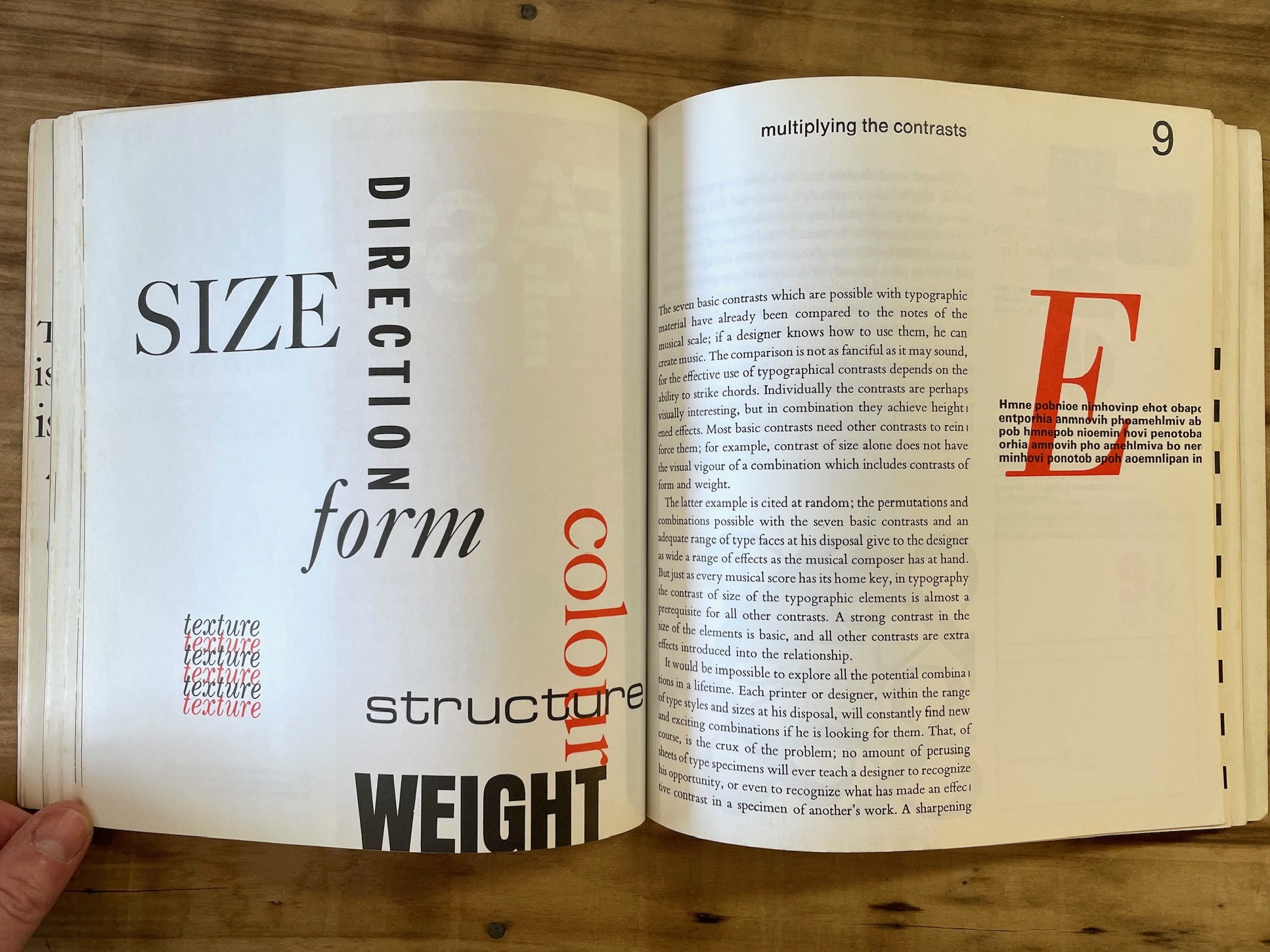
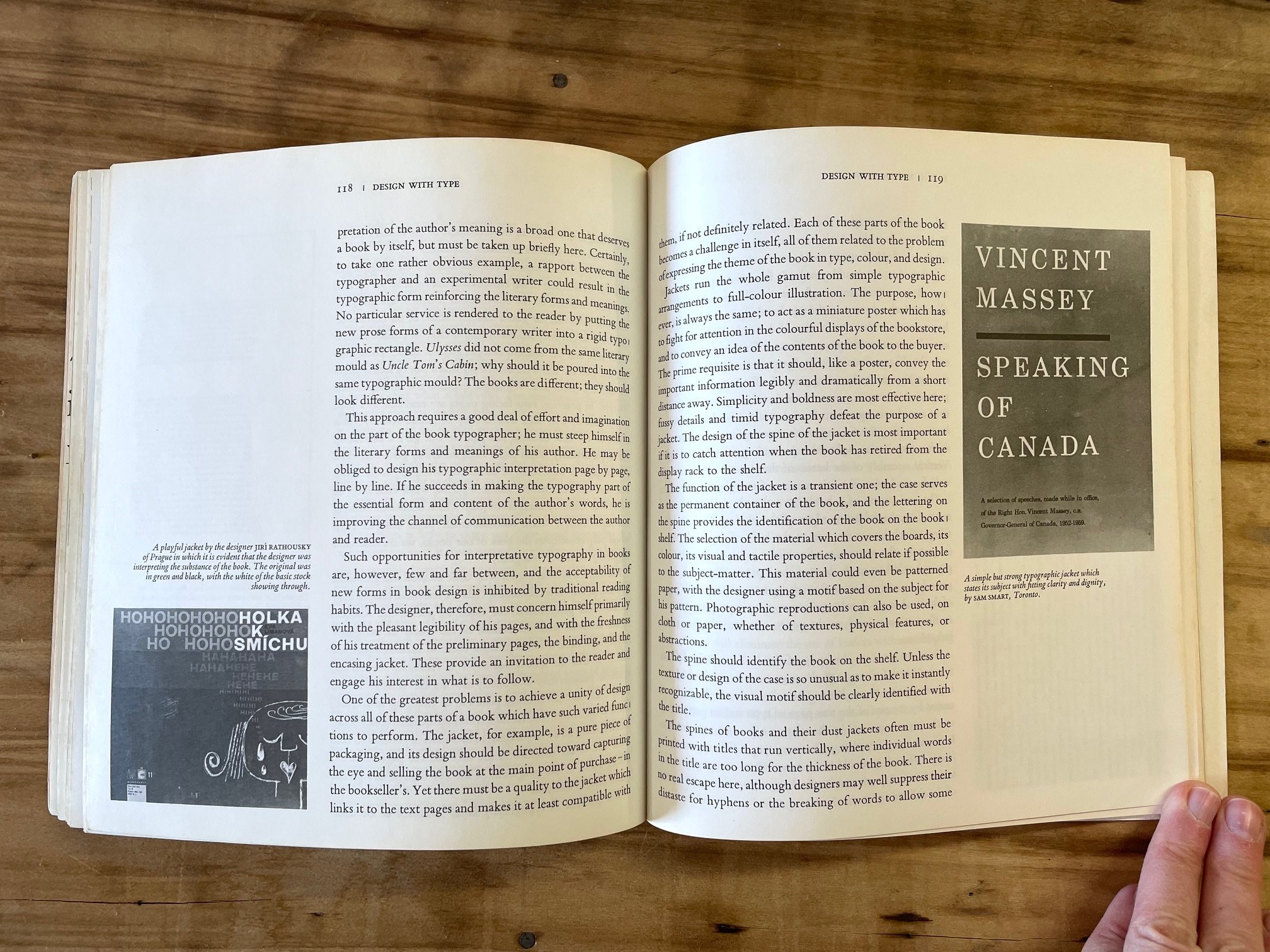
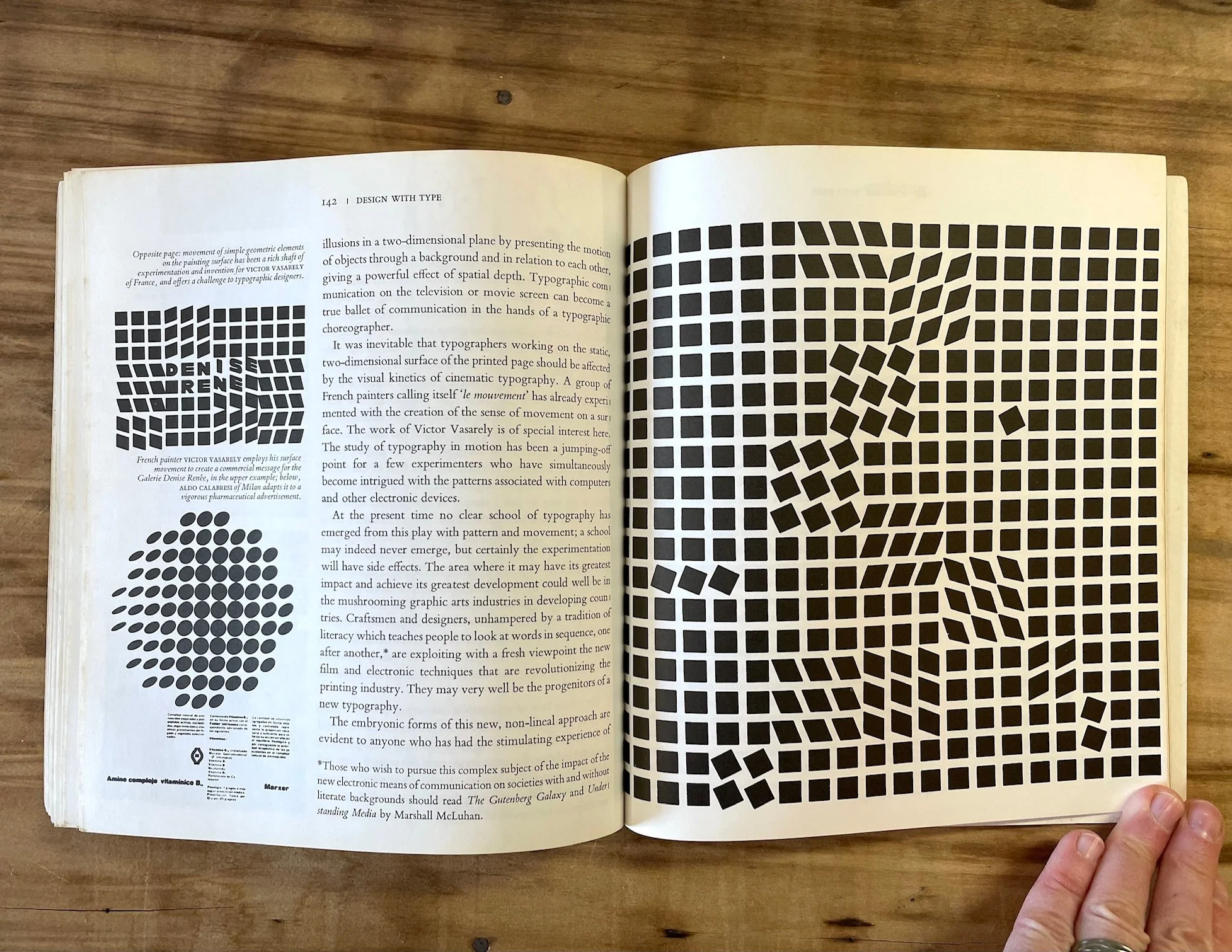
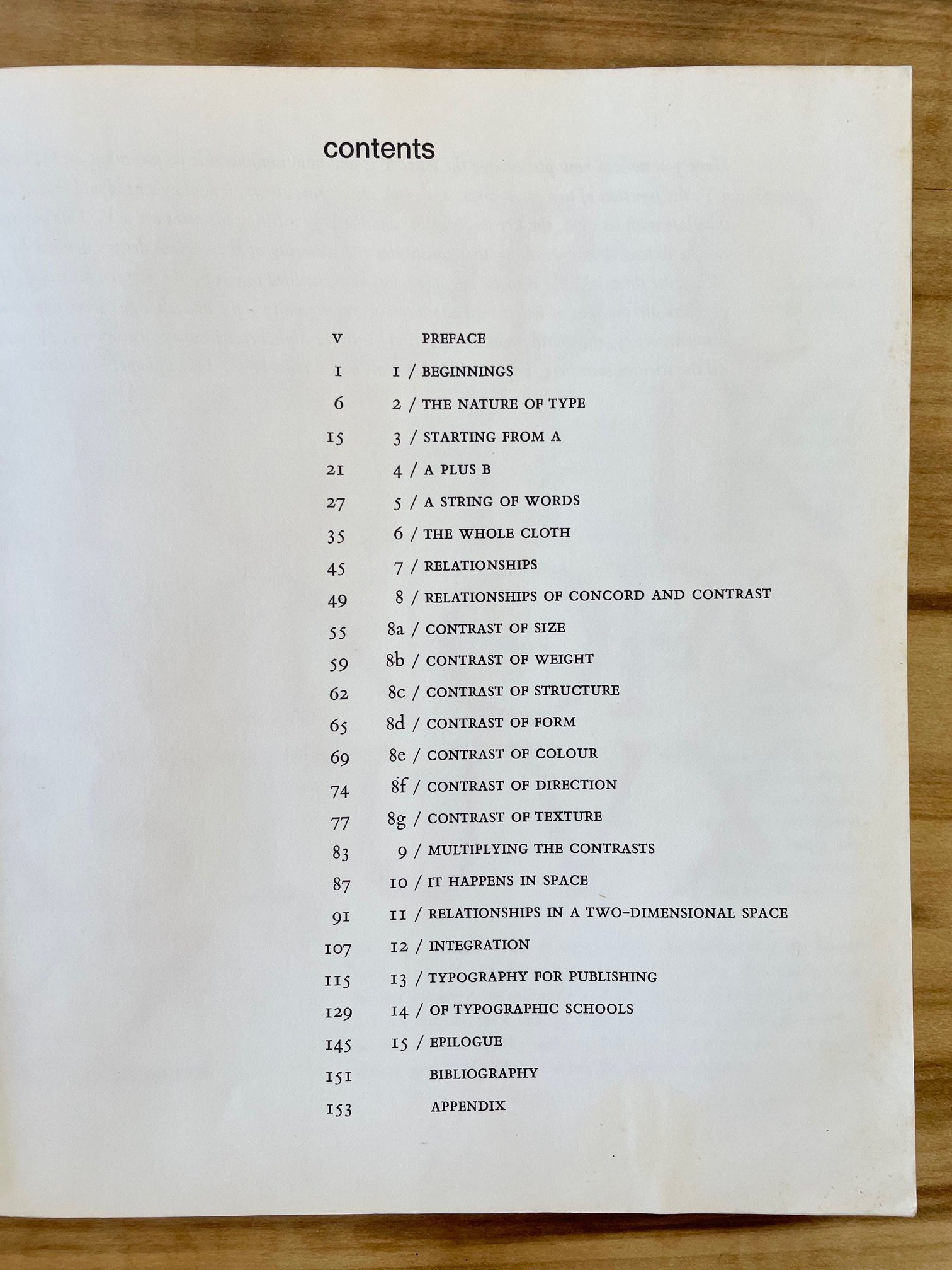
2. Smoke Proofs: Essays on Literary Publishing, Printing & Typography by Andrew Steeves
My Canadian trip destination last autumn was Gaspereau Press in Kentville, Nova Scotia. Established in 1997 by Andrew Steeves and Gary Dunfield, Gaspereau is a relatively small offset- and letterpress-print shop that has had an outsized impact on the literary culture of its home province and beyond. From the digitally designed, offset-printed with letterpress jacket trade editions of poetry and prose, to Steeves’ completely letterpress printed fine press volumes, each book is an impeccably made home for excellent literature. In 2014, Steeves published a book of his own writing called Smoke Proofs: Essays on Literary Publishing, Printing & Typography. Rather than a “how-to” primer on typesetting or page layout, this collection from a true citizen-publisher is more of a what and why, “identifying issues, challenging dogma and agitating for our full and creative engagement with the many challenges we encounter when we set literary works into type and publish the results.” Steeves and his work have always called on me to be my best creative self for the good of the community I serve, and this book is a superlative guide and goad, inspiration and invitation, that I return to regularly. Smoke Proofs is a trustworthy, hand-held compass for anyone adventuring into the wilds of literary publishing and printing.
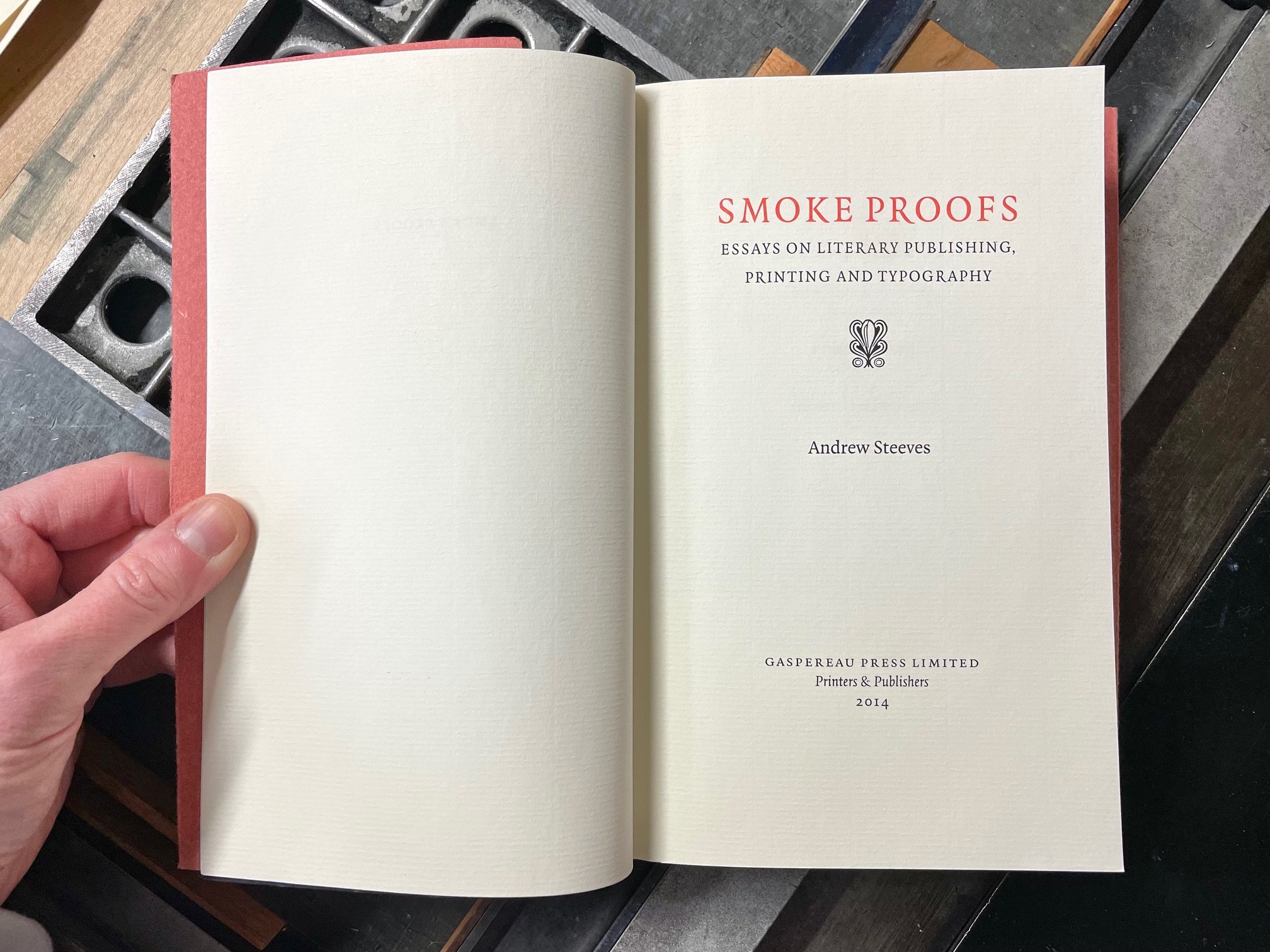
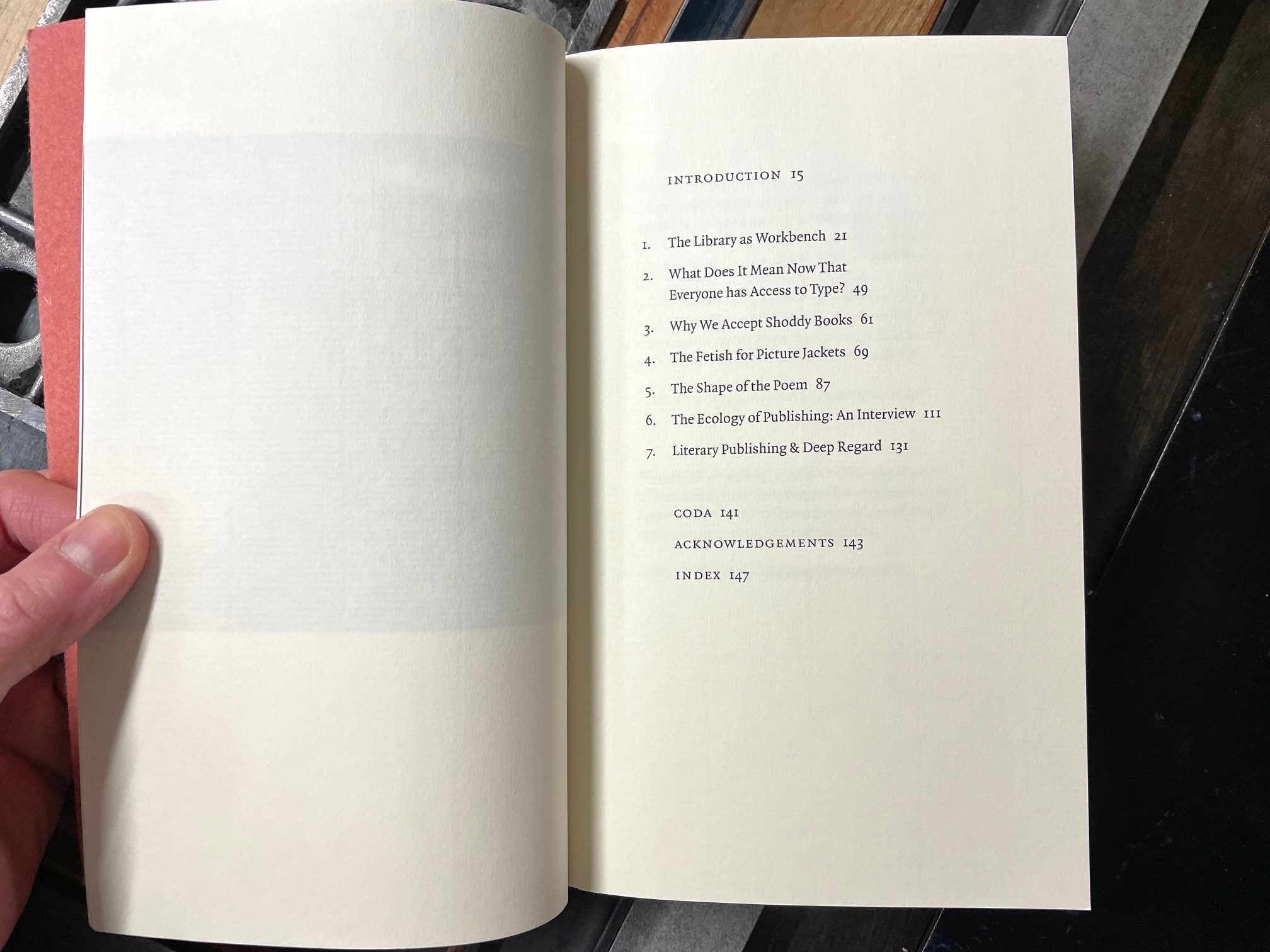
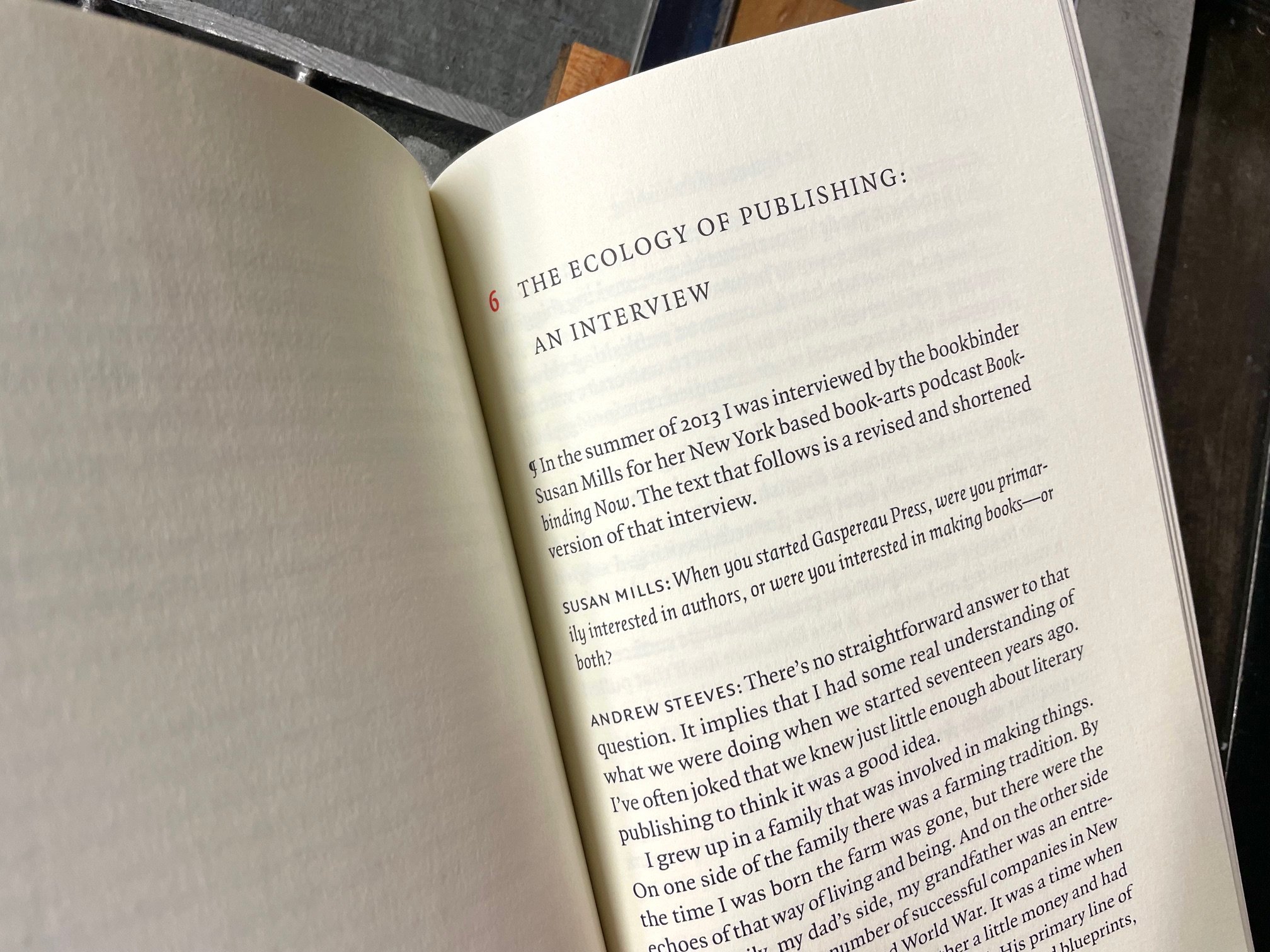
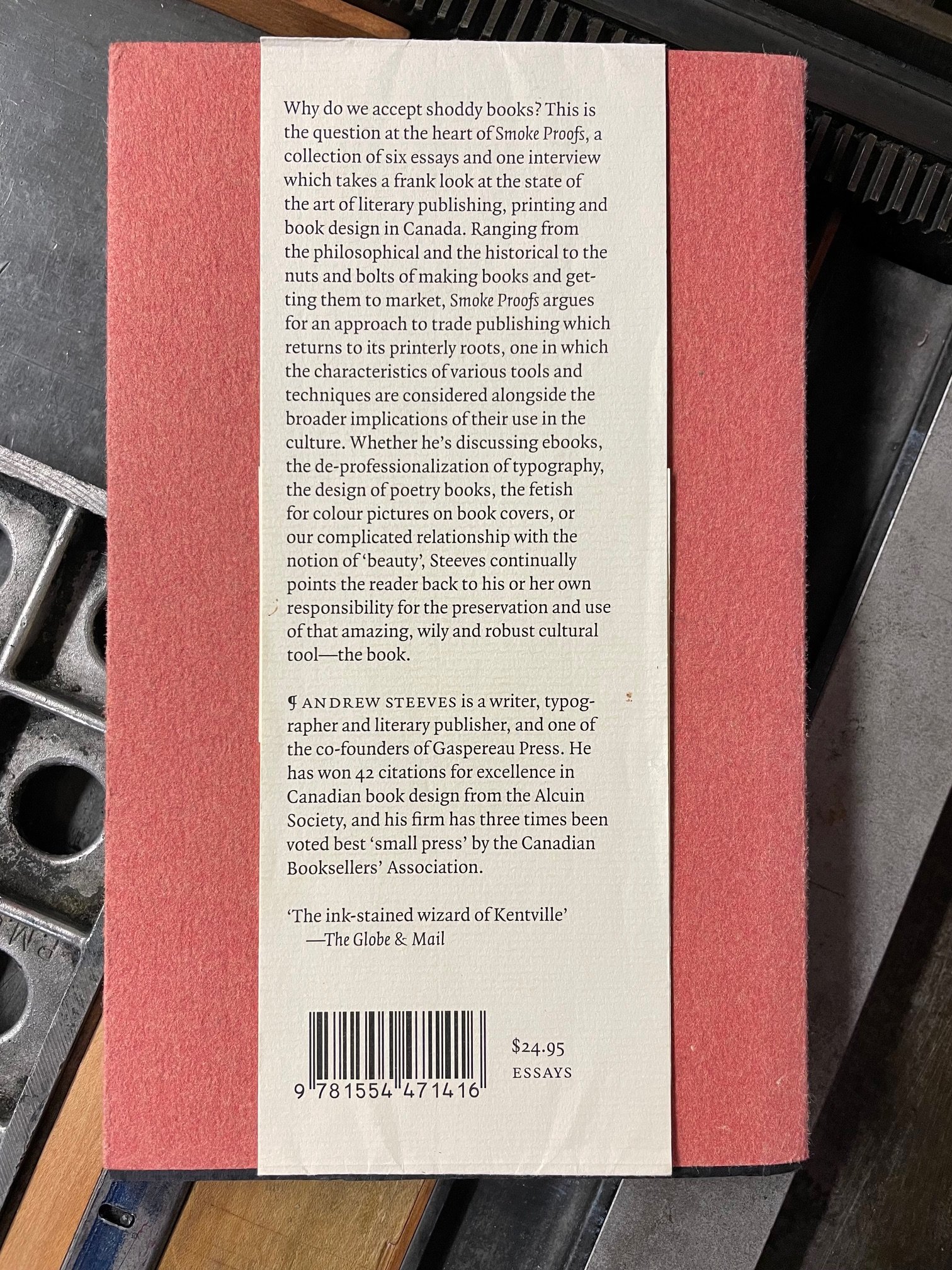
3. Keeping Watch at the End of the World by Harry Thurston
“All of us belong, as much as the black ducks / at rest in the harbour…”
Harry Thurston grew up in Nova Scotia and became a prize-winning poet and environmental journalist, as well as mentor to many students at the University of King’s College. His word-and-image collaborations with the renowned New Brunswick photographer Thaddeus Holownia (several volumes of which have been designed by Andrew Steeves) are exquisite. I was lucky to meet Thurston last autumn and to pick up copies of several of his books published by Gaspereau Press, including the outstanding Keeping Watch at the End of the World. The sea is a central presence in this beautiful collection. Whether writing about his native, booming Bay of Fundy or the Mediterranean’s millennia of layered stories, Thurston’s heart and eye take in and give back to us the intricate, flowing world. His ear, like his pulse, are tuned to the tides — whether oceanic, emotional, or historical. And he is always walking that wrack line, where the sea — whether the sea of time or of memory or of water itself— gives up its mysteries (and takes them back again). Grab a copy of Thurston’s work and enjoy his keen company in “This brief time we have to share / while the tide fills and empties the bay.”
(Apologies for the shadow-dappling on some of these photos below. My photographic error, not on the pages themselves.)
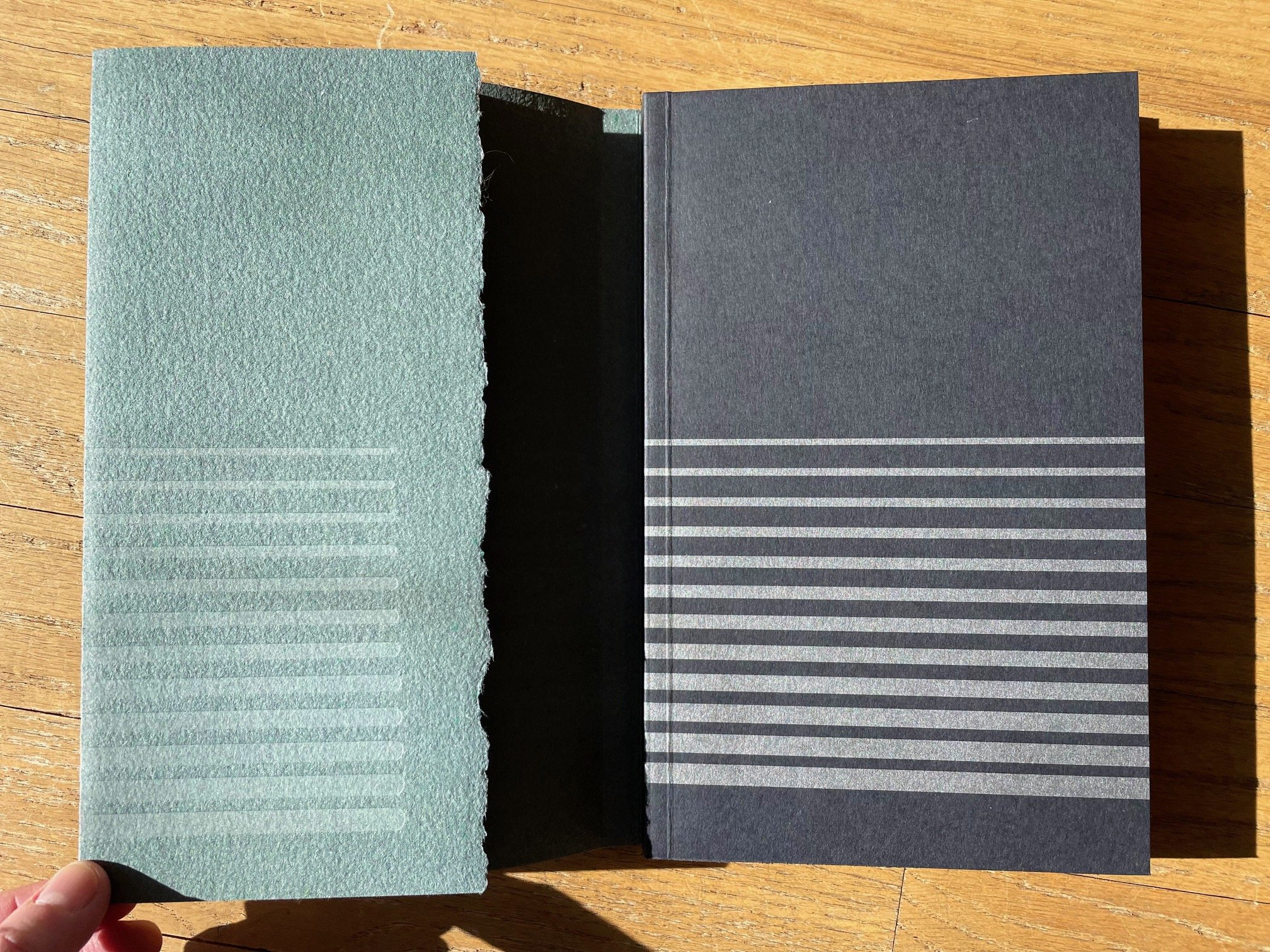
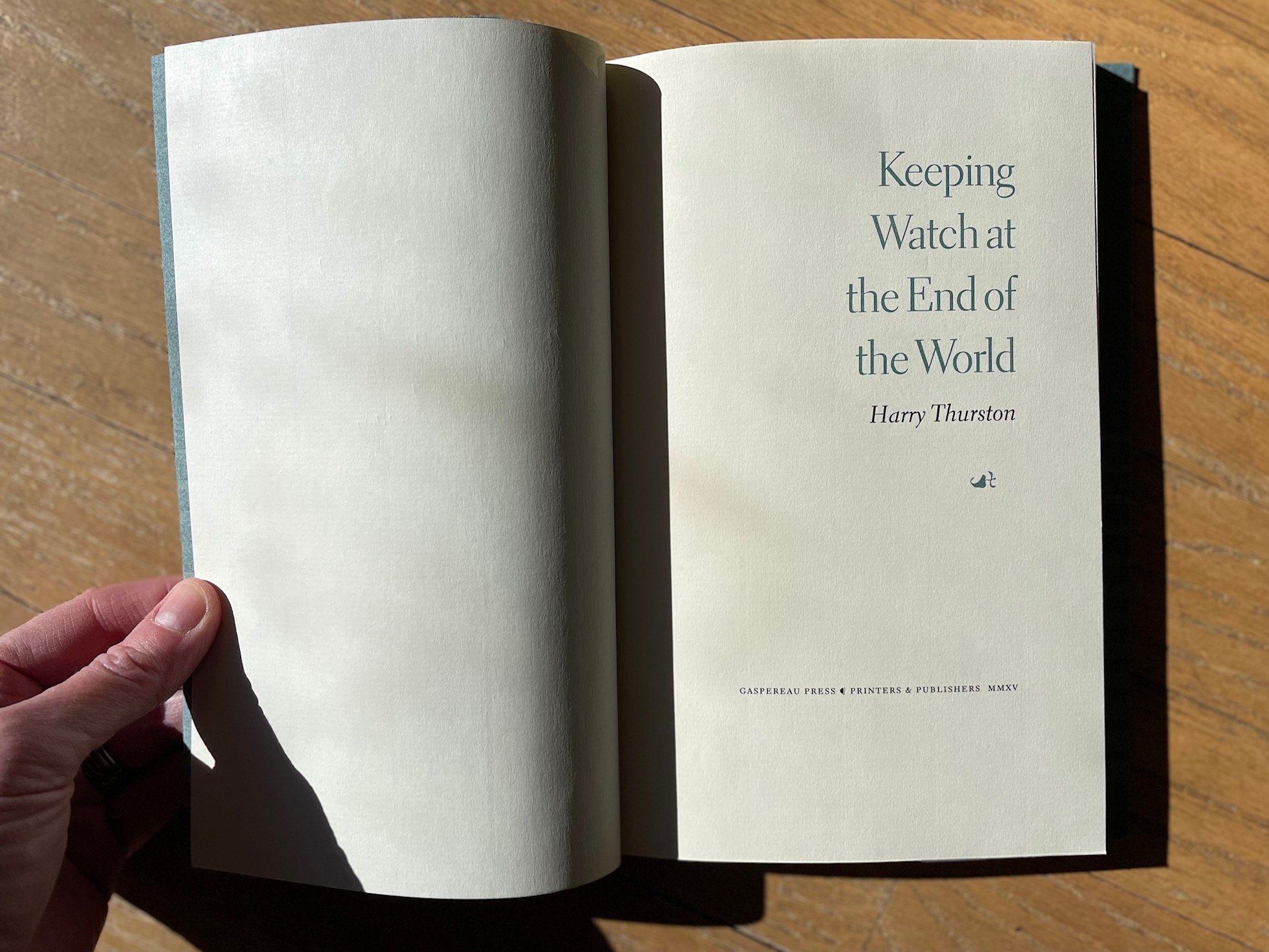
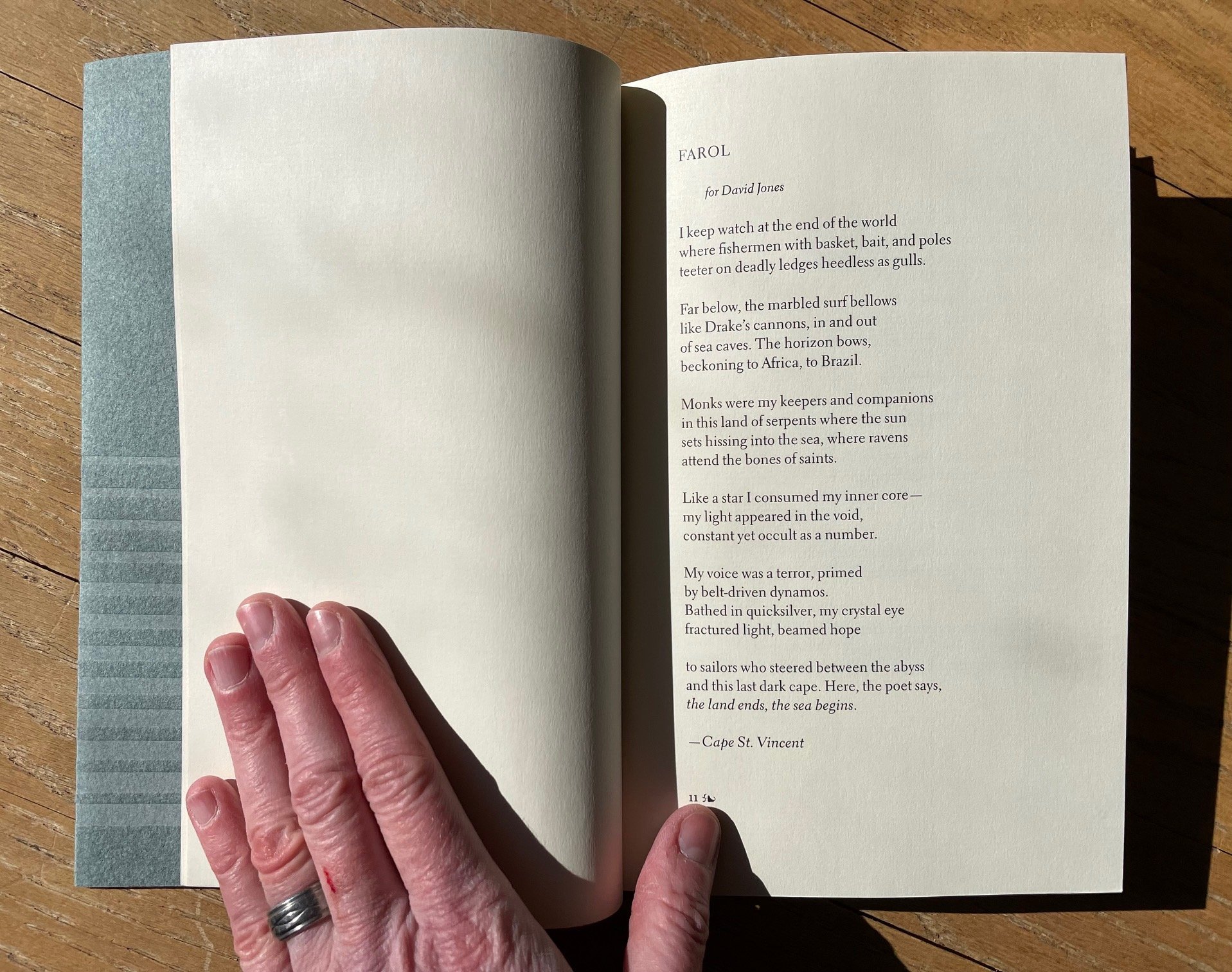
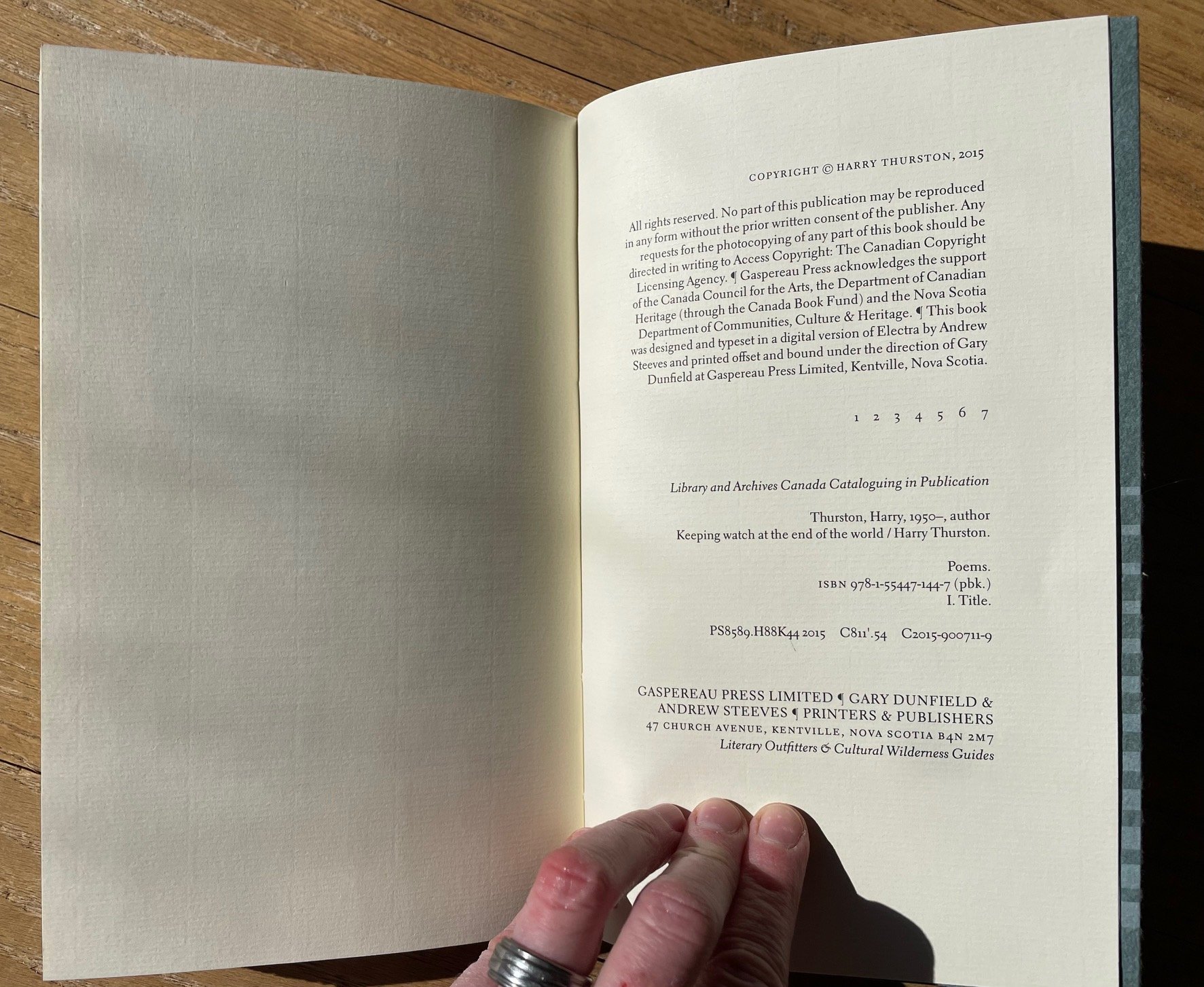
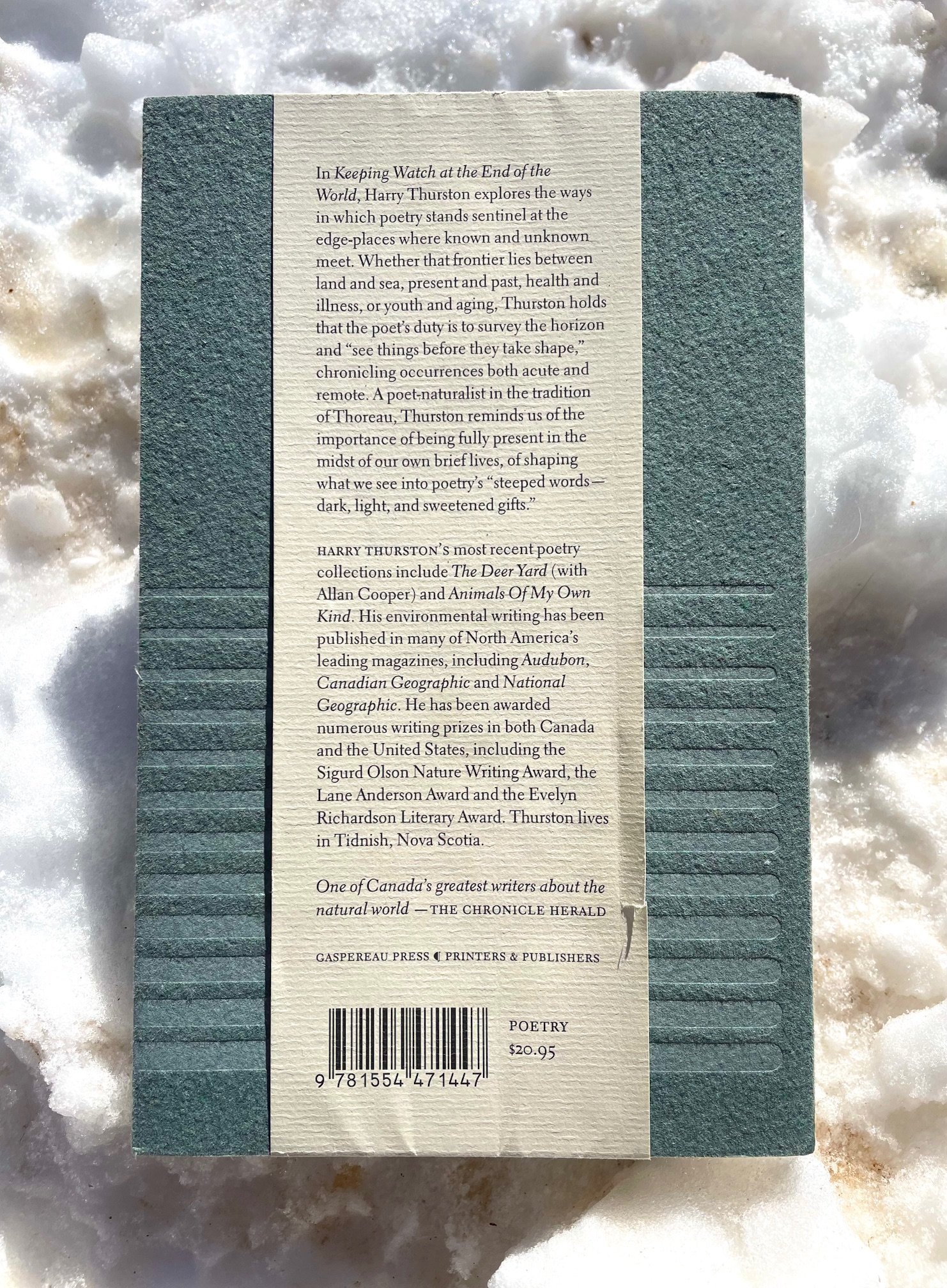
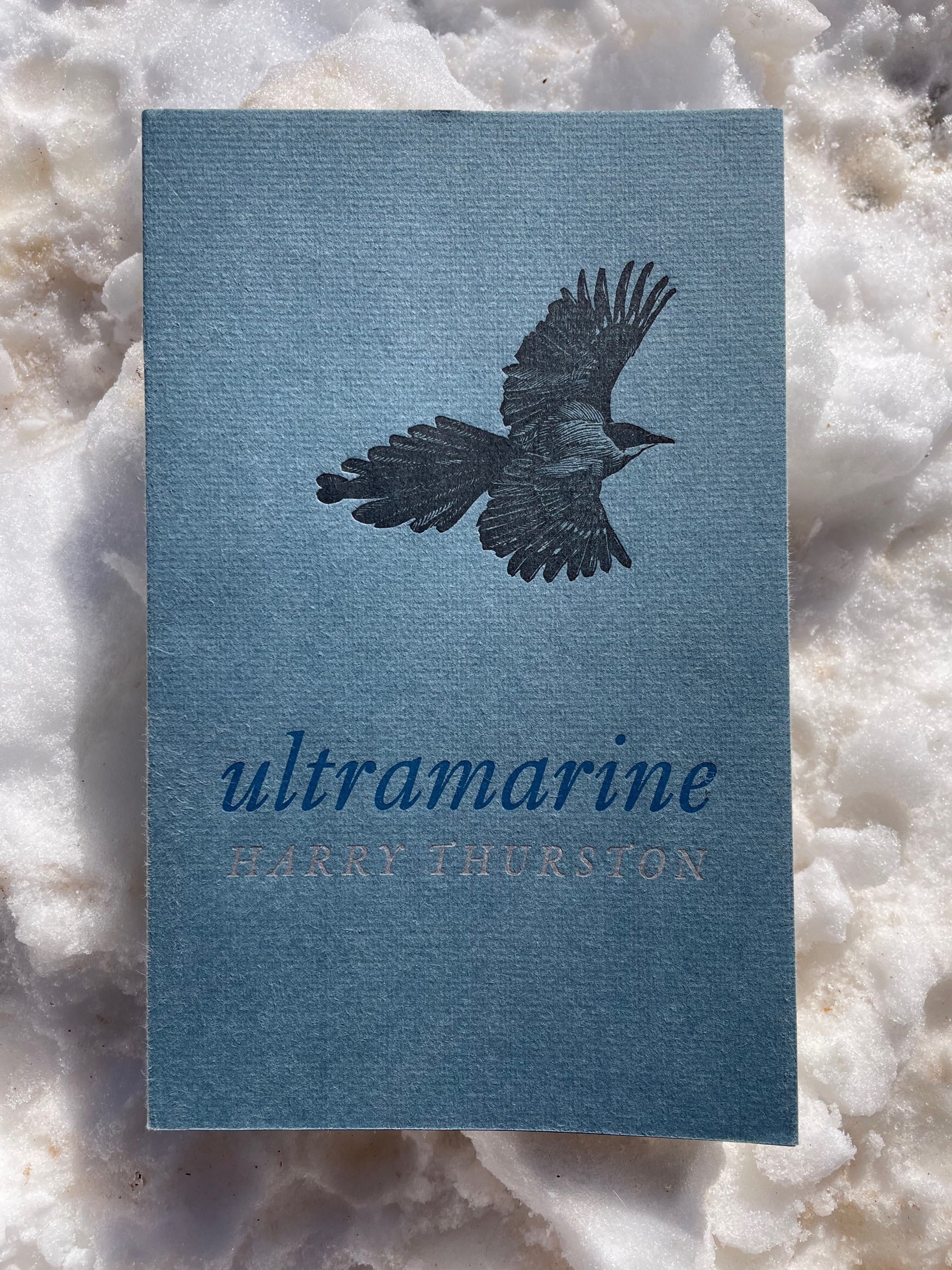
To close out our little trip to Canada, here’s a final word from Carl Dair — this poster hangs in a prominent position at St Brigid Press:
Well, that’s all for now, friends, as I gotta get back to setting some type ;-) Stay tuned for future installments of Book Looks, and in the meantime, be well and read on!
Emily
